From Rinnouji, we walked to the Toushouguu Shrine (東照宮). This is probably the most famous shrine in Nikko and the final resting place for the remains of Japan’s greatest shogun, Tokugawa Ieyasu.
Apparently before the great Shogun died, he instructed 「日光山に小さな堂を建てて勧請し、神としてまつること。そして、八州の鎮守となろう」 which, according to my own clumsy translation, goes something like this “In the mountains of Nikko, I request that a small shrine deifying myself be built. And so, I desire to become the guardian of the Eight States [Japan].”
After his death, his son Shogun Hitetada followed this request and a shrine was built. However, his grandson, the Shogun Iemitsu decided the shrine was not lavish enough given the importance of his grandfather, and ordered the “small” shrine to be greatly expanded, with the end result that it became the completely over-the-top and gaudy set of structures that it is today (it took over 4.5 million people just under one-and-a-half years to do the renovation and expansion – at a cost equivalent of over 40 billion yen in today’s currency). When Iemitsu died, his remains were interred in the almost equally lavish mausoleum of Taiyū-in Reibyō (大猷院霊廟).
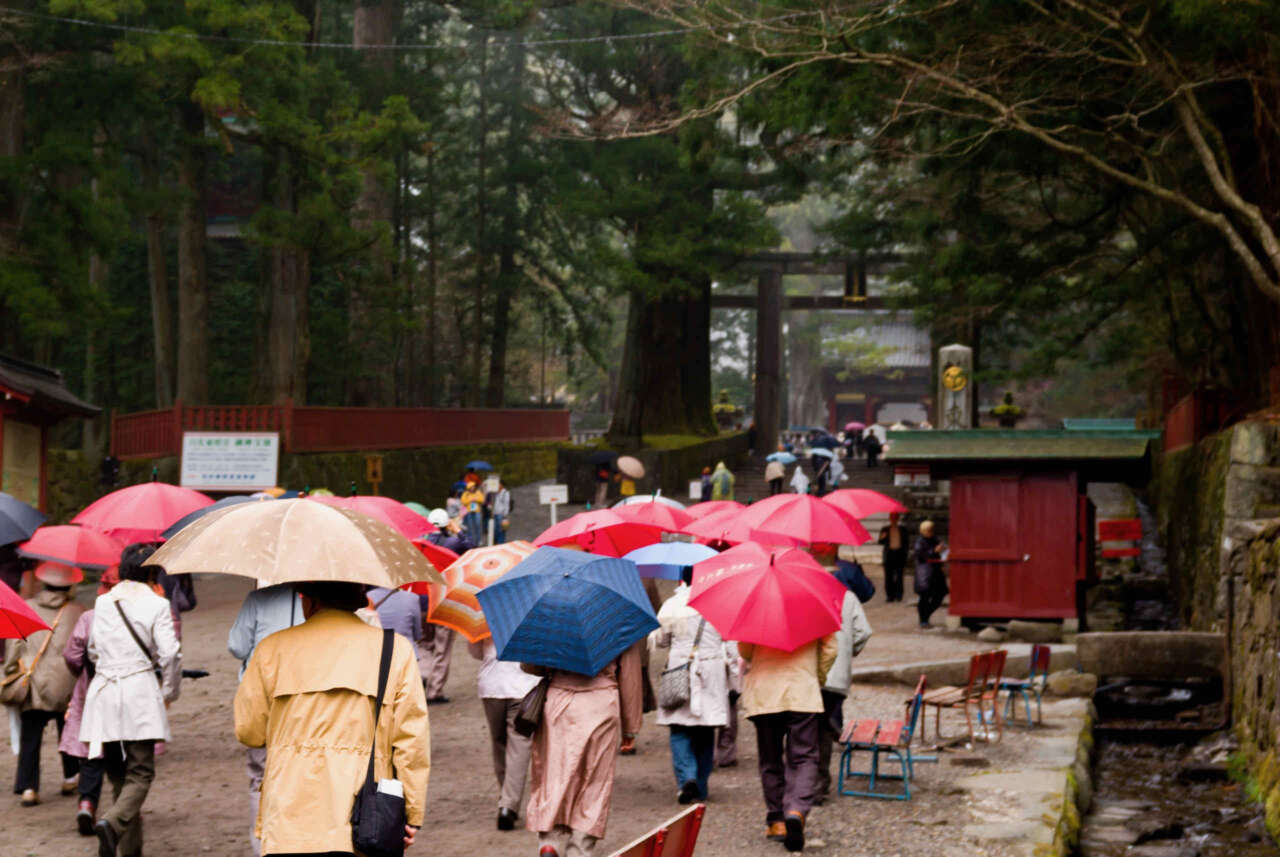
Toushouguu is but a short walk from the temples of Rinnouji.
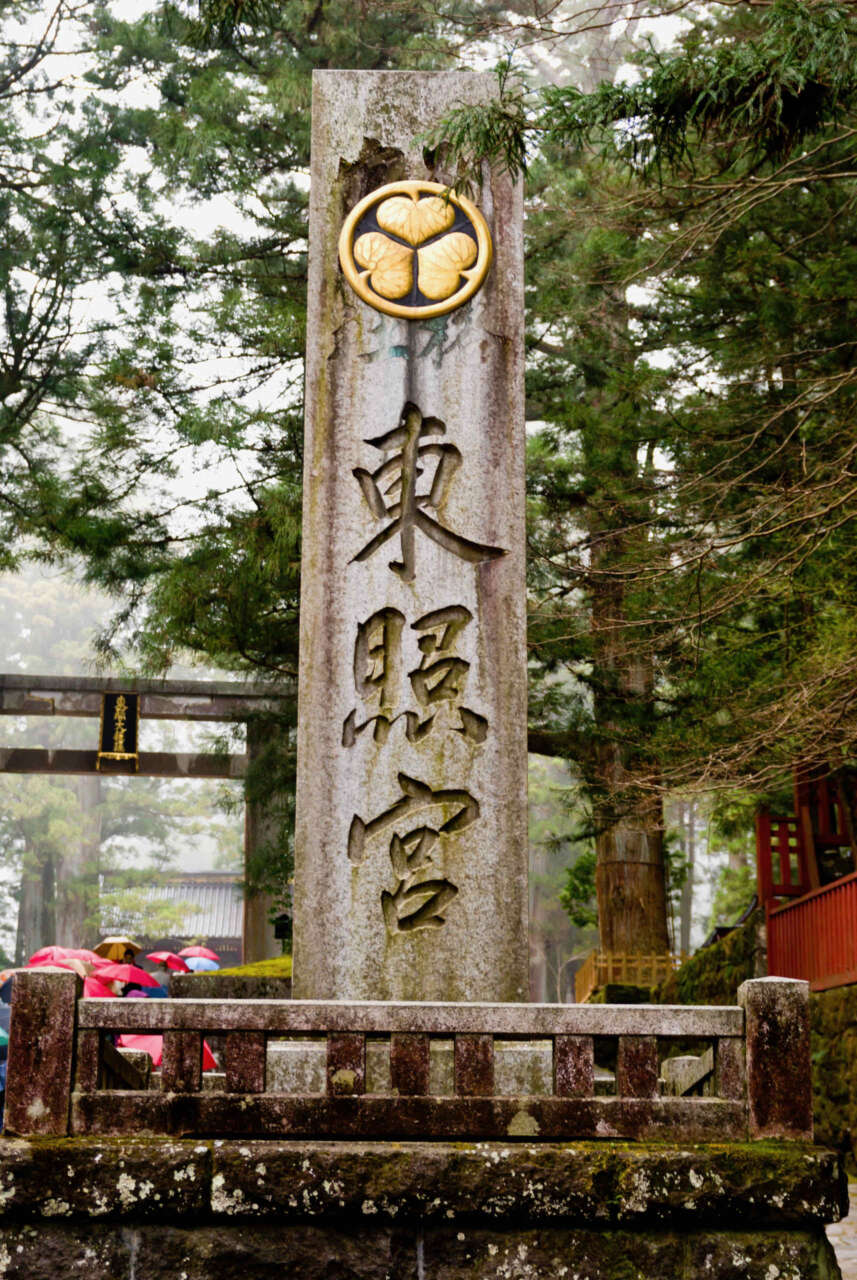
This massive stone plaque heralds the entrance to the shrine.

A nearby map conveniently shows the various structures around the area.
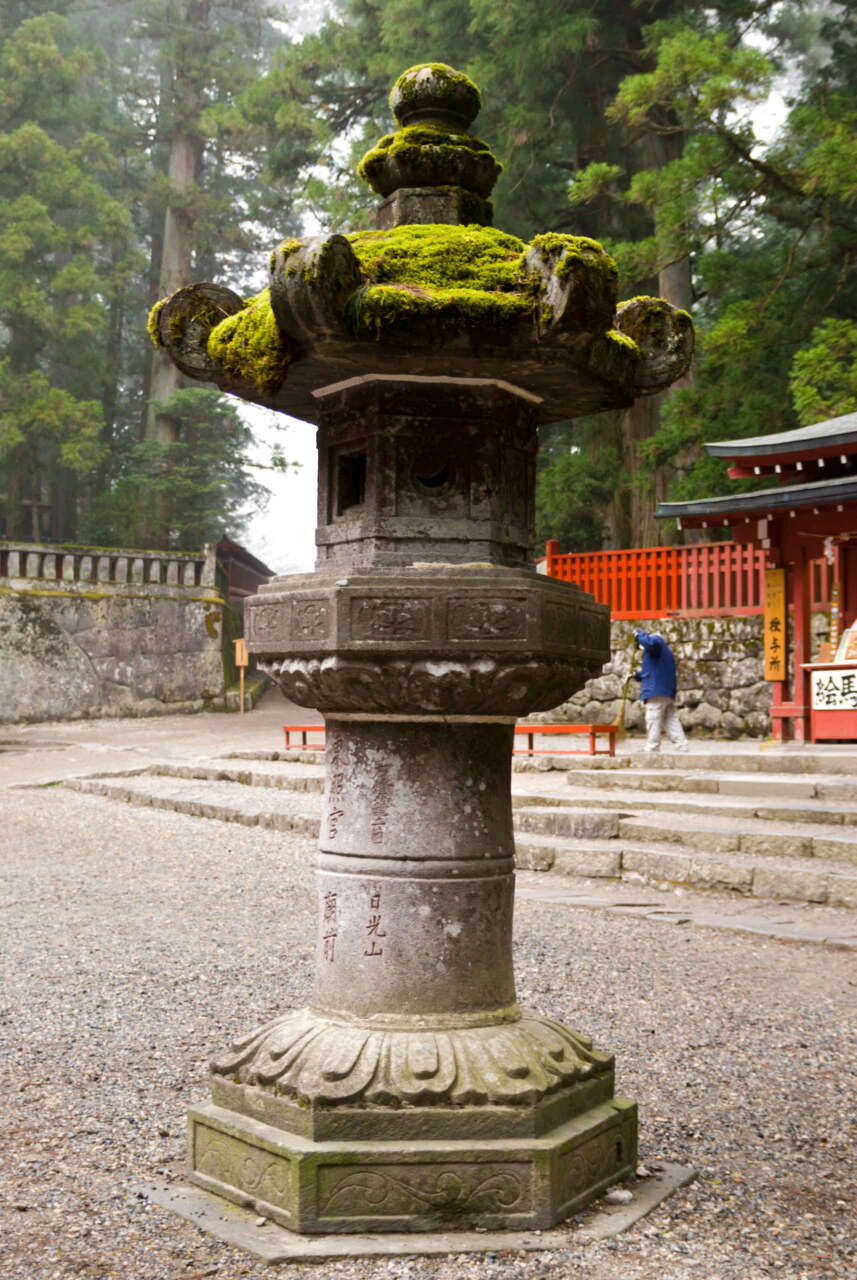
A moss covered stone lantern.
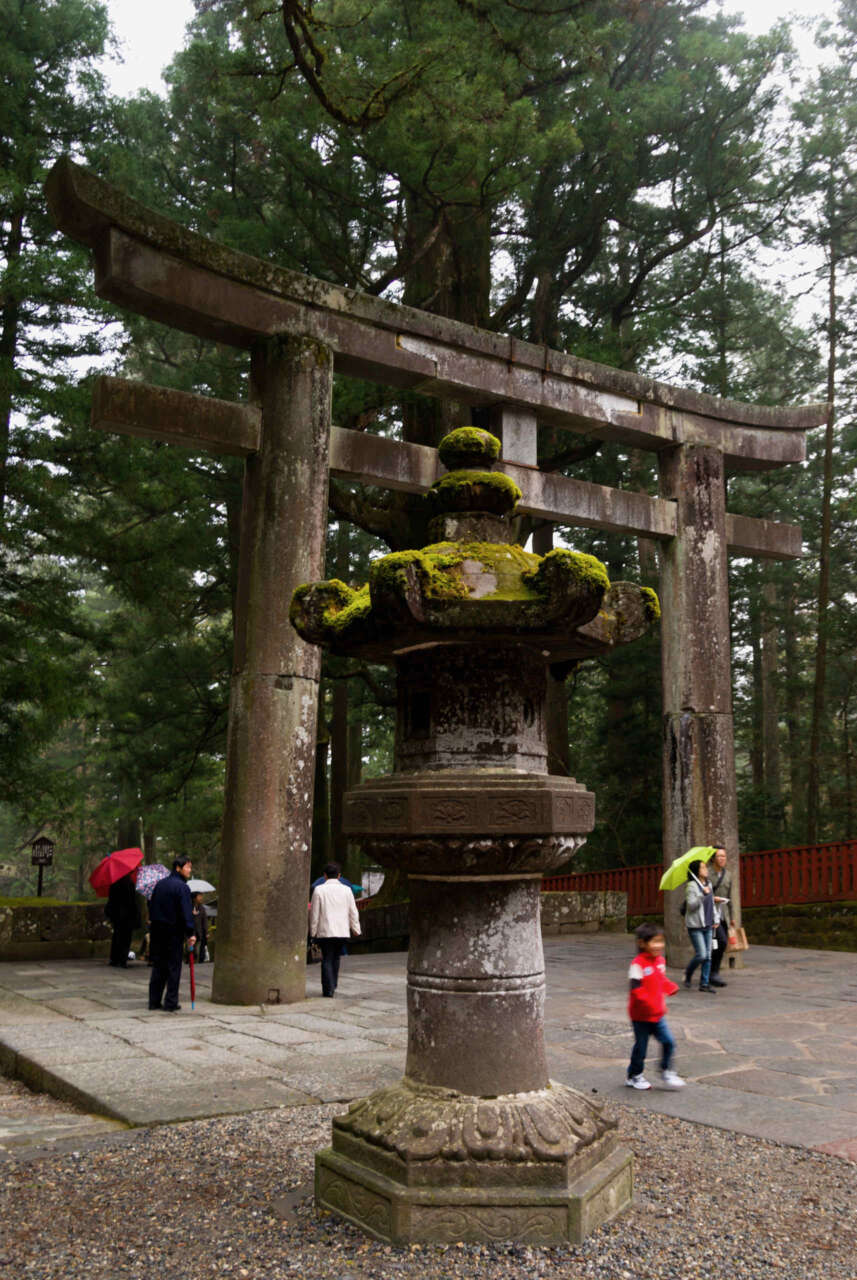
The lantern in front of the Ishidorii (石鳥居) – one of the three best made stone toriis in Japan – made out of 15 granite stones connected by axles and crossbars. The design is supposed to be earthquake proof – it is said that the joints of the crossbars slipped in the earthquake of 1949 but then slipped back into position during one of the aftershocks.
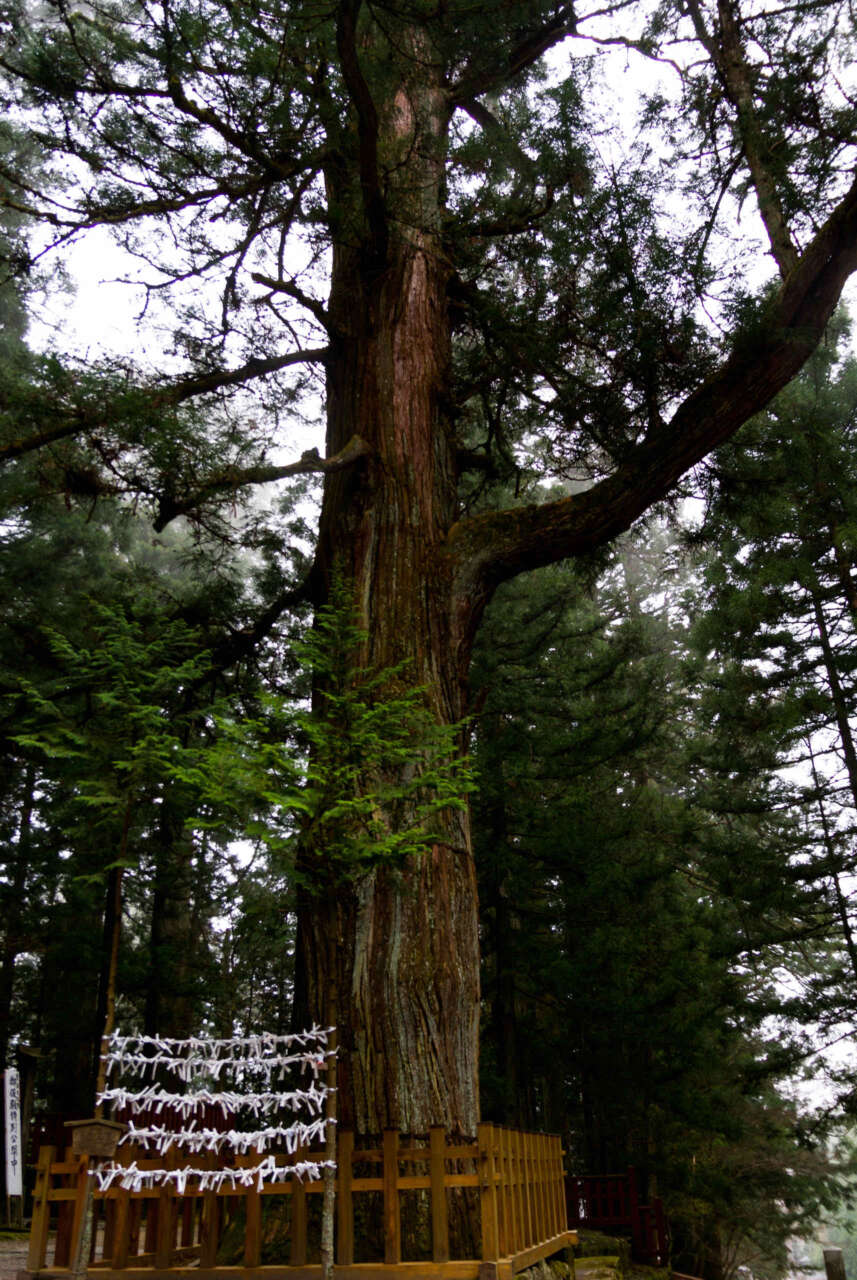
Kouyamaki – Sacred black pine (高野槇).
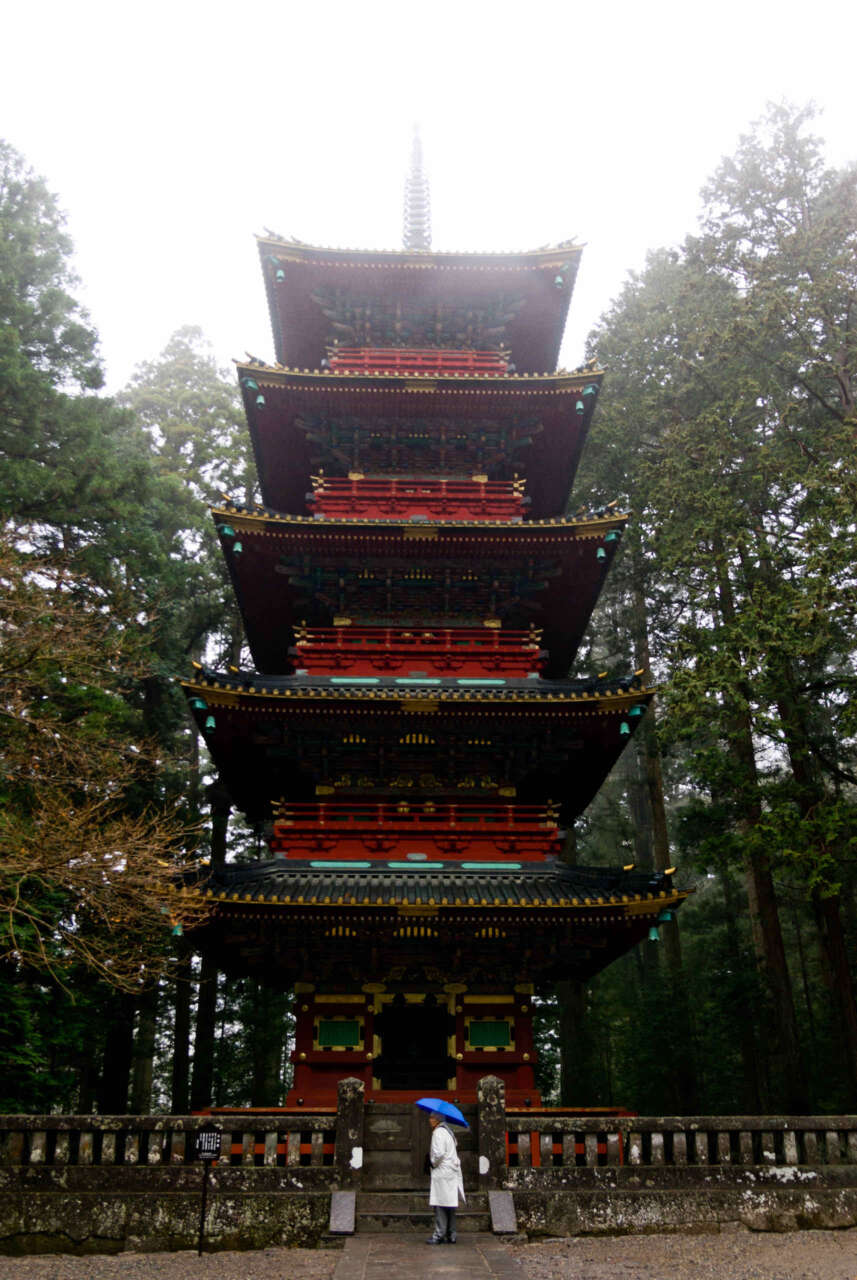
Five storied pagoda (五重塔), which enshrines the statue of the Five Wisdom Budhha. Originally built in 1650, it was destroyed by fire in 1815 and rebuilt four years later. There are no “floors” between each storey, and the central pillar is suspended from the fourth floor by chains, and floats about 10cm above the ground for protection from earthquake.
Approaching the front gate of the shrine – Omotemon (表門). It is also called the Niou gate because of the statues of the two Deva Kings (仁王) on each side of the gate.
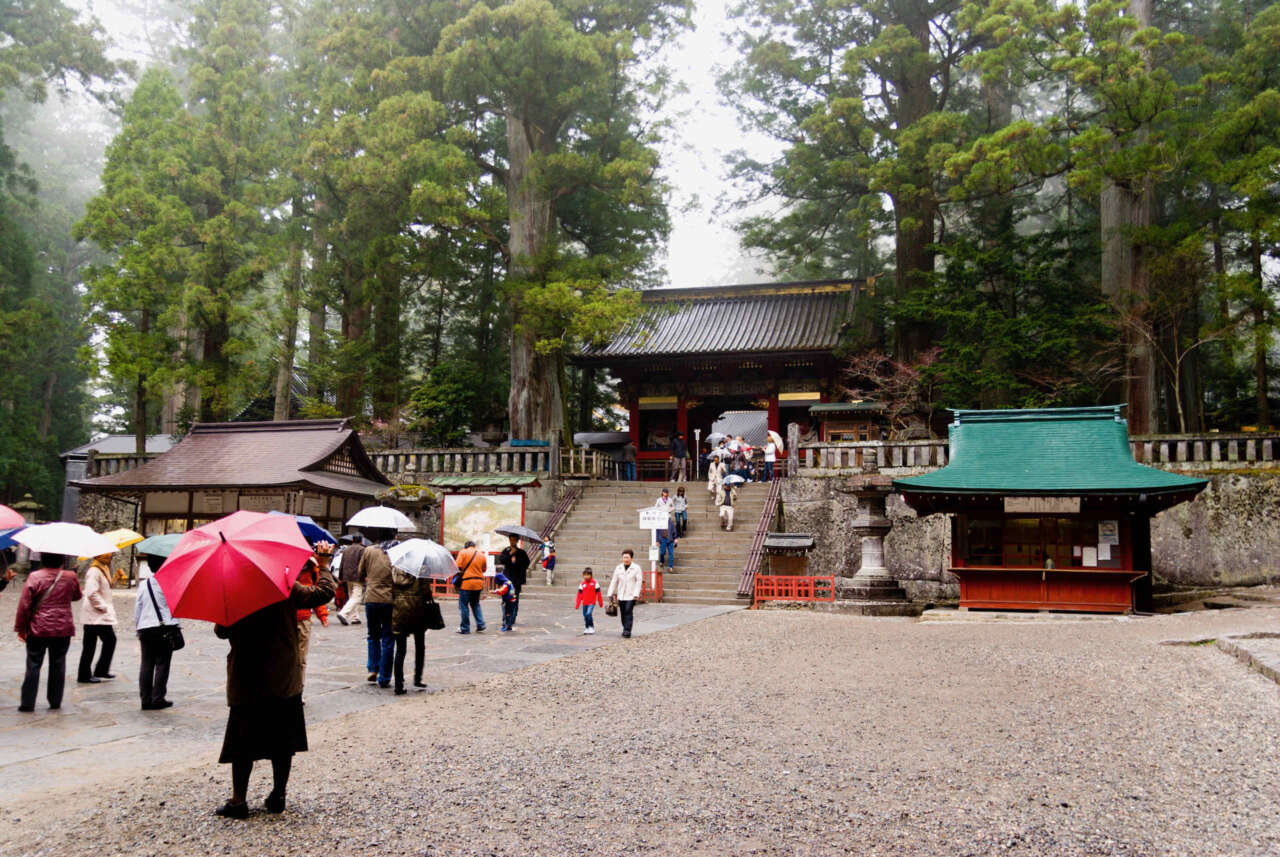
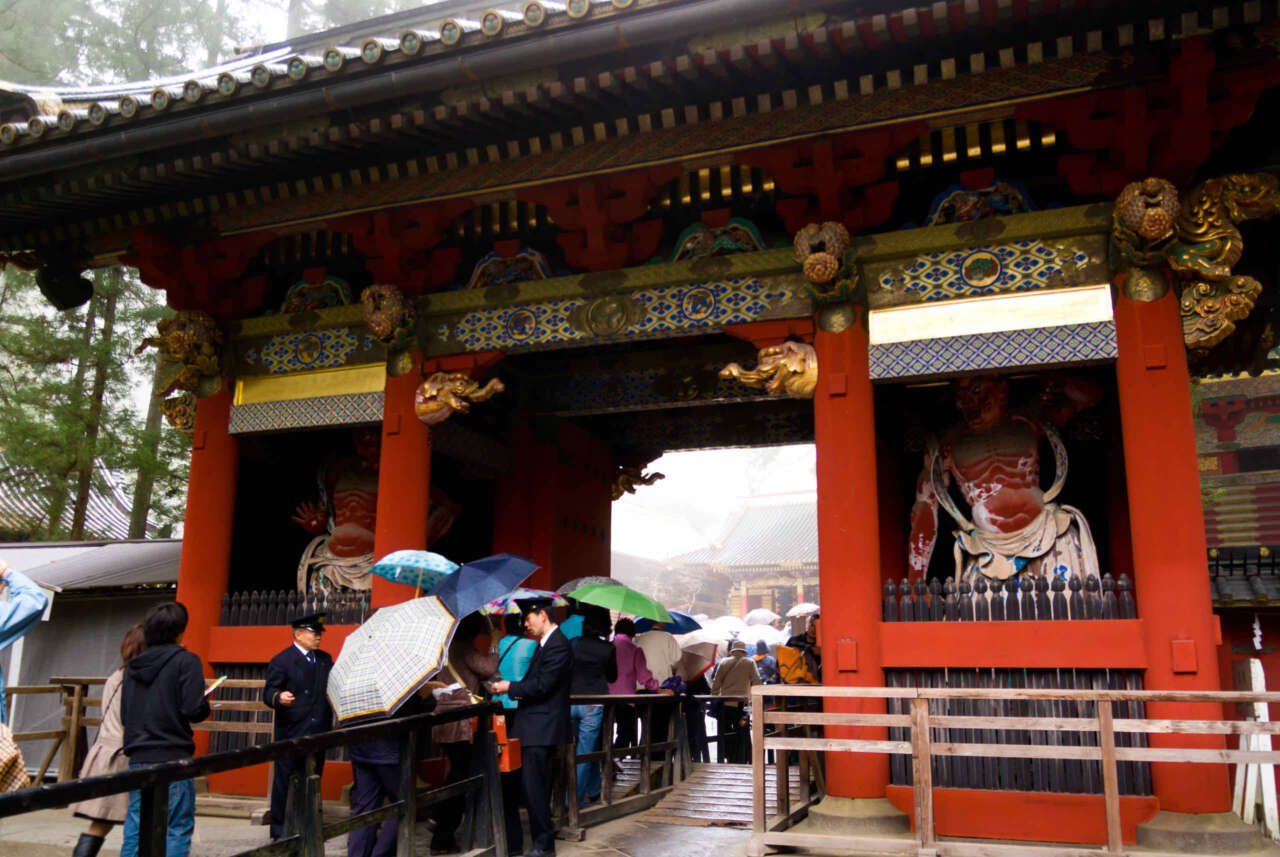
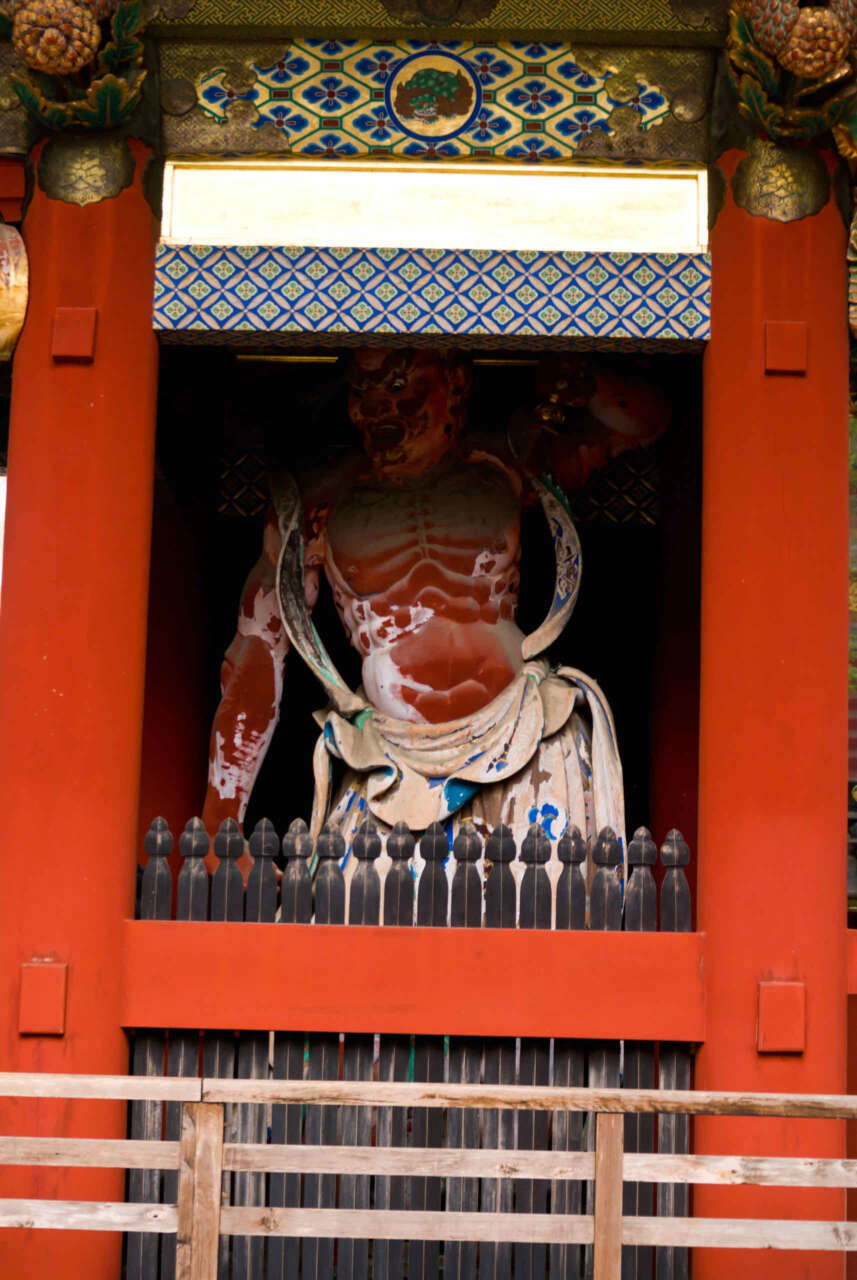
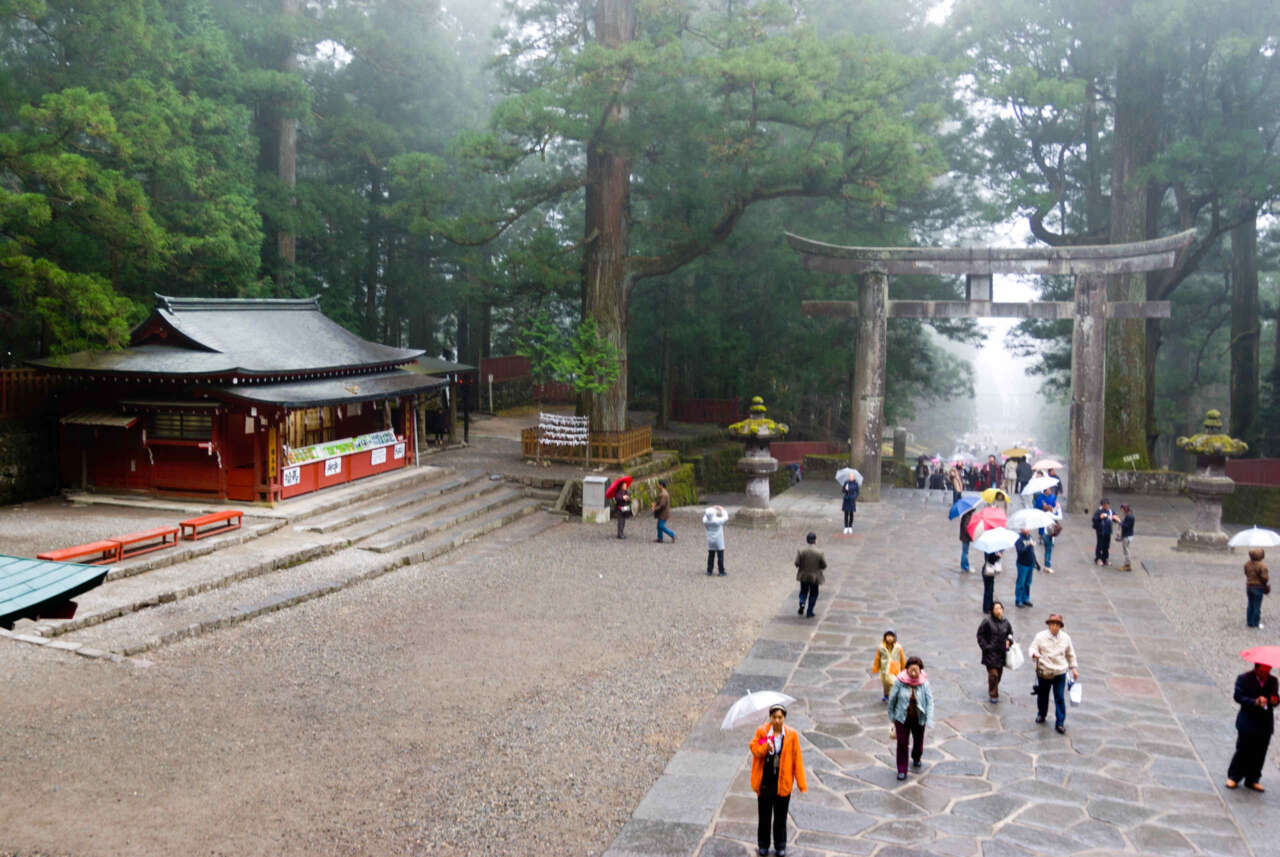
View of the guardhouse, black pine, and Isidorii from the Omotemon.
After going through the gate, we immediately encountered the three sacred warehouses (三神庫) – these are used to store the 1,200 samurai costumes and archery equipment for the annual spring festival (held on 17/18 May) called “Parade of 100 things and one thousand uniformed men” (百物揃千人行列) – this replicates the journey taken to move the remains of Shogun Ieyasu into the shrine. The procession also features three sacred horses, and three portable shrines.
The most ornate of the three sacred warehouses is the upper one, called Kamijinko (上神庫).
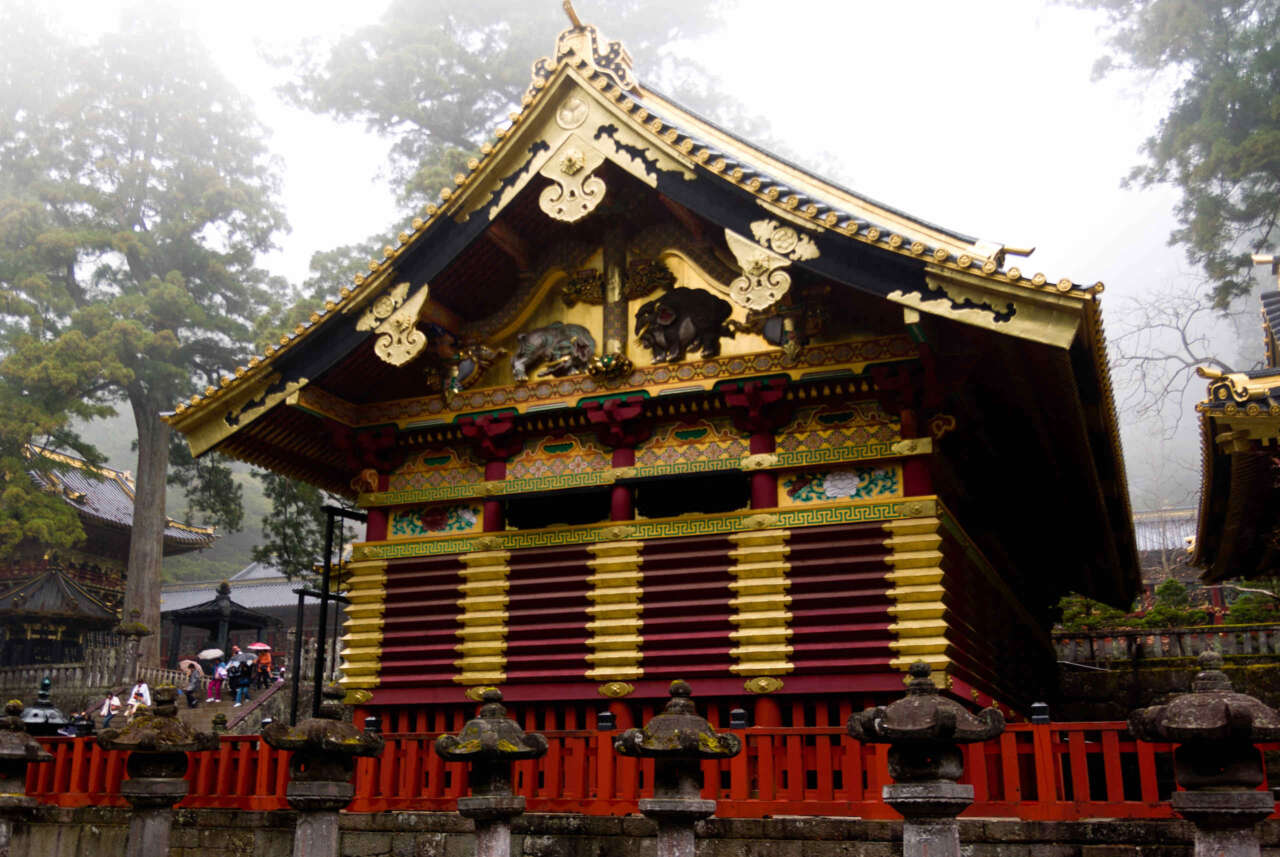
The most ornate of the three sacred warehouses is the upper one, called Kamijinko (上神庫).
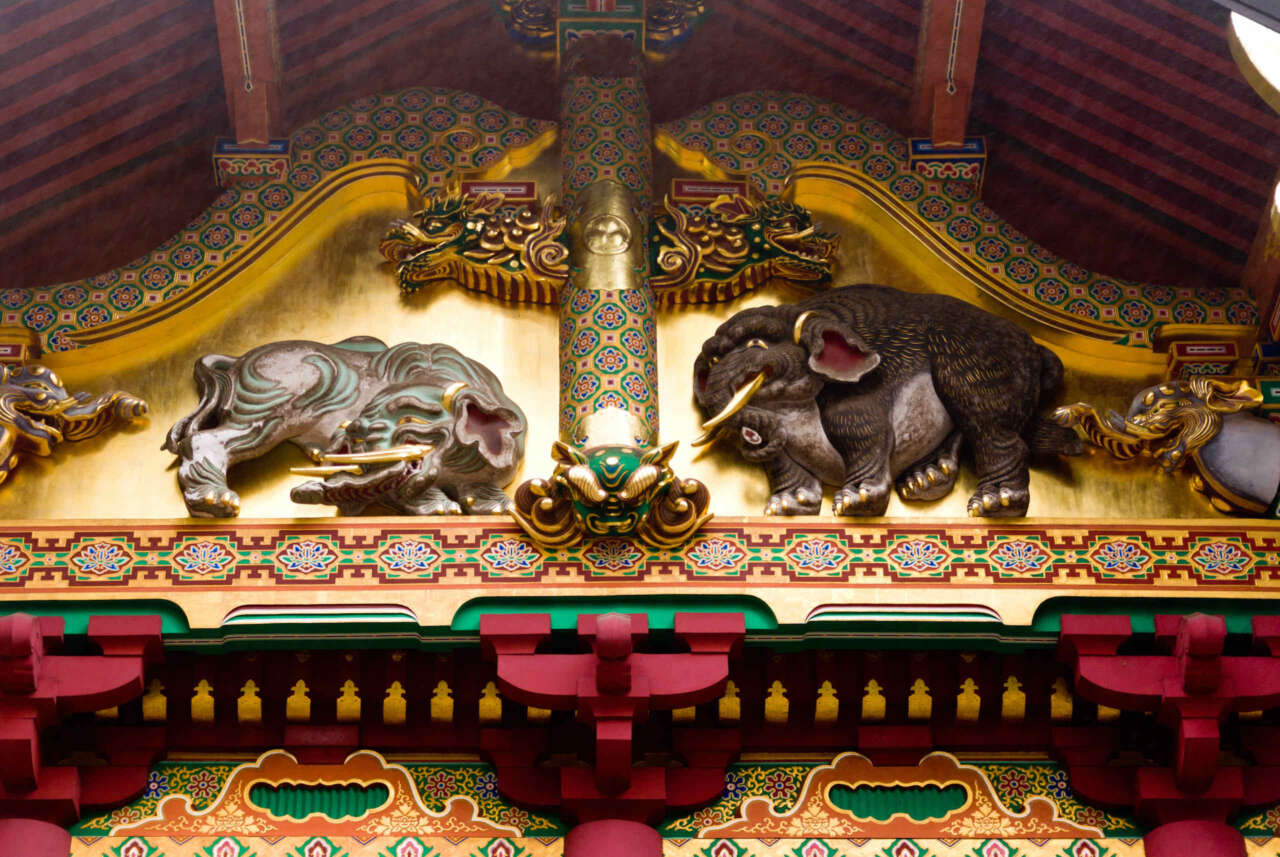
Note that the gable of the Kamijinko has two elephant sculptures, but if you look closely at the sculptures, the elephants have anatomically incorrect ears – that’s because the sculptor has never seen an elephant in real life and was working off written descriptions of the animal.
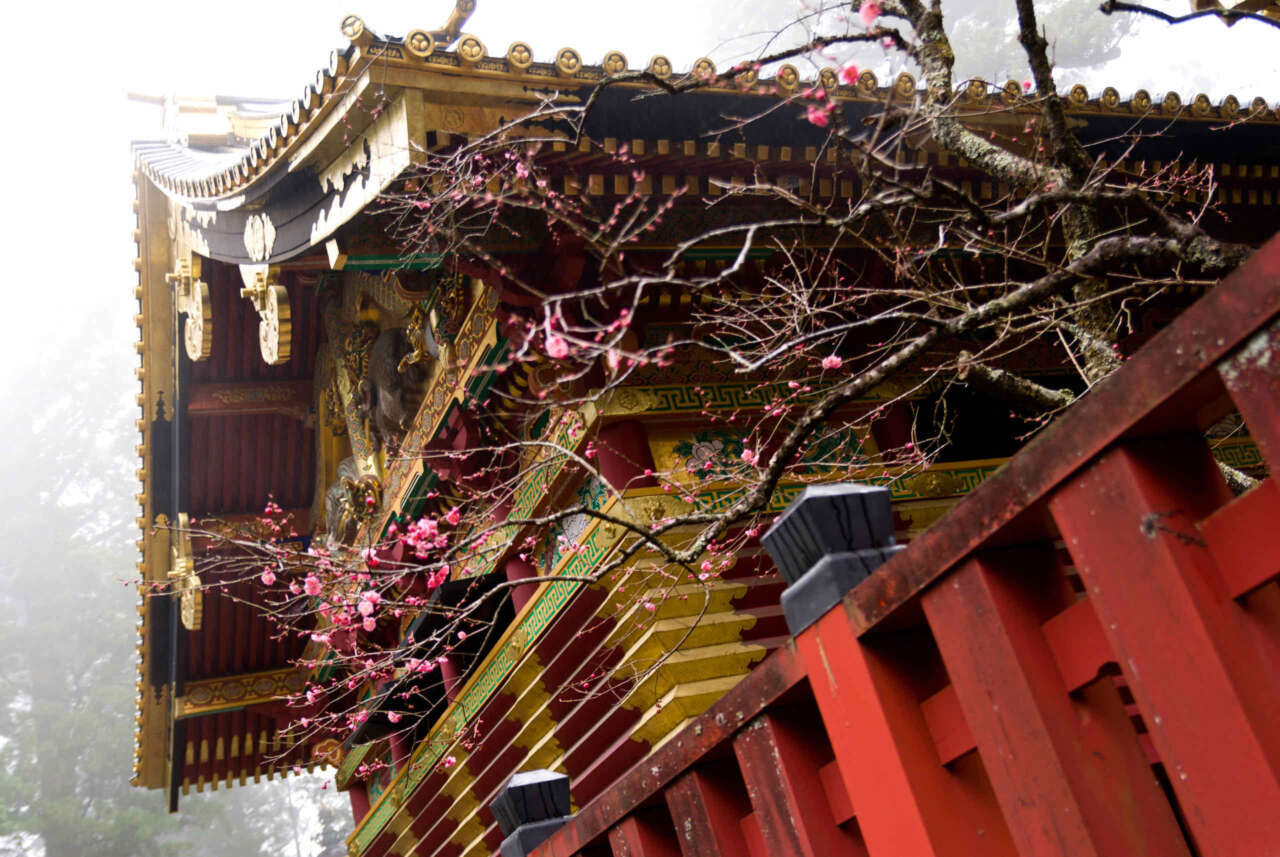
I love this photo of the upper sacred warehouse fronted by cherry blossom in the mist:
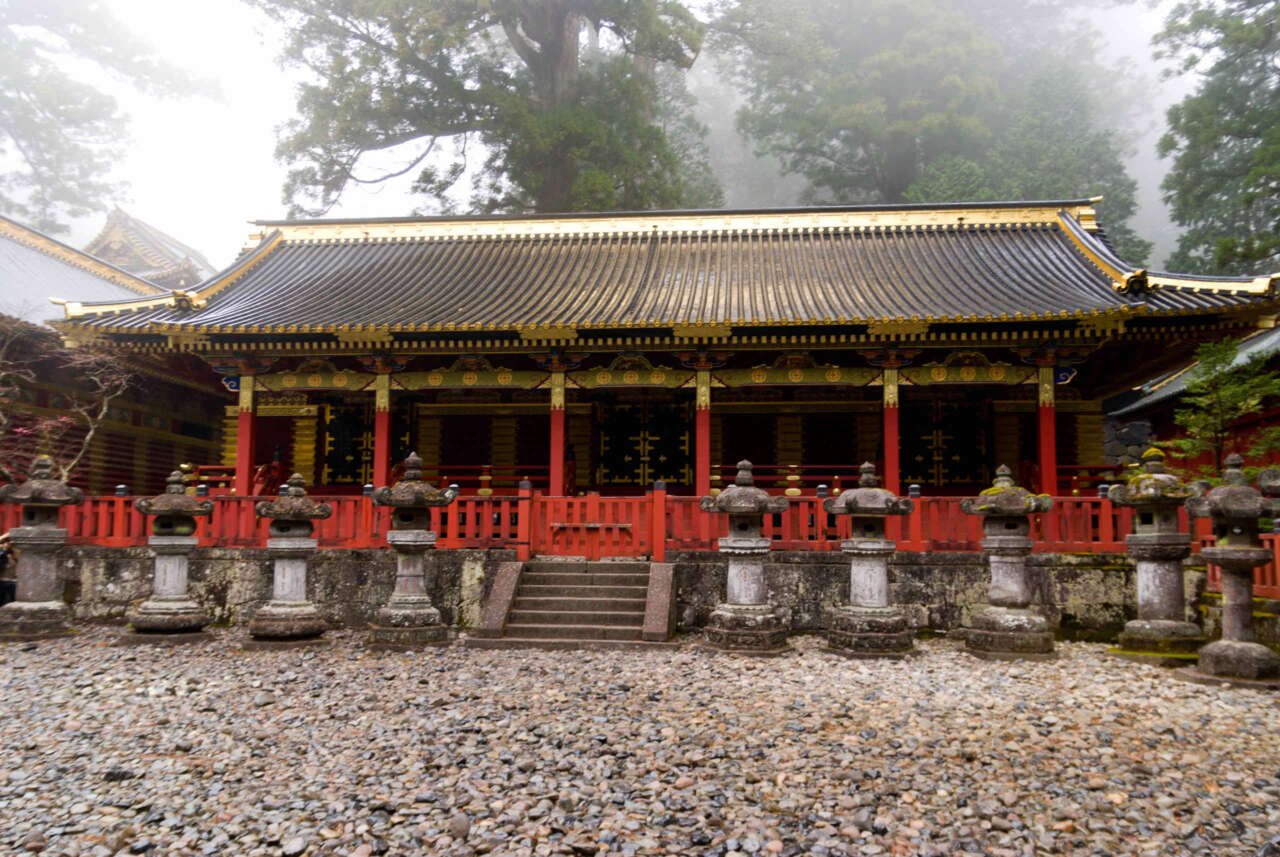
The middle sacred warehouse (中神庫) is less ostentatious on first sight.
But there’s still incredible detail in the beams and doors.
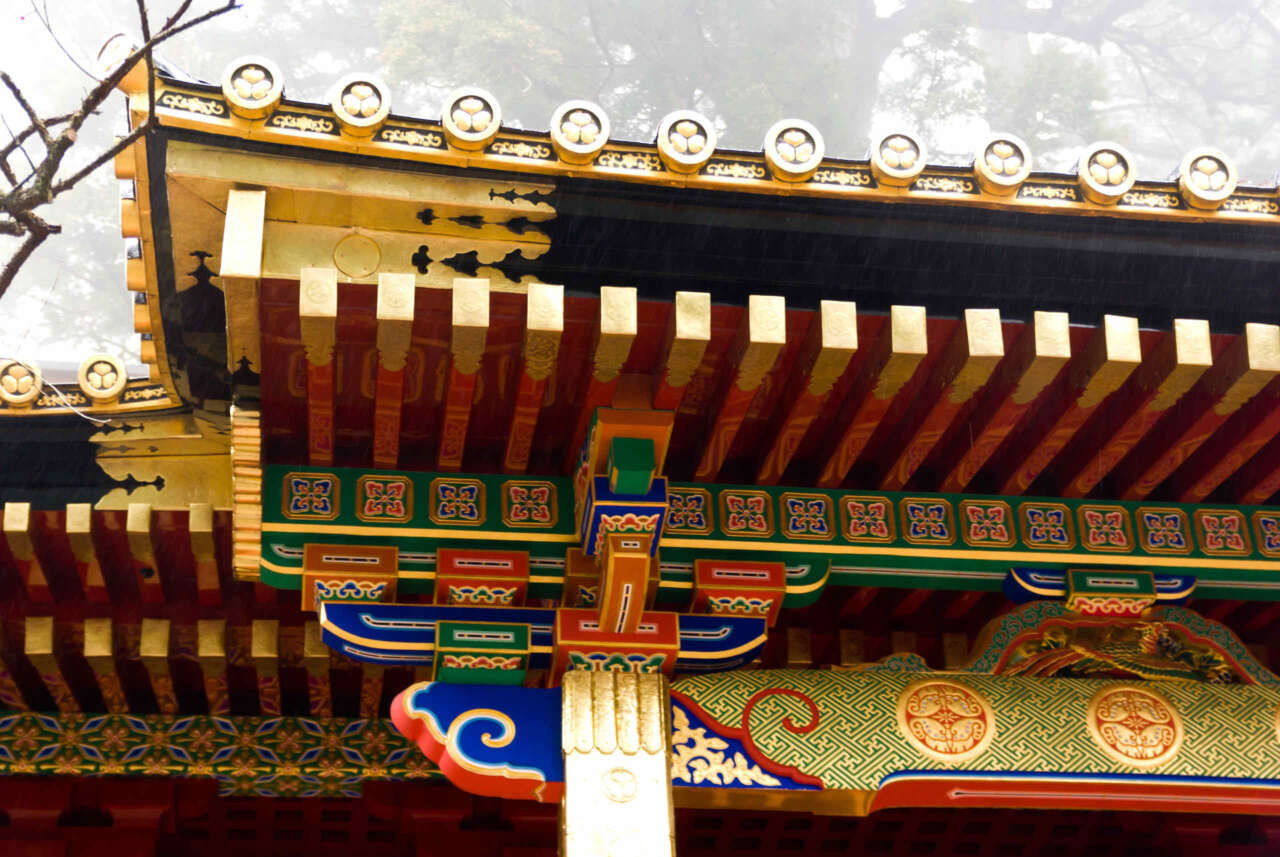
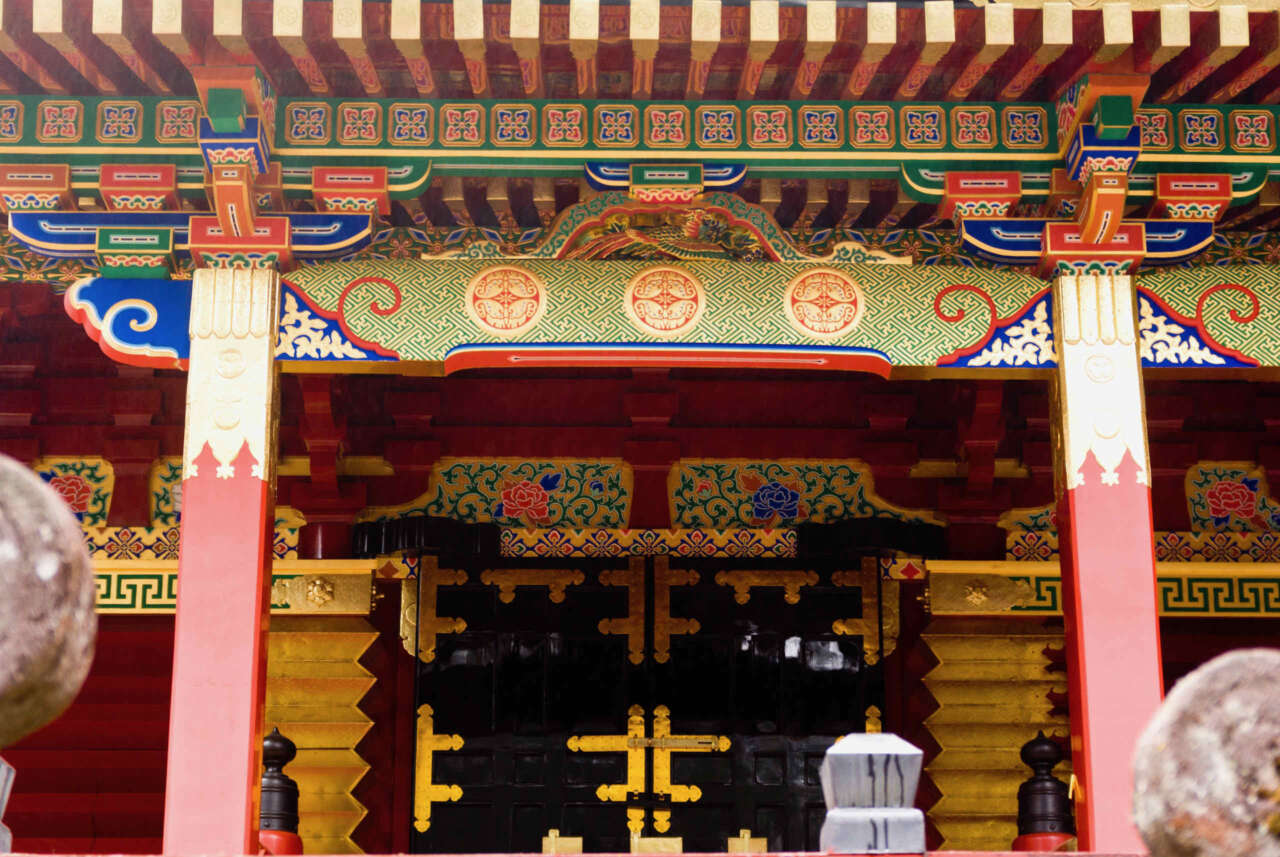
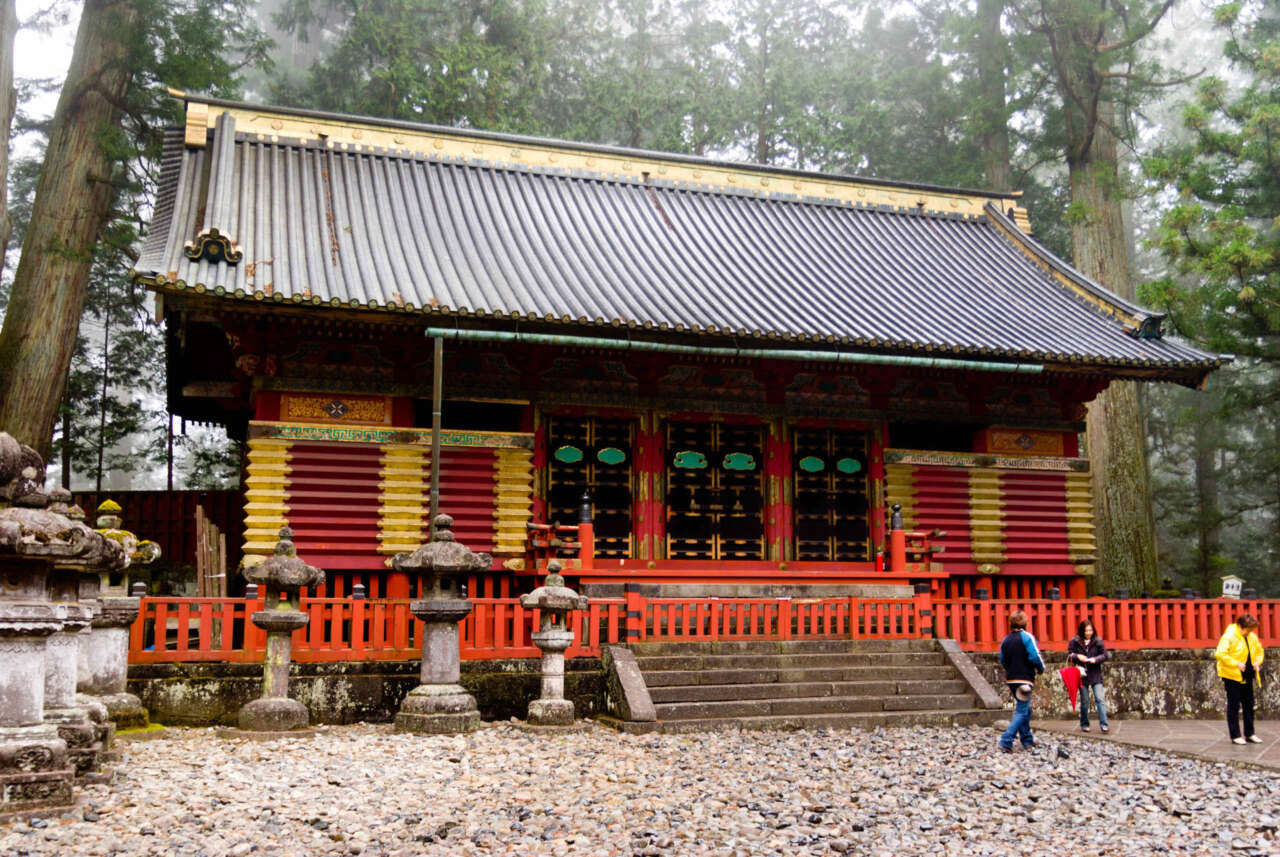
The lower sacred warehouse (下神庫) is the least “showy” but still impressive.
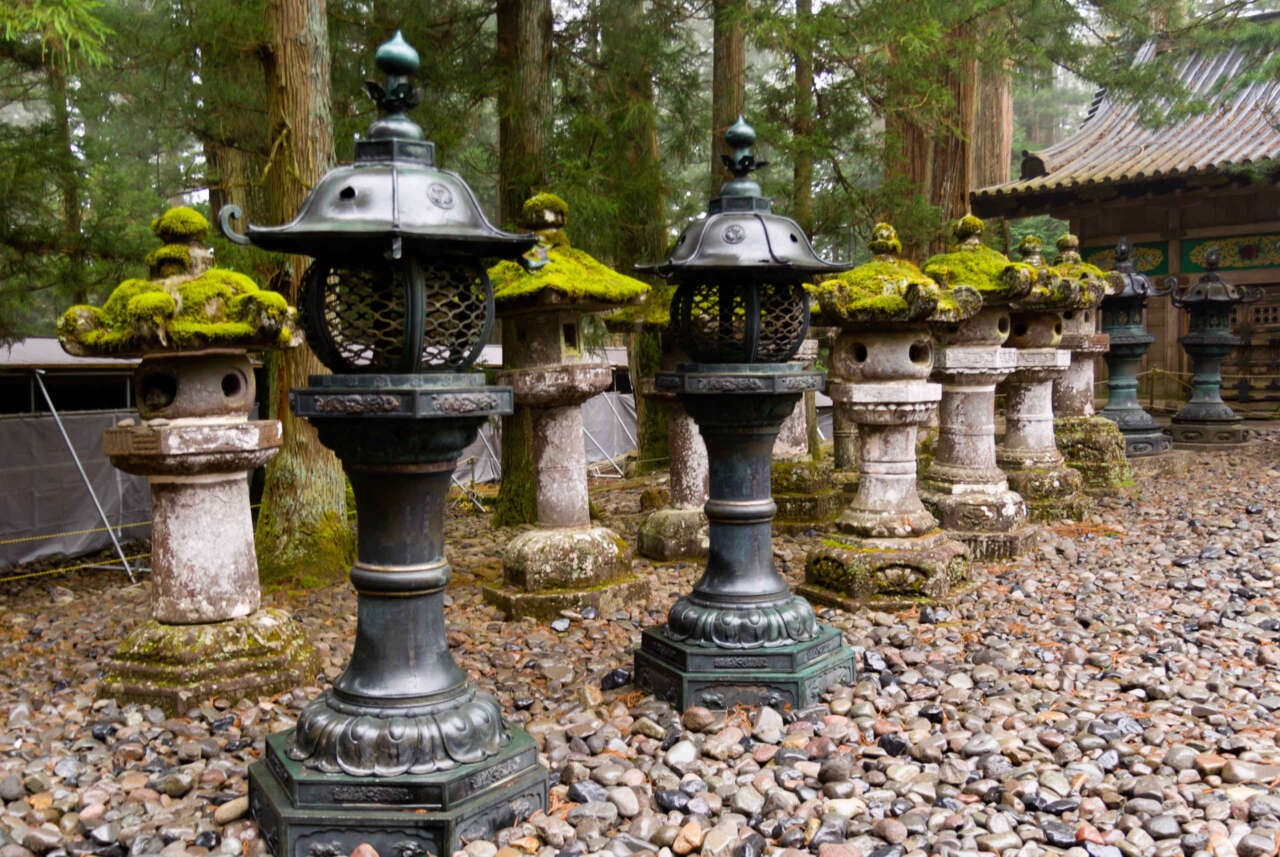
I like the mixture of copper and stone lanterns on the opposite side of the courtyard are also very picturesque.
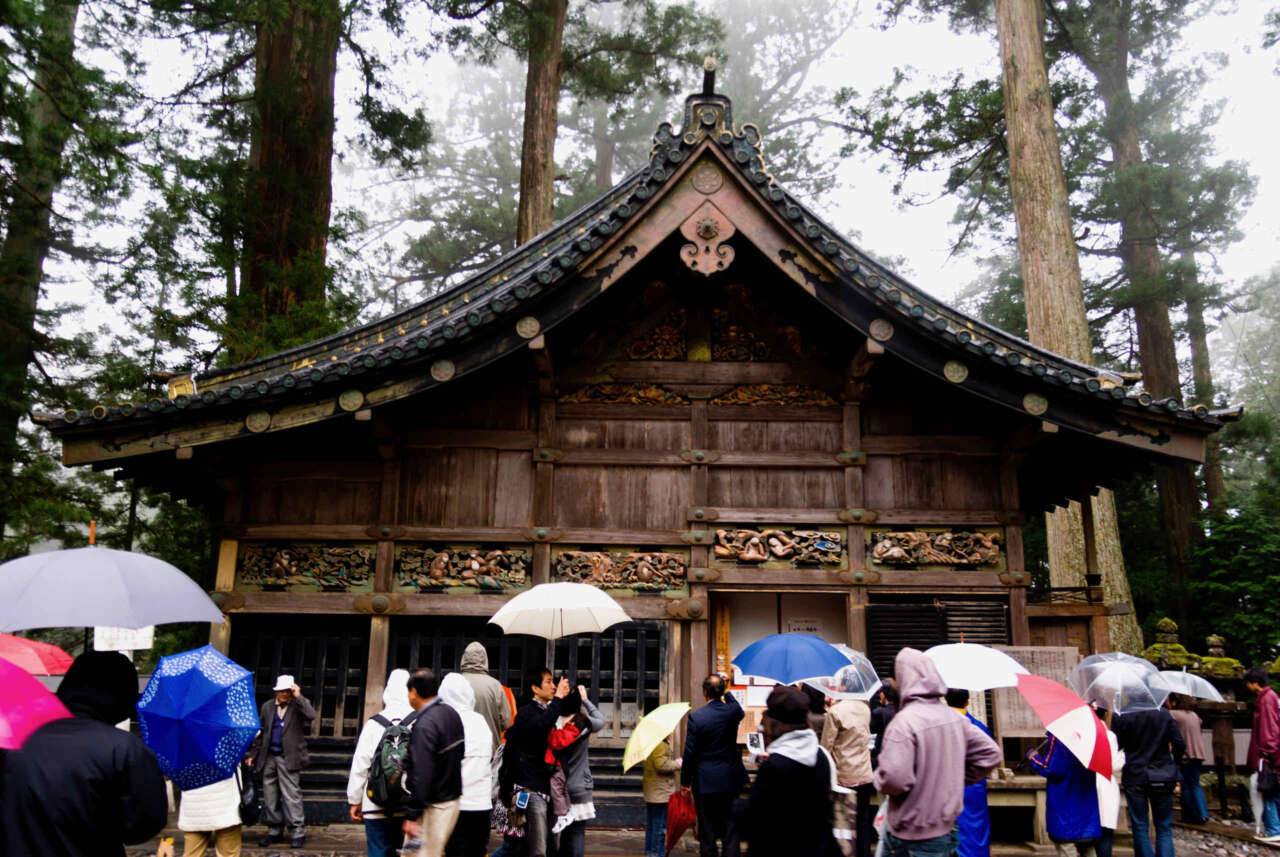
Those lanterns are next to the sacred horse stable (神厩) – no, I am NOT making these names up!
There are usually a pair of white horses placed outside the stable to greet visitors, but they were not there today because of the bad weather.
Note the sculptures of monkeys in the crossbars of the stable – that’s because monkeys are traditionally kept with horses and used to guard the horses (as they will make loud noises if a stranger comes to steal them). There are altogether eight panels of monkey sculptures (even though only 5 can be seen in the photo) – taken together they portray the lifecycle of a monkey. From the left to the right:
- mother and child monkey
- the three monkeys of childhood (see, hear and speak no evil)
- child monkey sitting preparing for independence
- young adult monkey looking up to the sky (vision/ambition)
- two monkeys working together in adulthood (teamwork)
The 3 missing panels not shown in the photo depict two monkeys falling in love, two monkeys marrying, and the last one showing a pregnant monkey which leads back to the first panel.
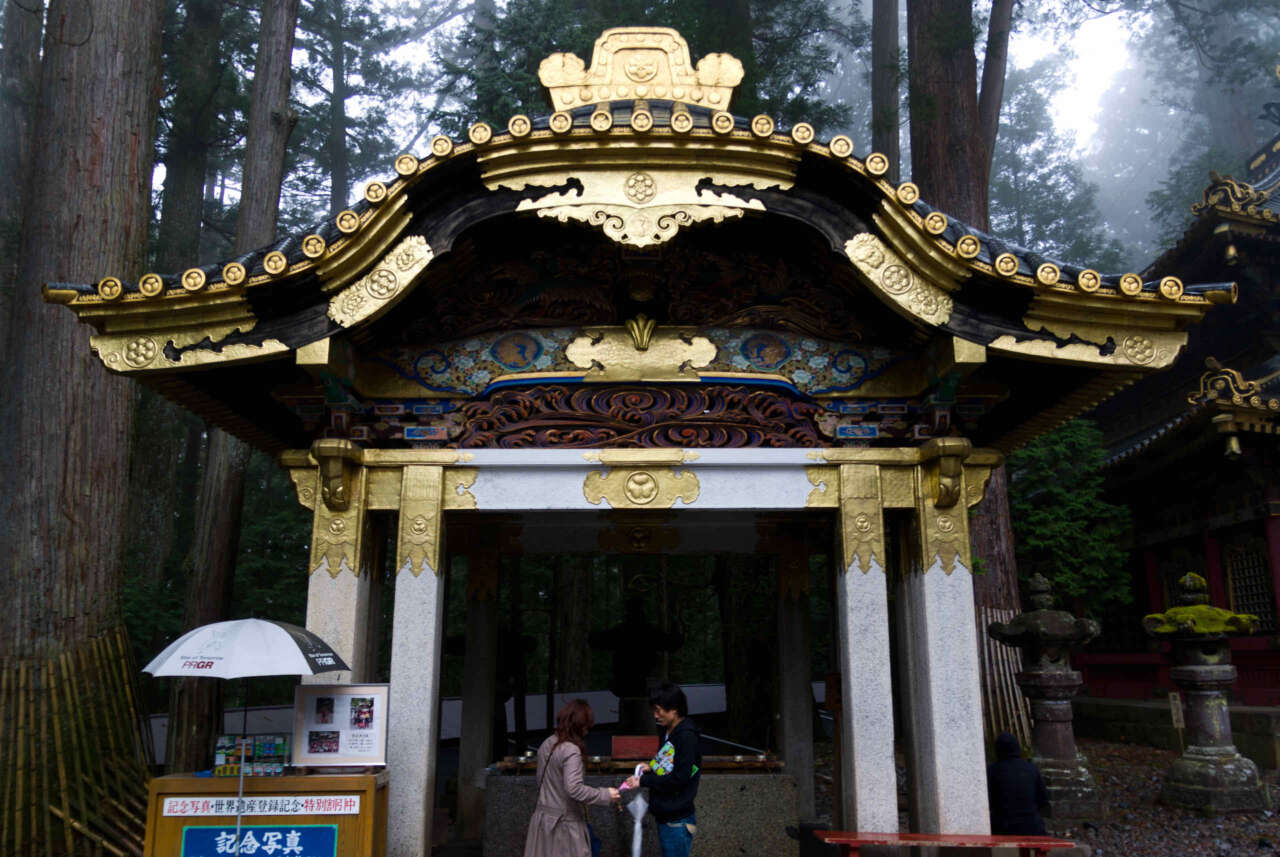
Next to the sacred stable is the sacred water house or Omizuya (御水舎) – traditionally found in most Shinto shrines – used by visitors to purify their hands and mouth prior to worship. This one features sculptures of dragons and sea waves underneath the roof:
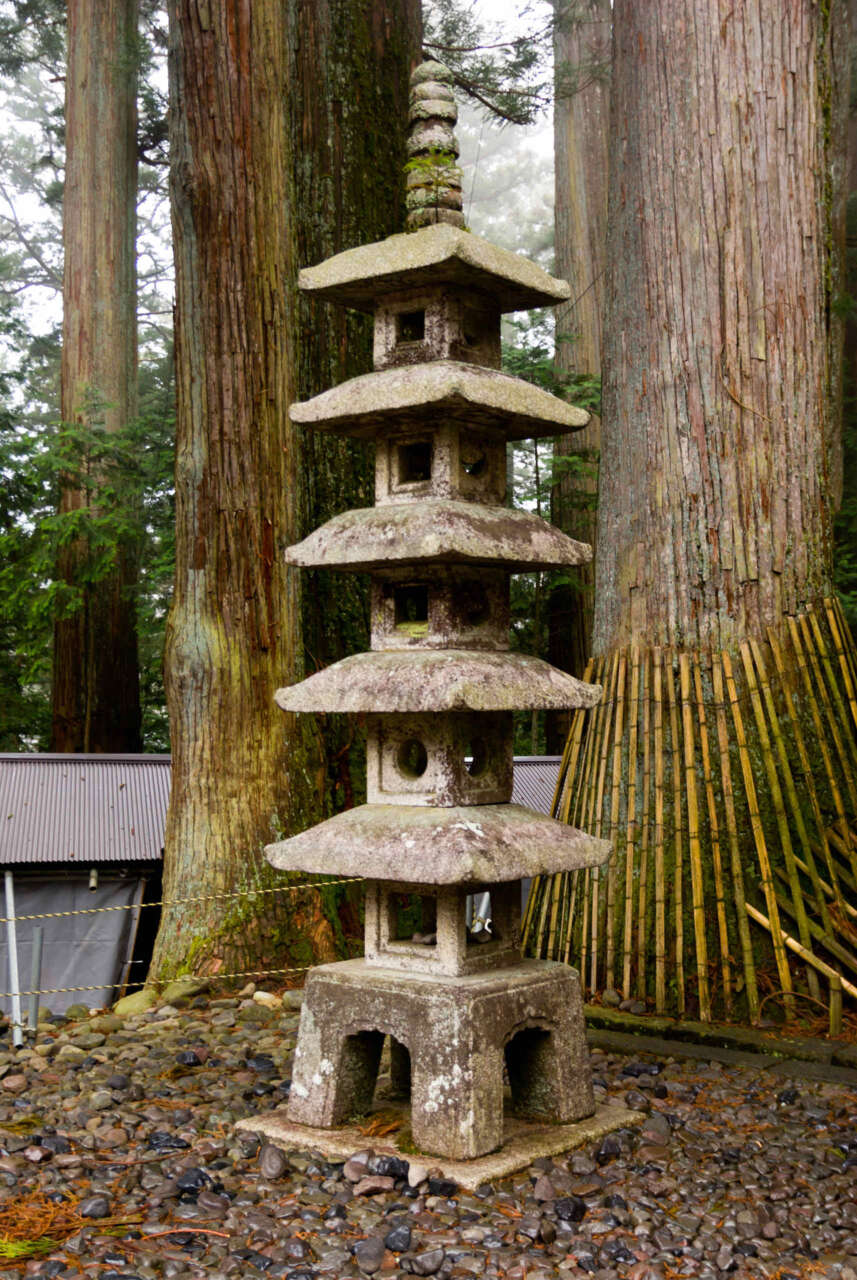
Next to the water house is a miniature Five storied stone pagoda – maybe this is a homage to the real one that we saw earlier?
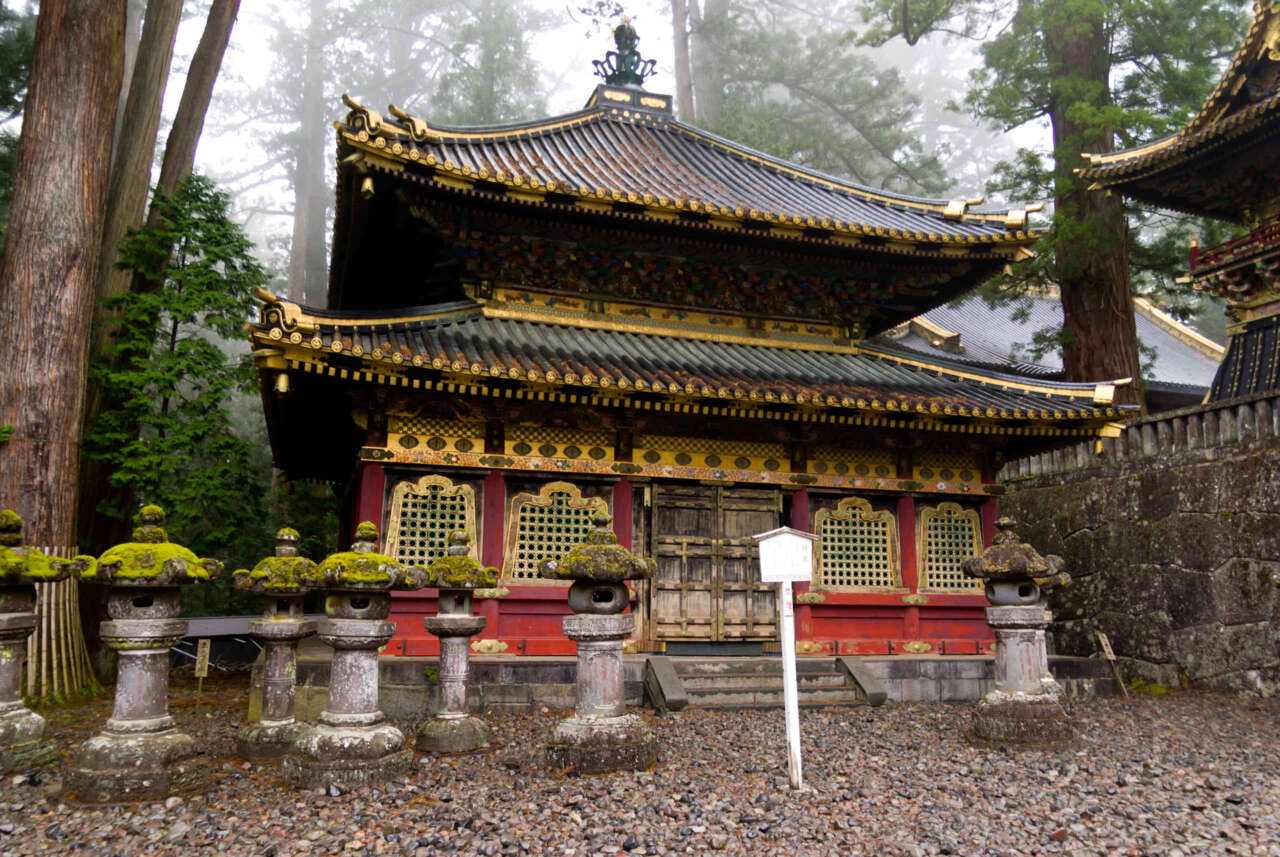
And around the corner is the sacred revolving library – Rinzou (輪蔵) – holding over 6000 volumes of Buddhist sutras on octagonal revolving shelves.
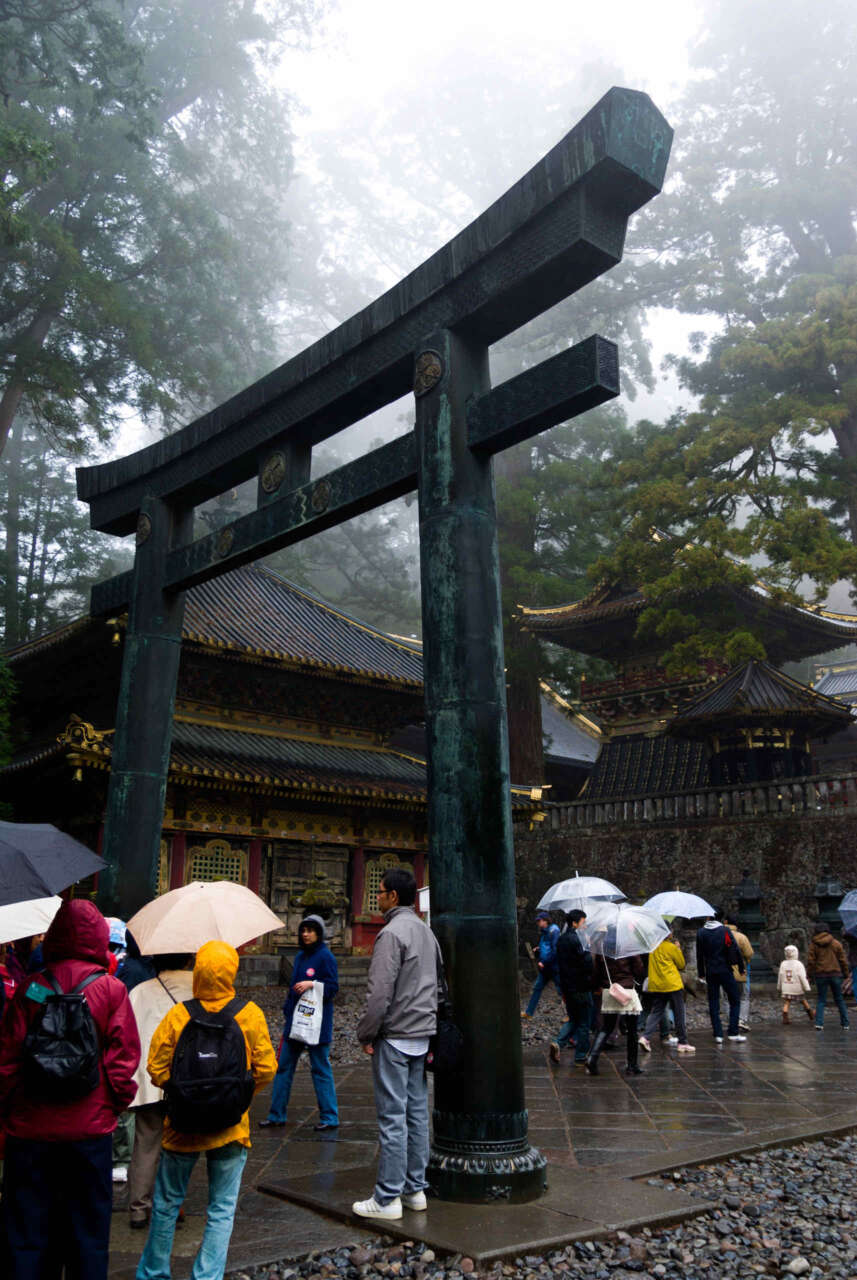
Finally, in the centre of the courtyard is a bronze Torii (唐銅鳥居).
Next, we encounter the “crown jewel” of the Toushouguu – the Youmei gate (陽明門).
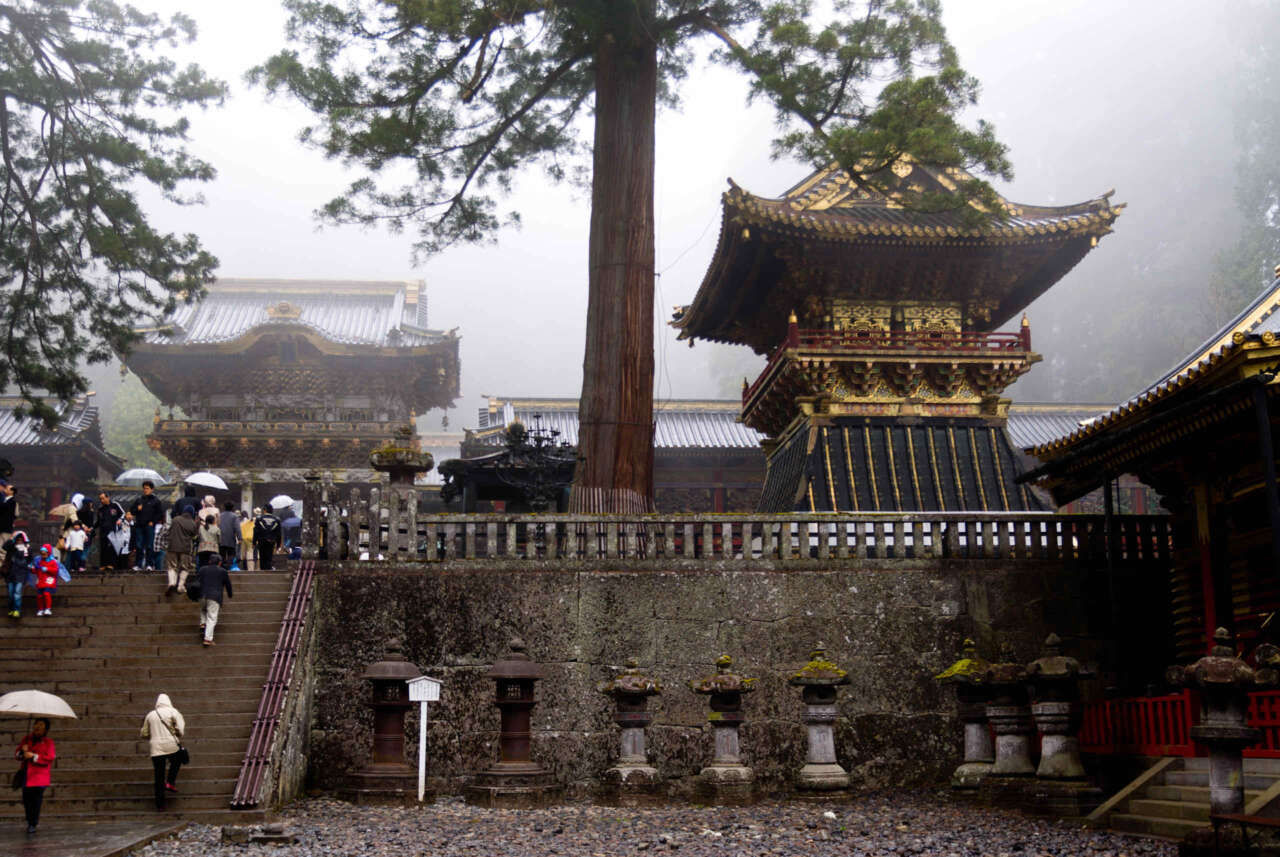
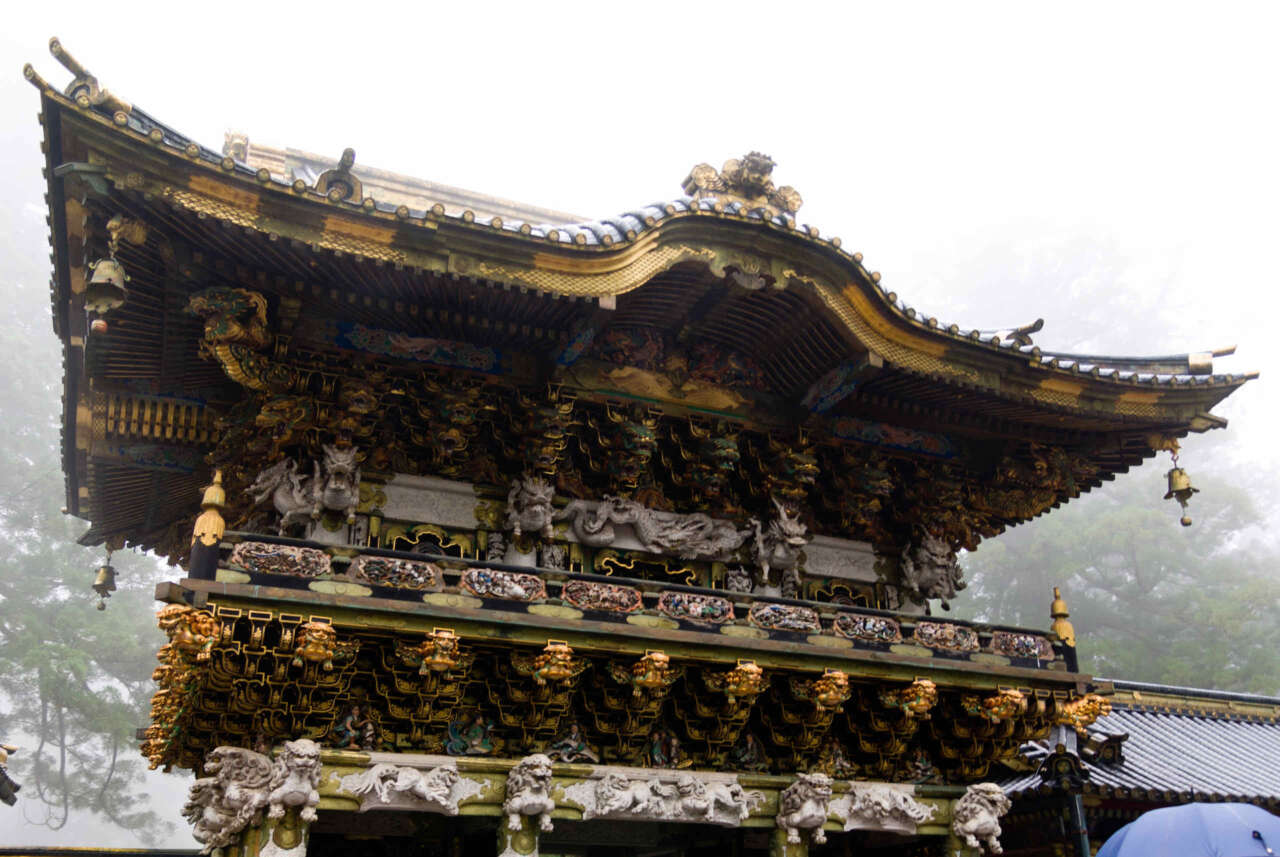
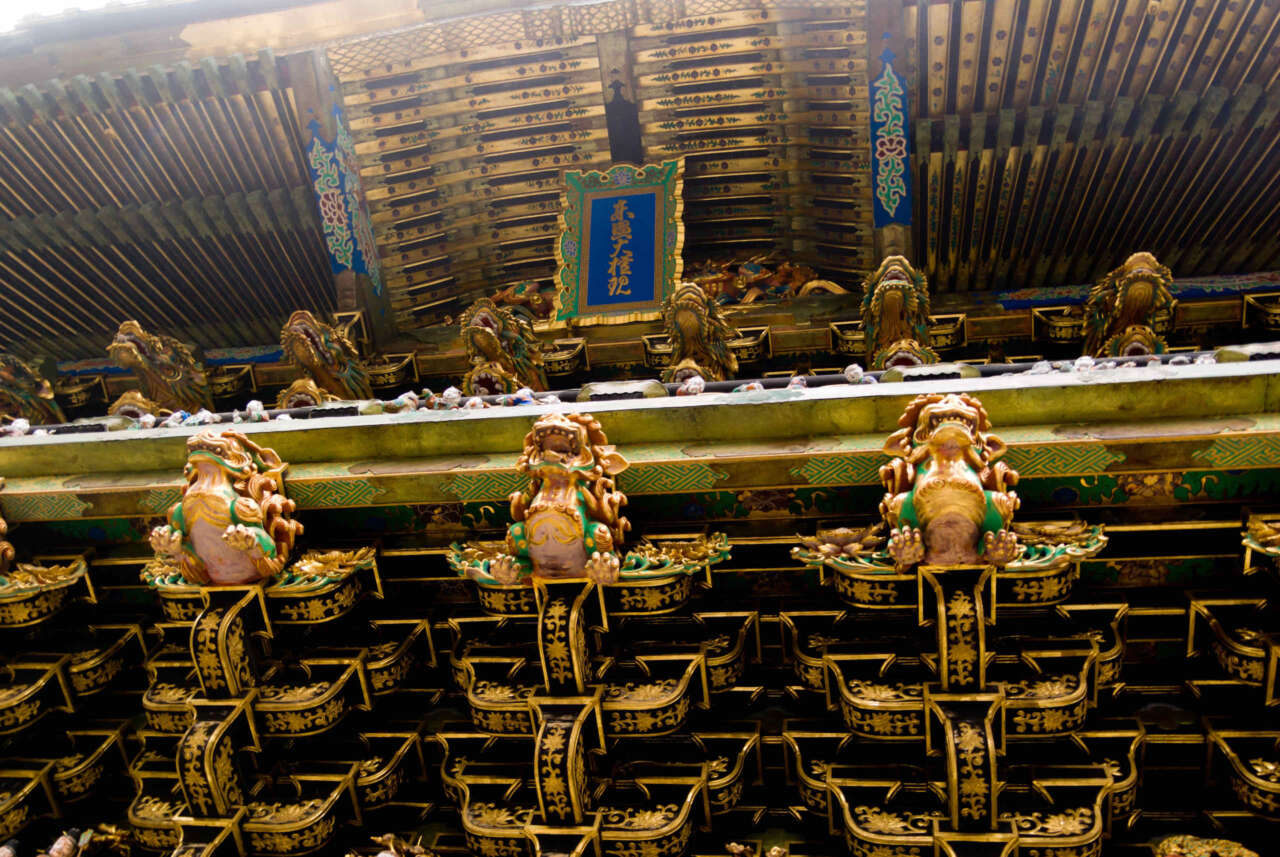
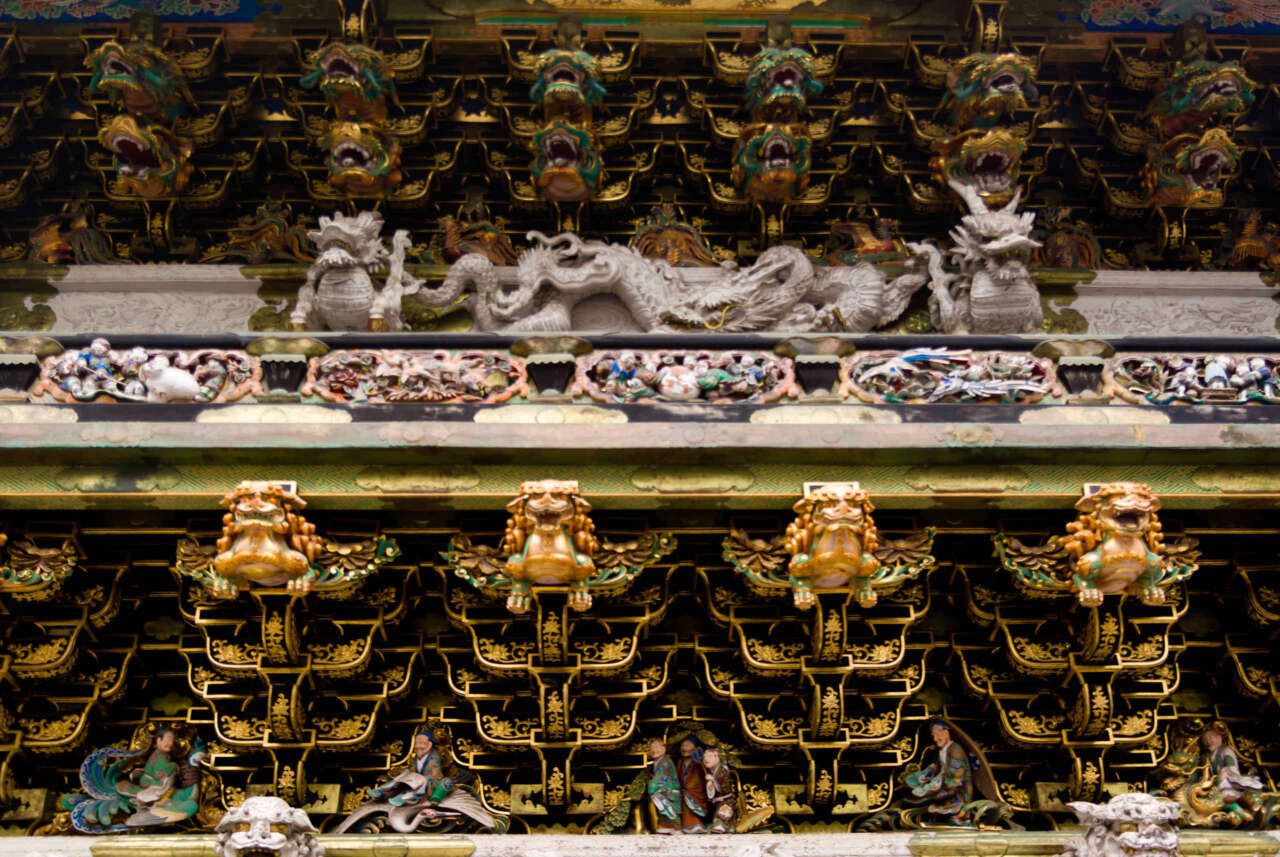
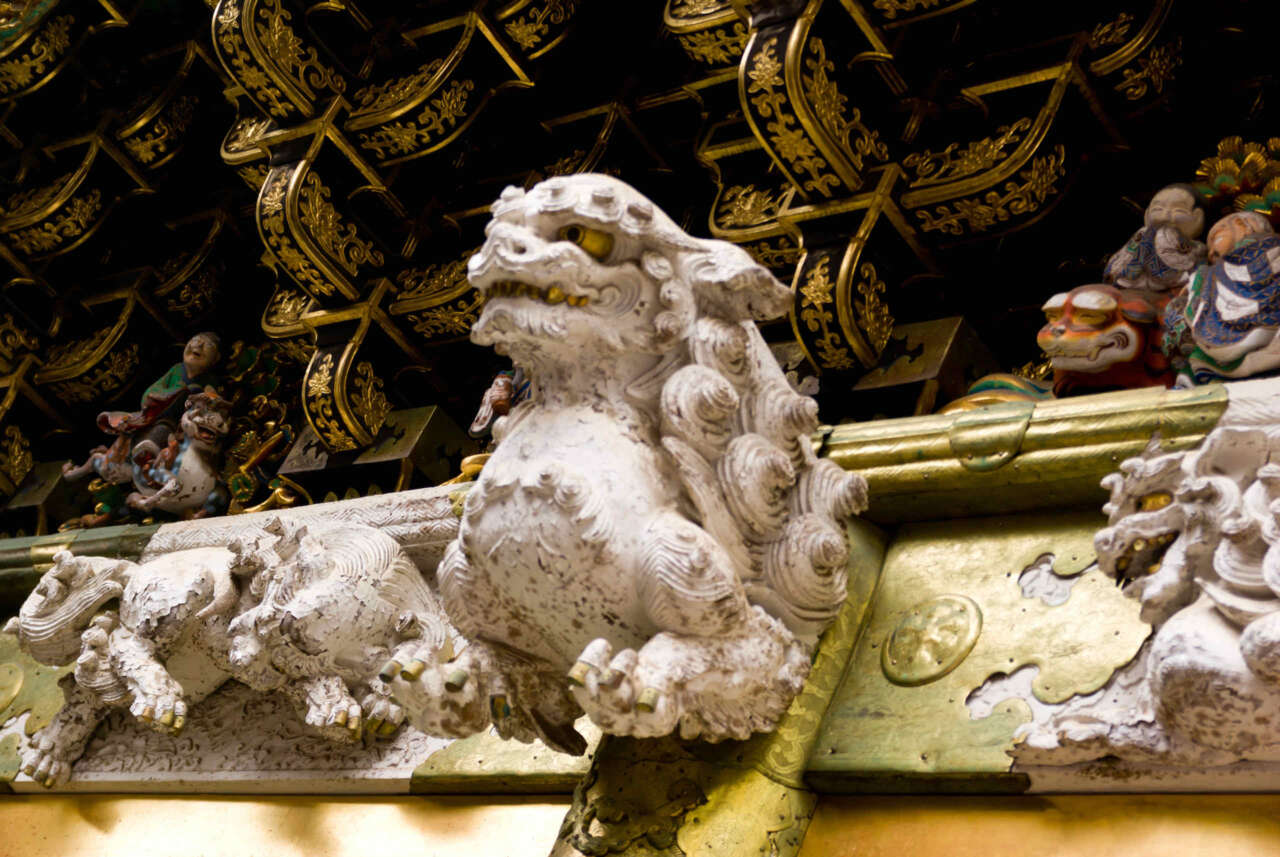
There are over 500 separate sculptures in this gate, and it was also called the “All Day Long” gate (日暮らし門) or sometimes the “Sunset” gate because some visitors would spend the entire day just gazing at the gate marveling at the intricacies of the sculptures.
Incidentally, one of the pillars in the gate is (deliberately) installed upside down, because nothing is meant to be 100% perfect on Earth.
There are lion statues on the left and right of the gate.
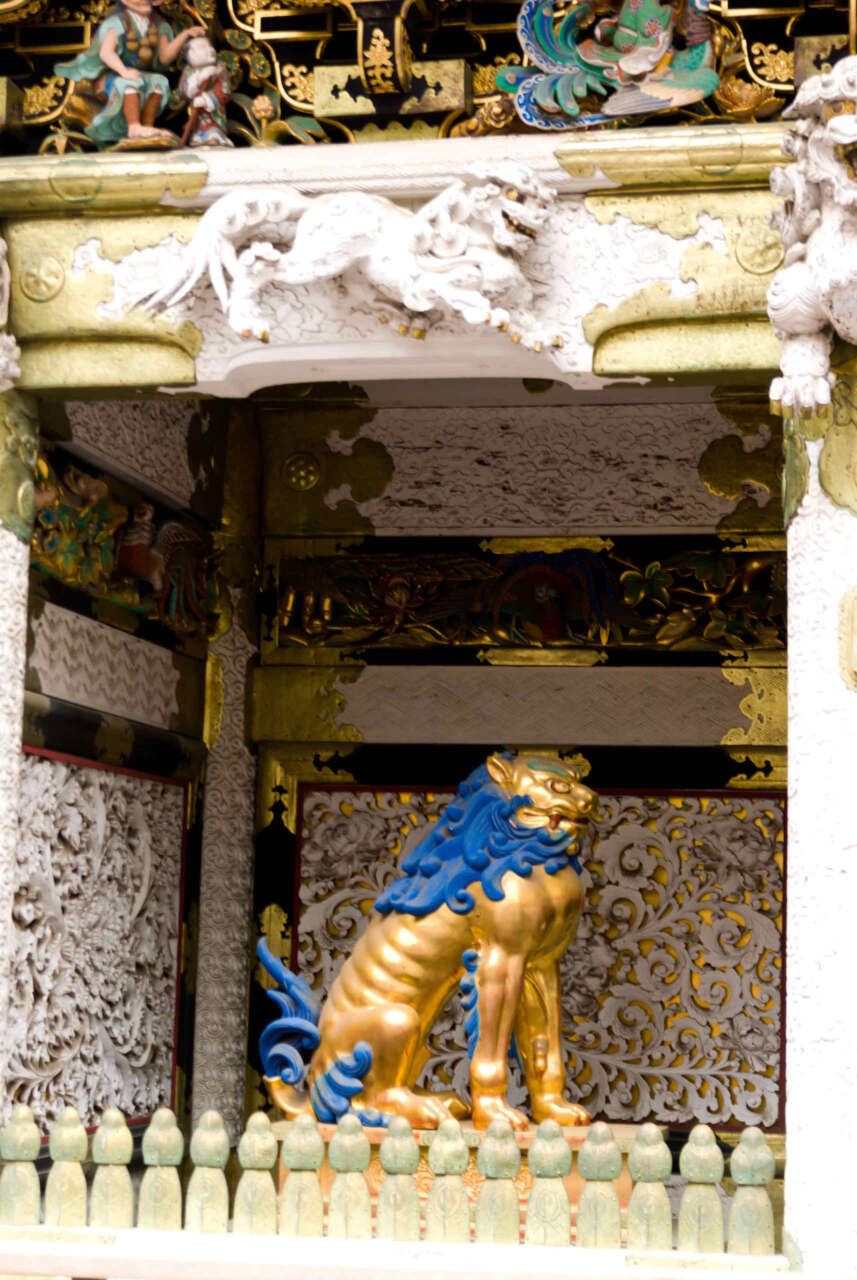
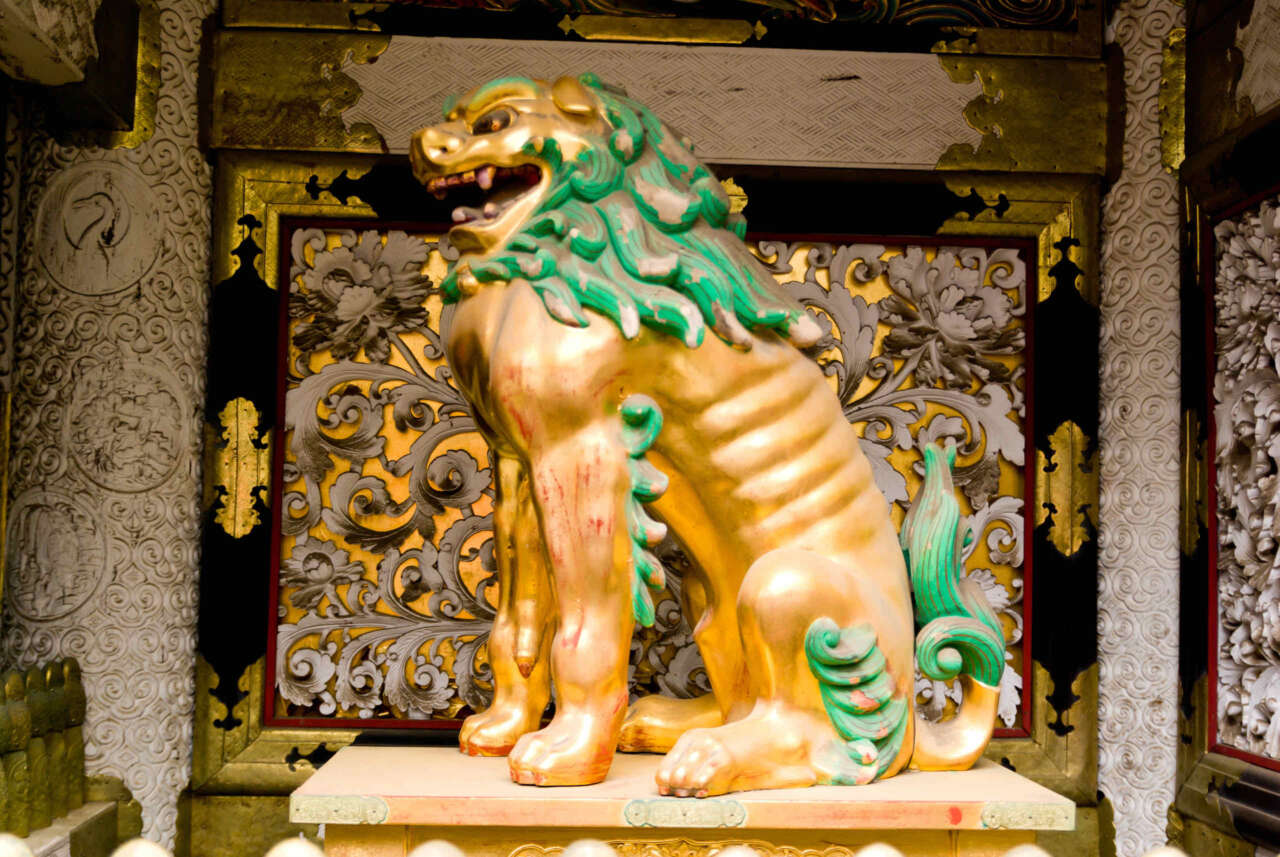
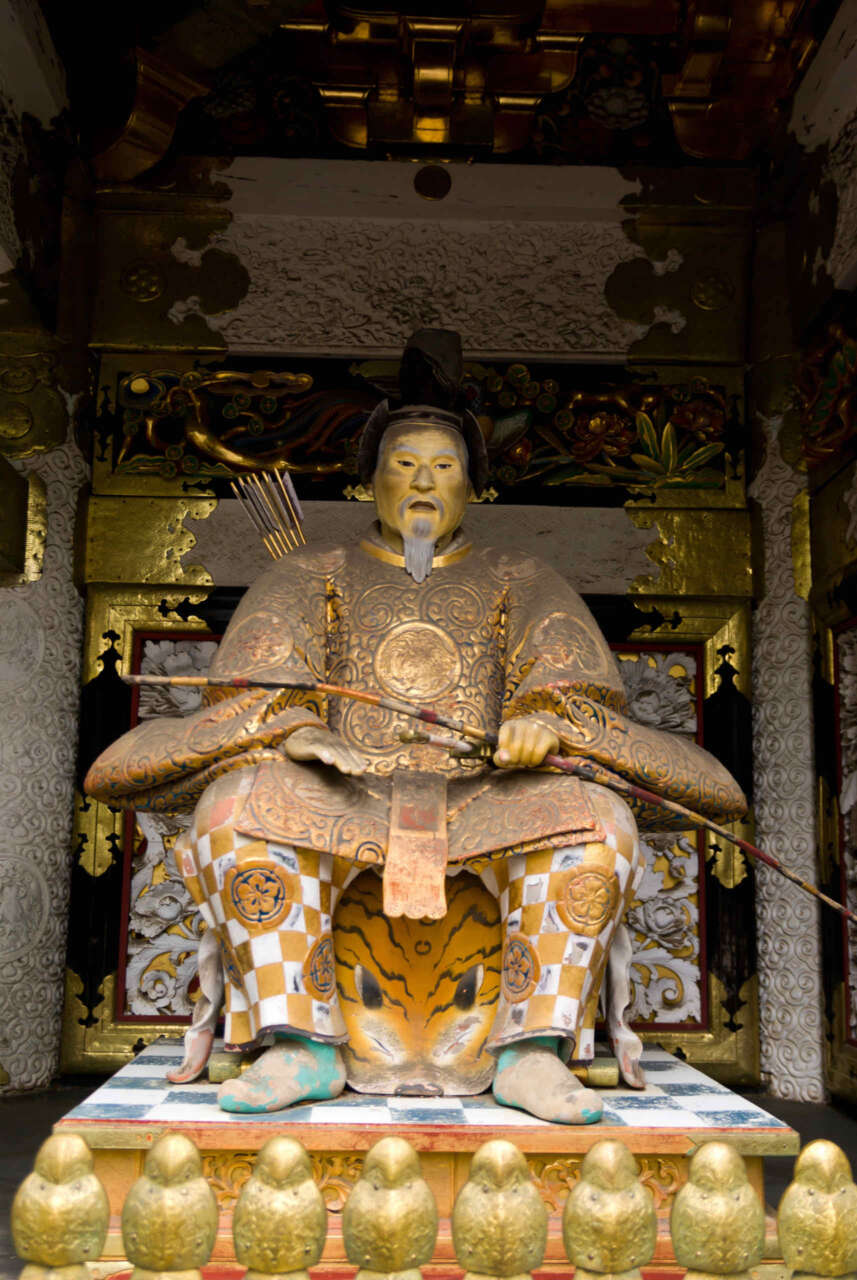
And to me, this looks like a sculpture of Ieyasu himself (although I have not been able to confirm).
On the left and right of the Youmeimon are two towers. One is Korou – the drum tower (鼓楼) which is used in the festival.
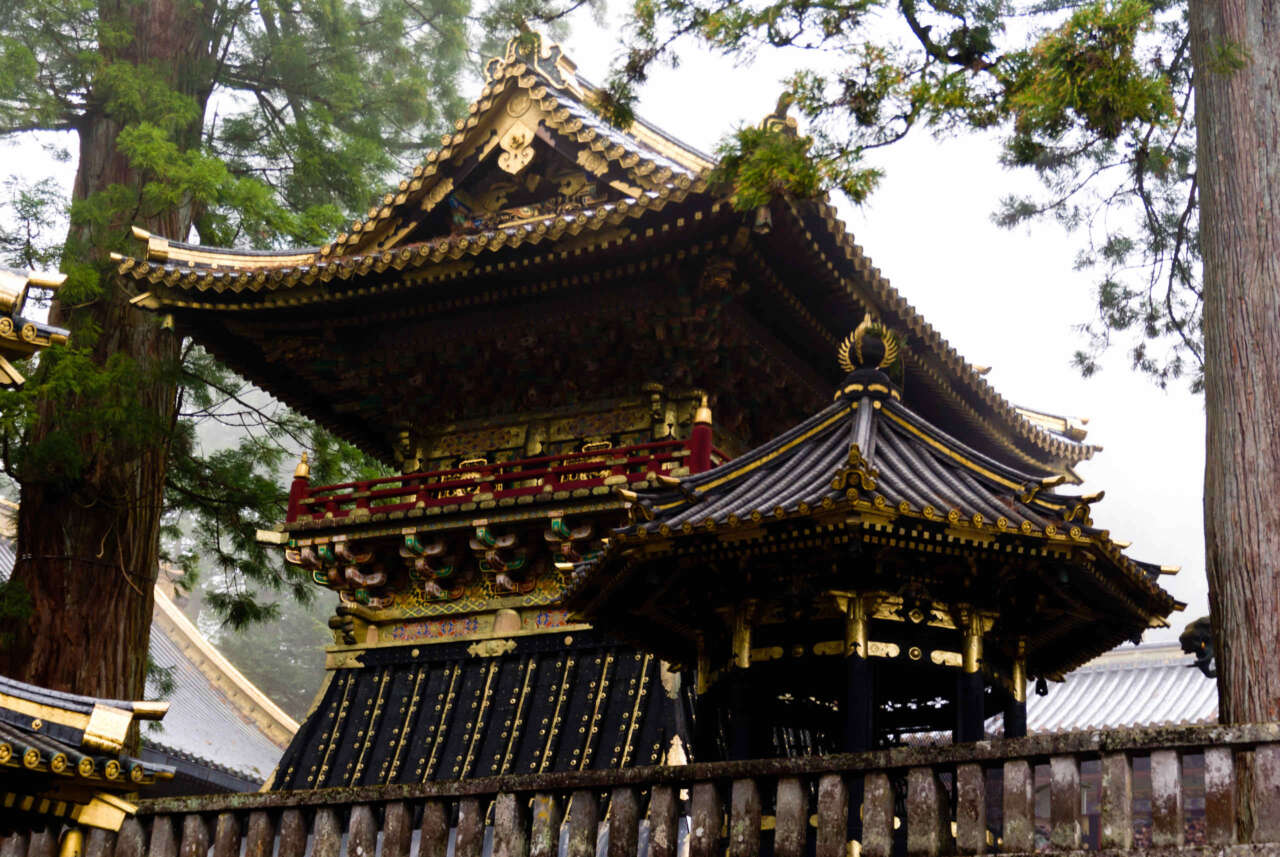
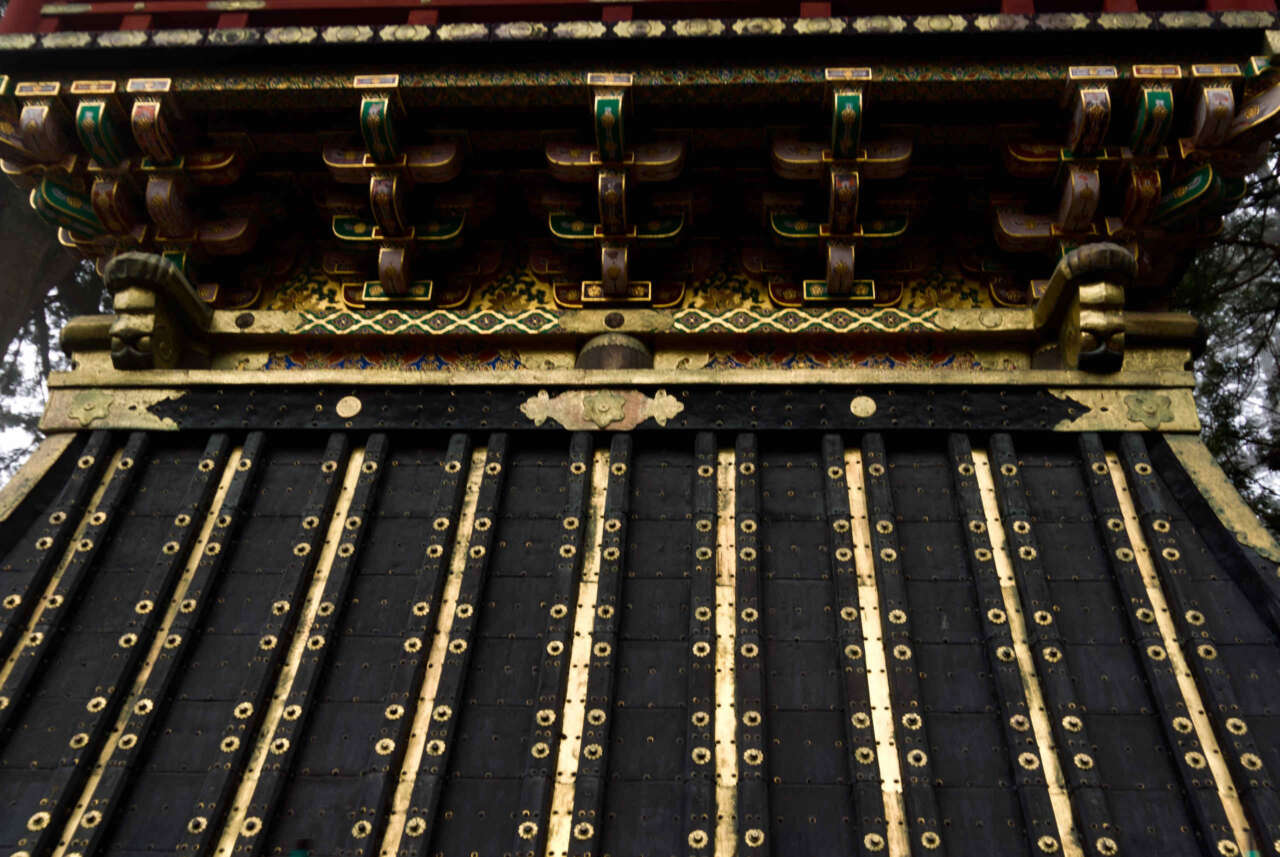
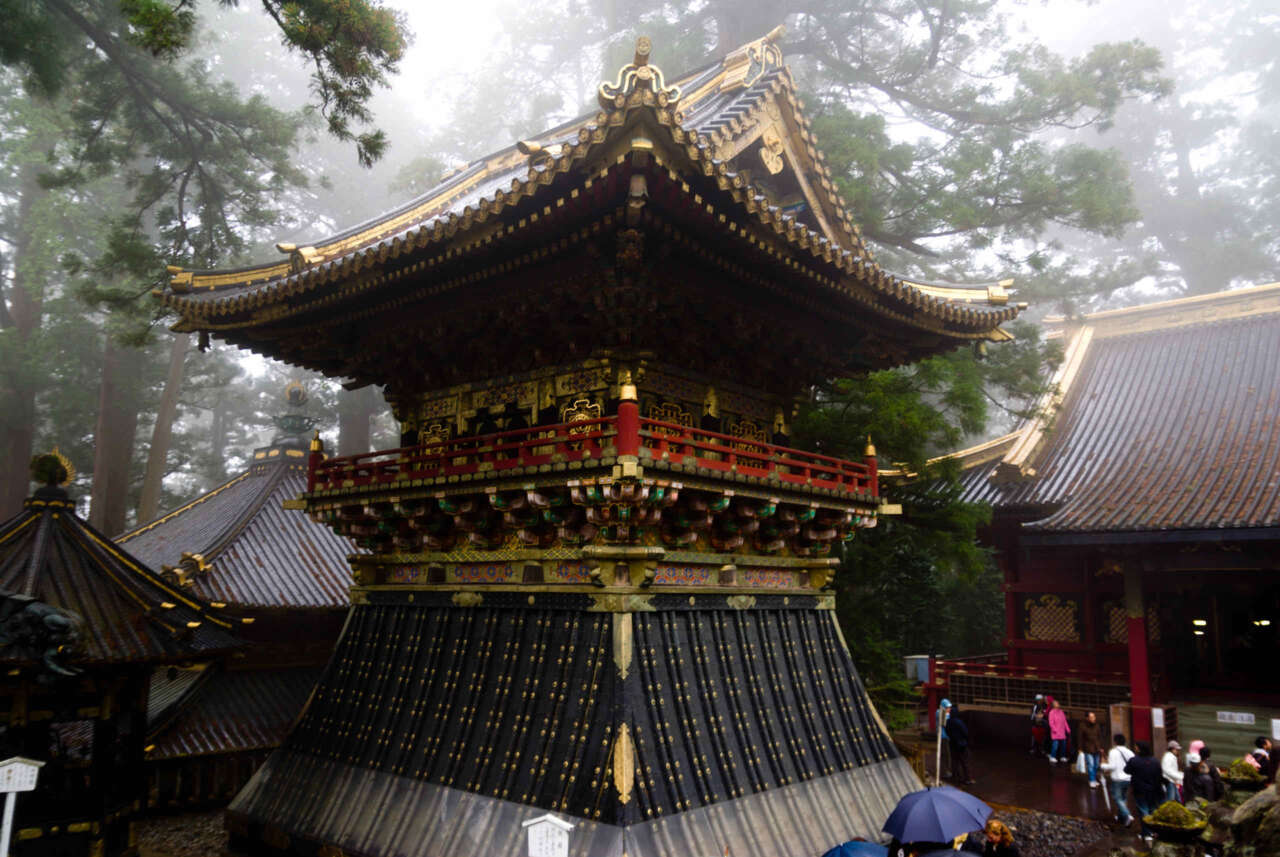
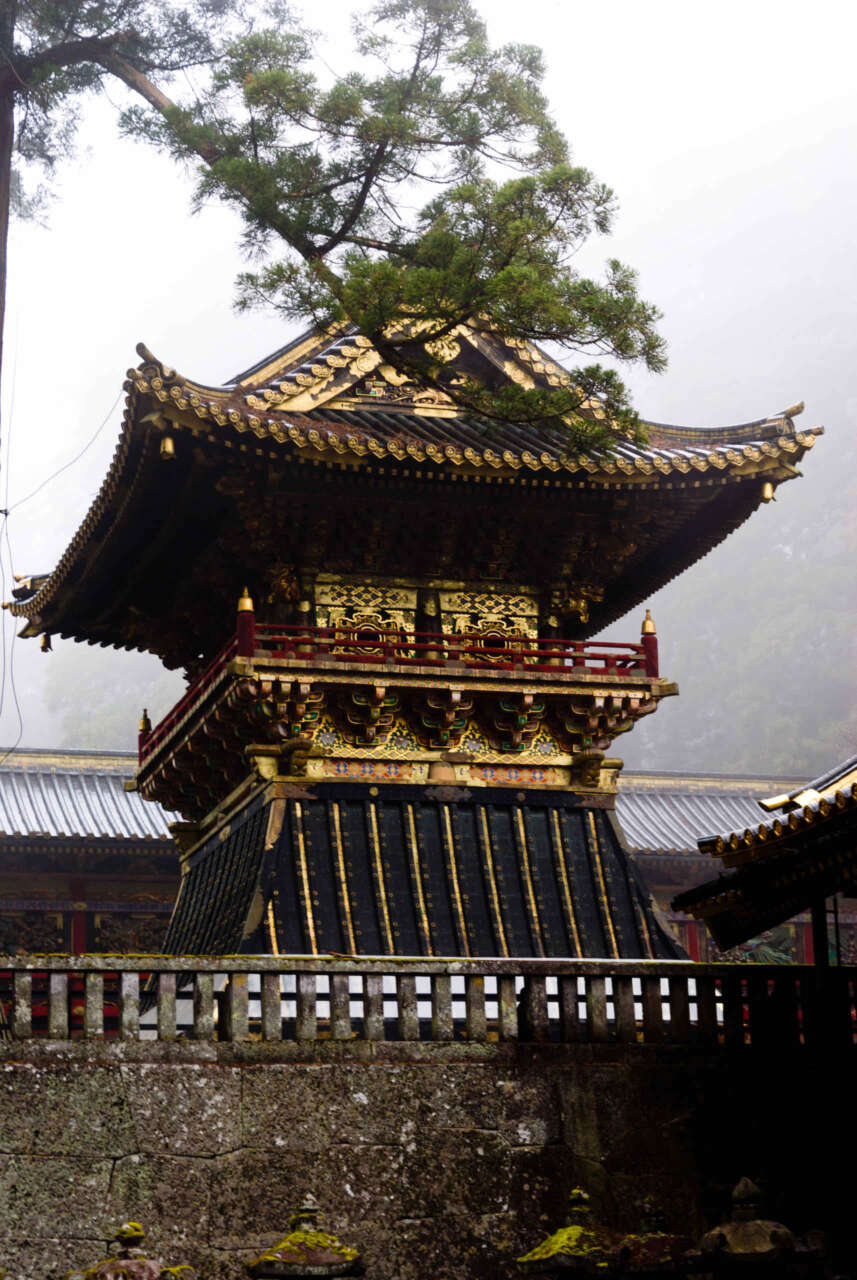
And the other, more elaborately designed, tower is called the Shourou (鐘楼) or bell tower and is used to store the bell.
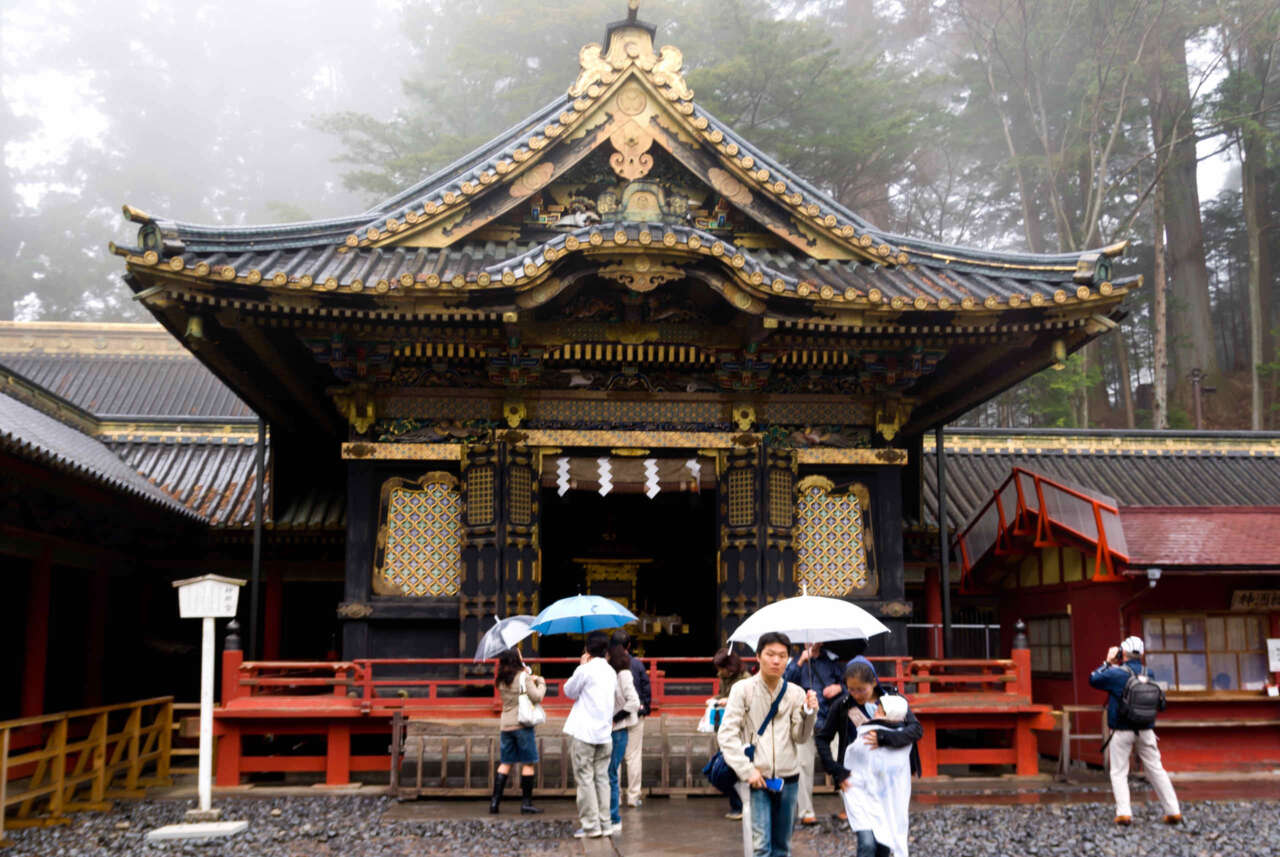
Next to the Korou is the sacred shed for holding the portable shrines used in the festival – the Shinyosha (神輿舎).
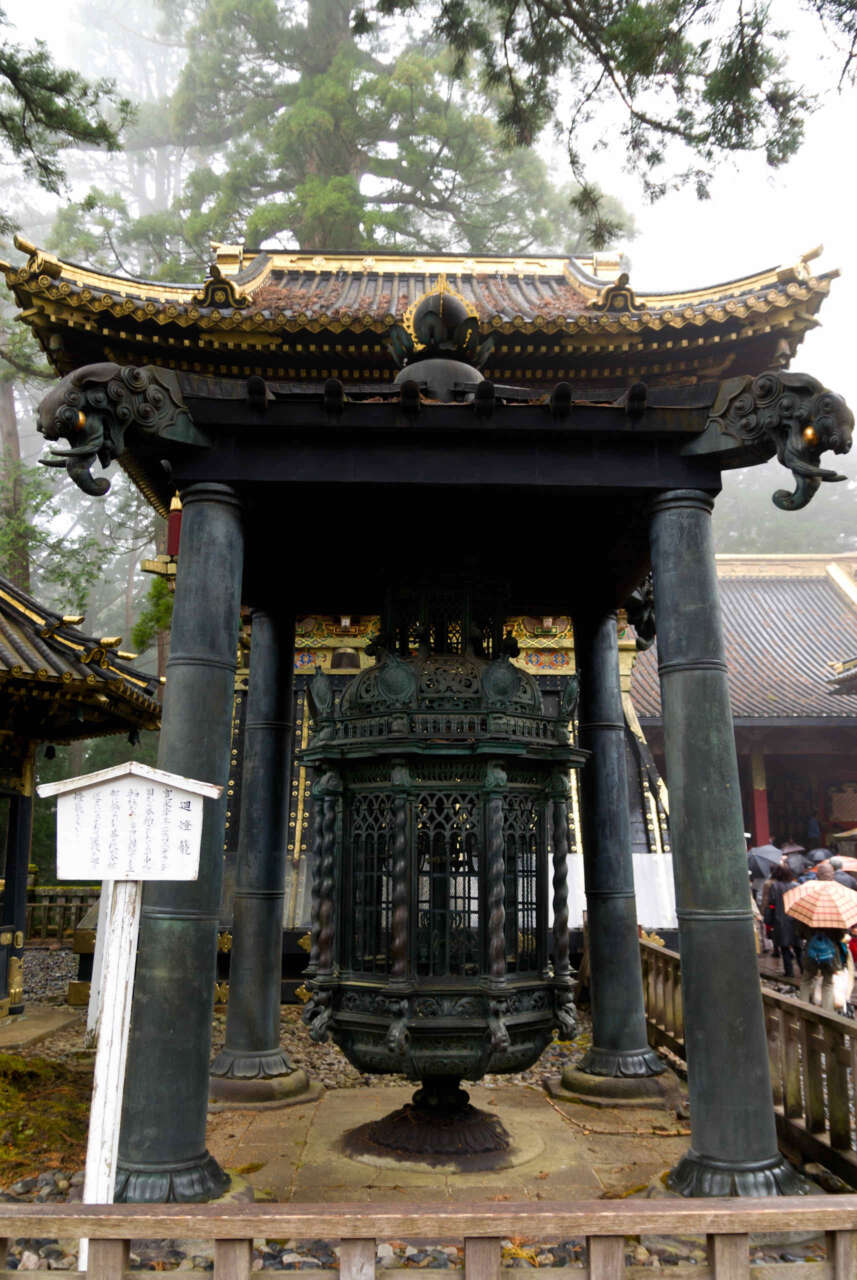
Also next to the Korou are two special lanterns. The first is the roofed and revolving lantern (屋根のある回転燈籠).
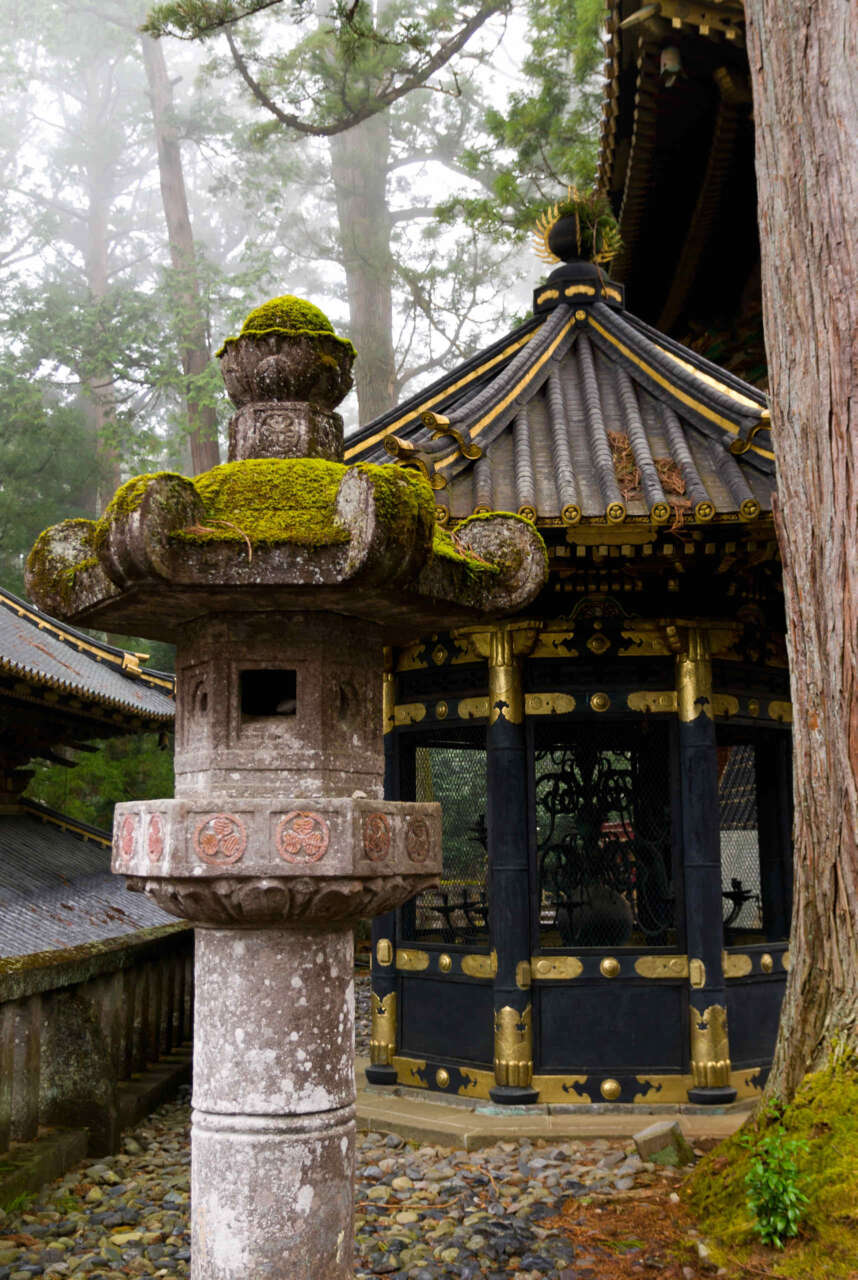
And the other is the Hung lantern (釣燈籠) (the roofed copper lantern behind the stone lantern):
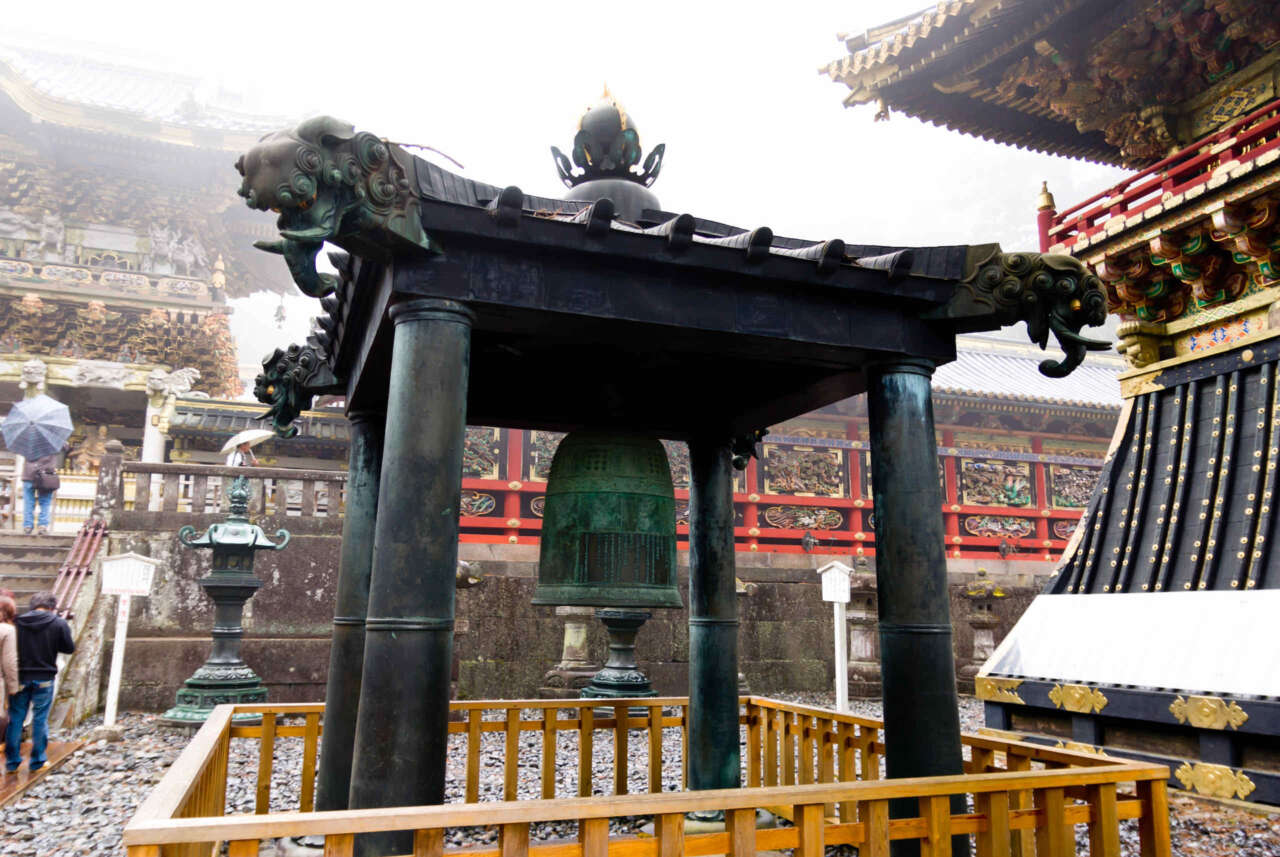
Next to the Shourou is a Korean bell (朝鮮鐘) – so called because it was dedicated by messengers from Korea on the occasion of the birth of Iemitsu’s son.
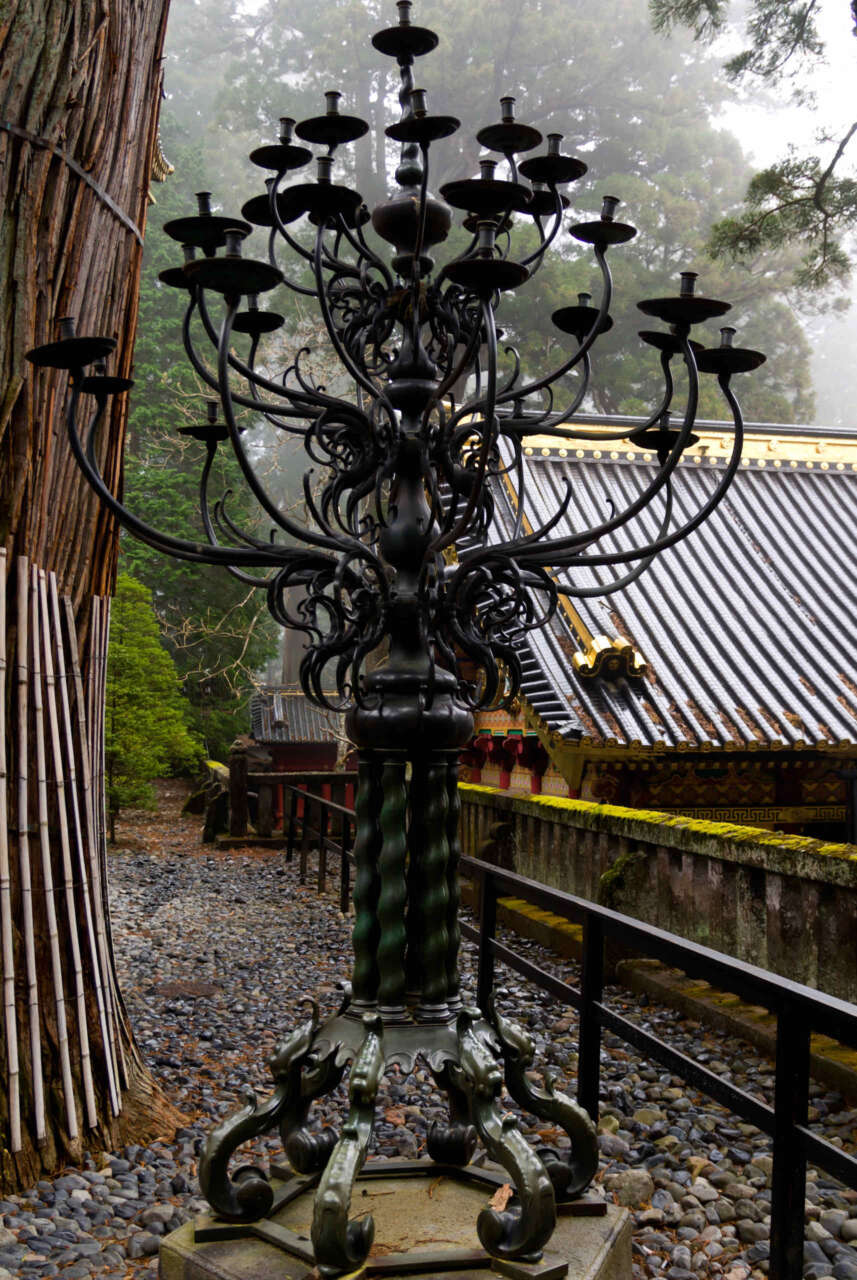
There’s also this interesting copper sculpture next to the Shourou that I have not been able to identify.
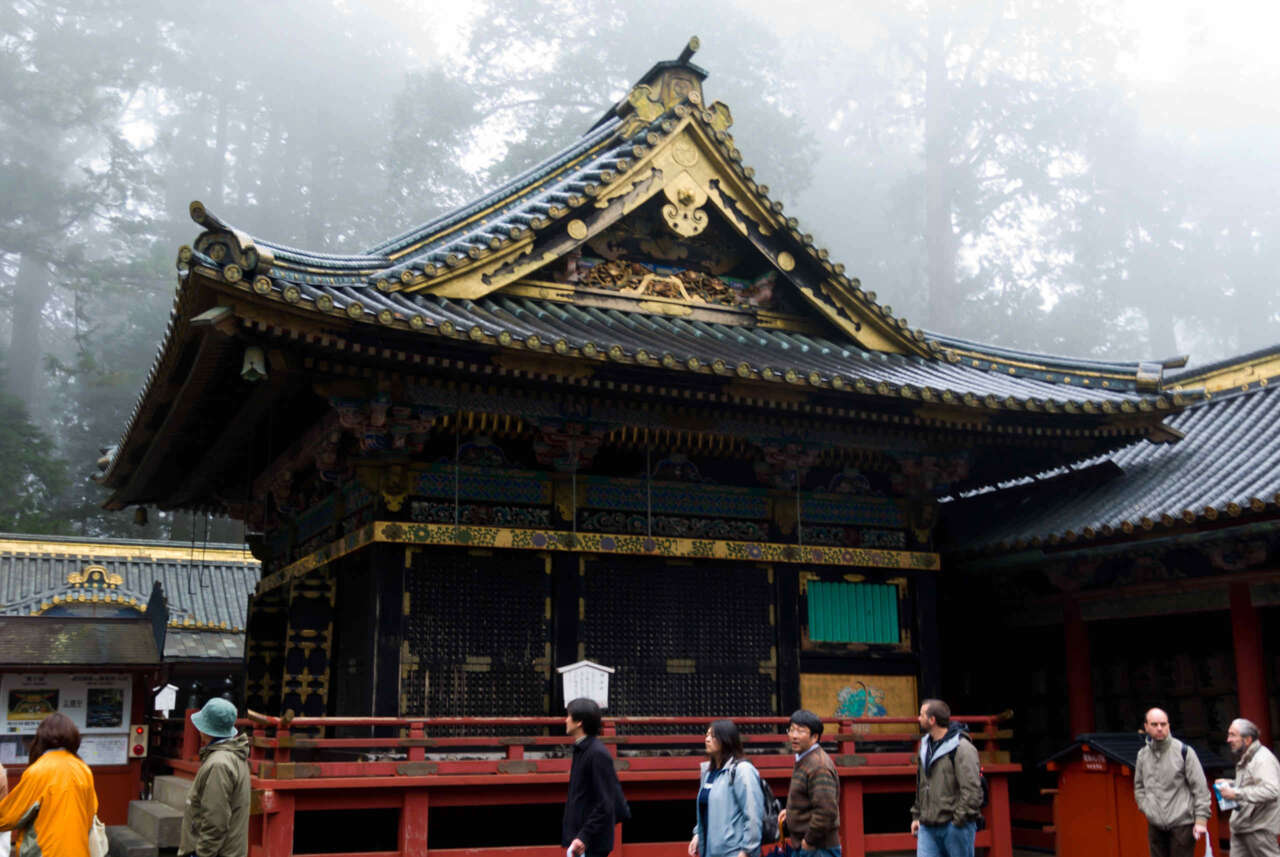
On the side of the Shourou is Kaguraden stage (神楽殿) – used for the Yaotome maiden dance during the festival.
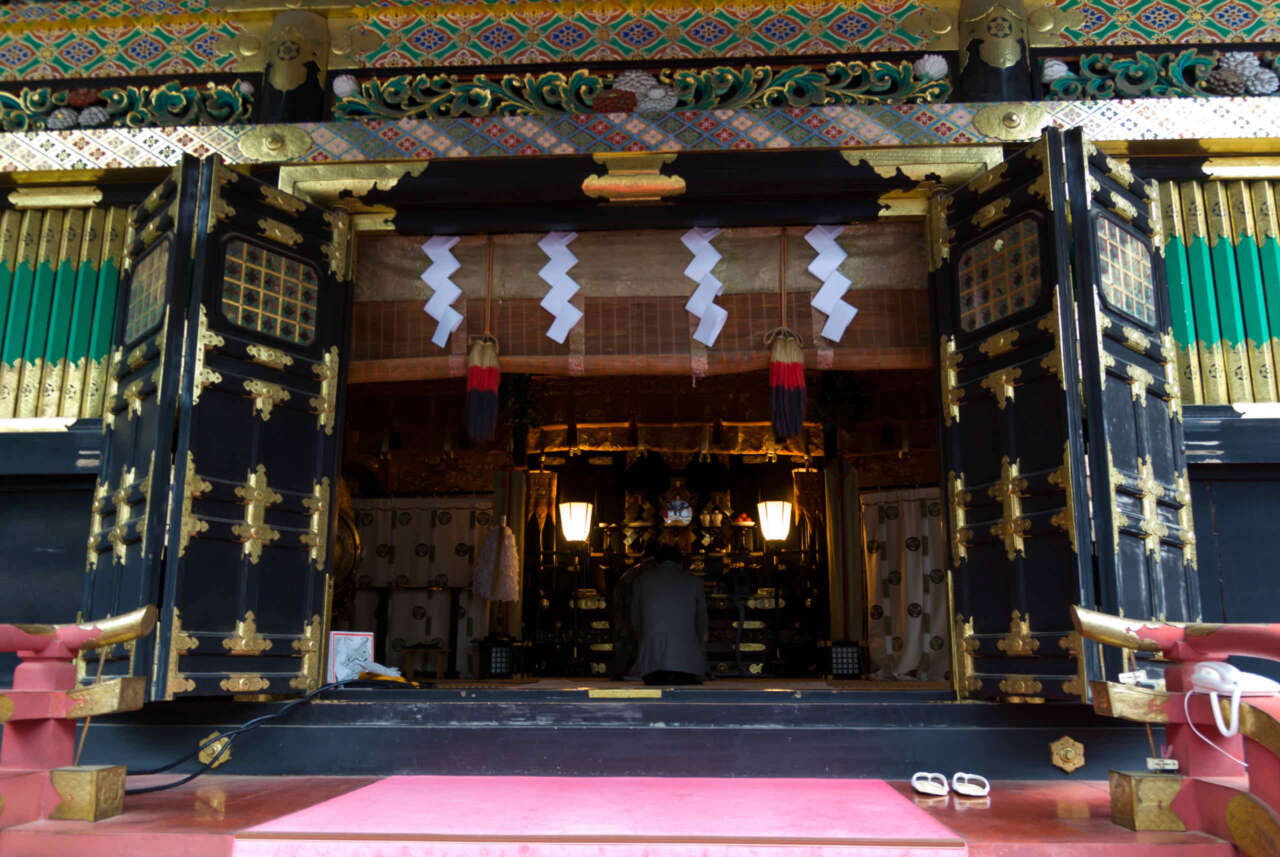
There’s also the Kitouden (祈祷殿) prayer hall – we saw this man praying there.
Local sake brewers make offerings to the shrine.
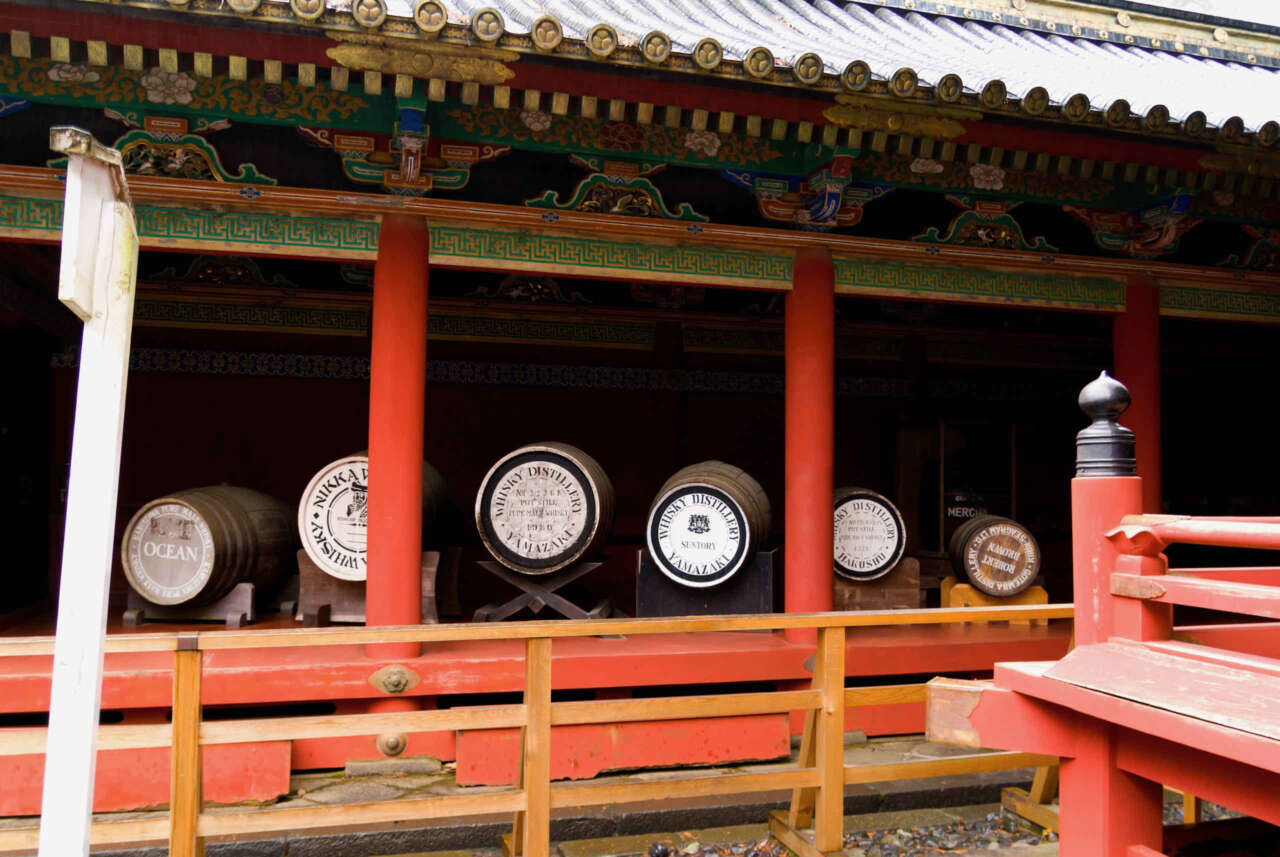
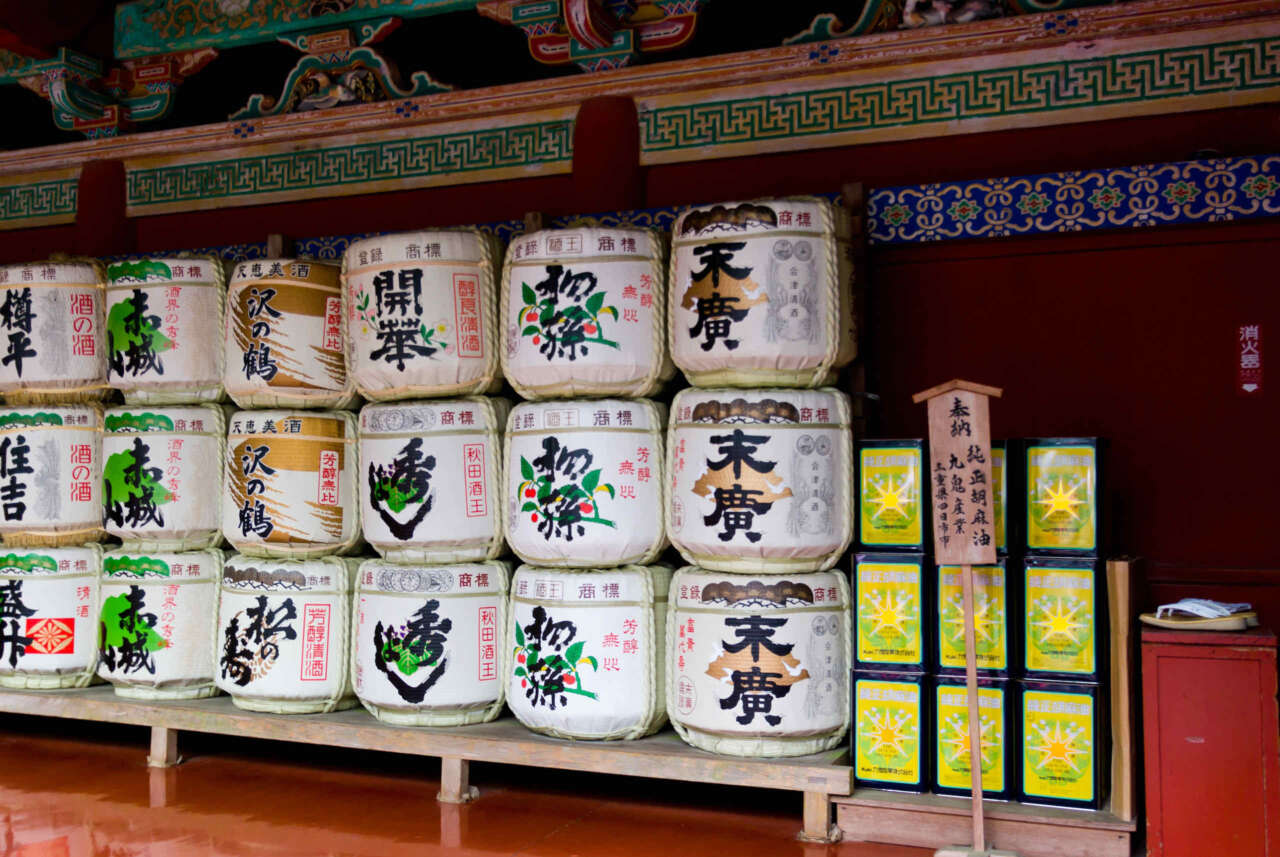
There’s an inner gate called Karamon (唐門) or Chinese styled gate.
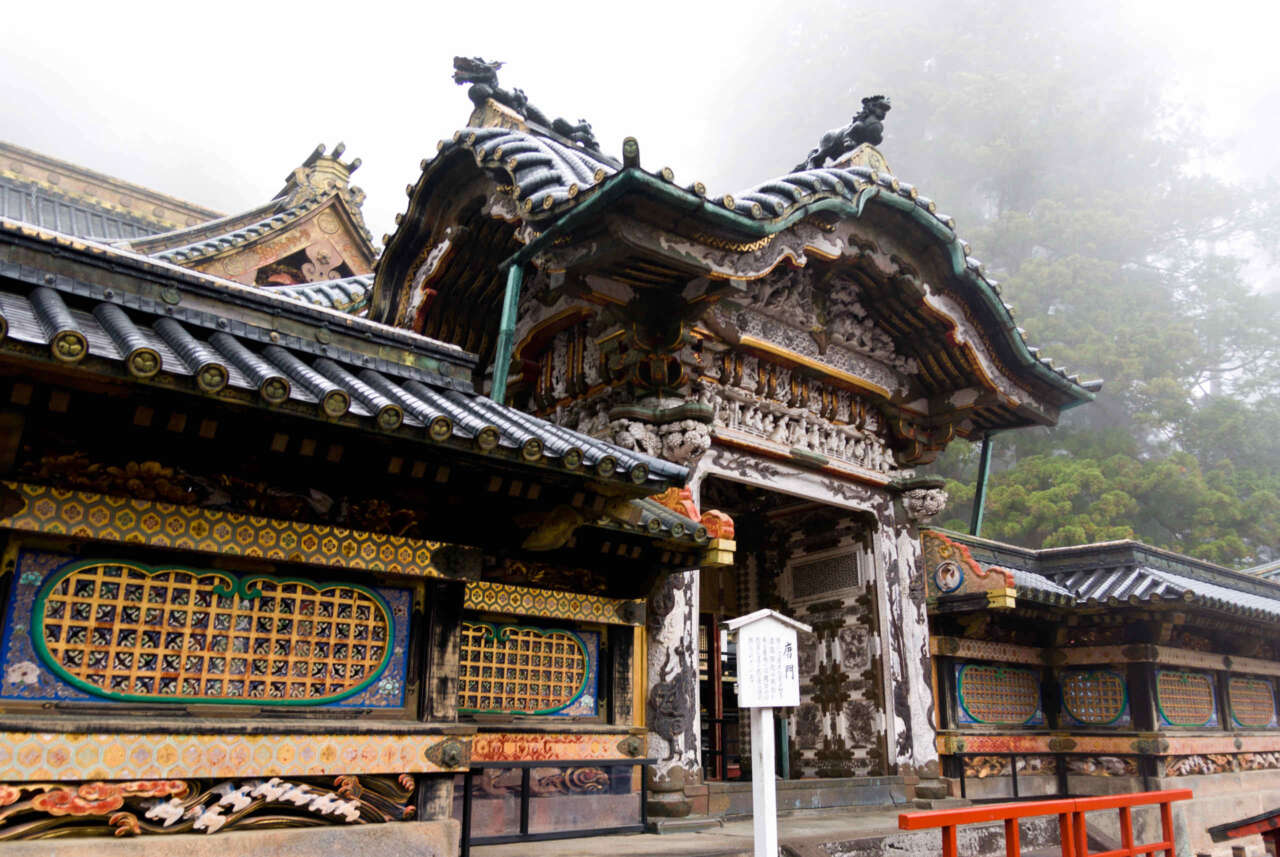
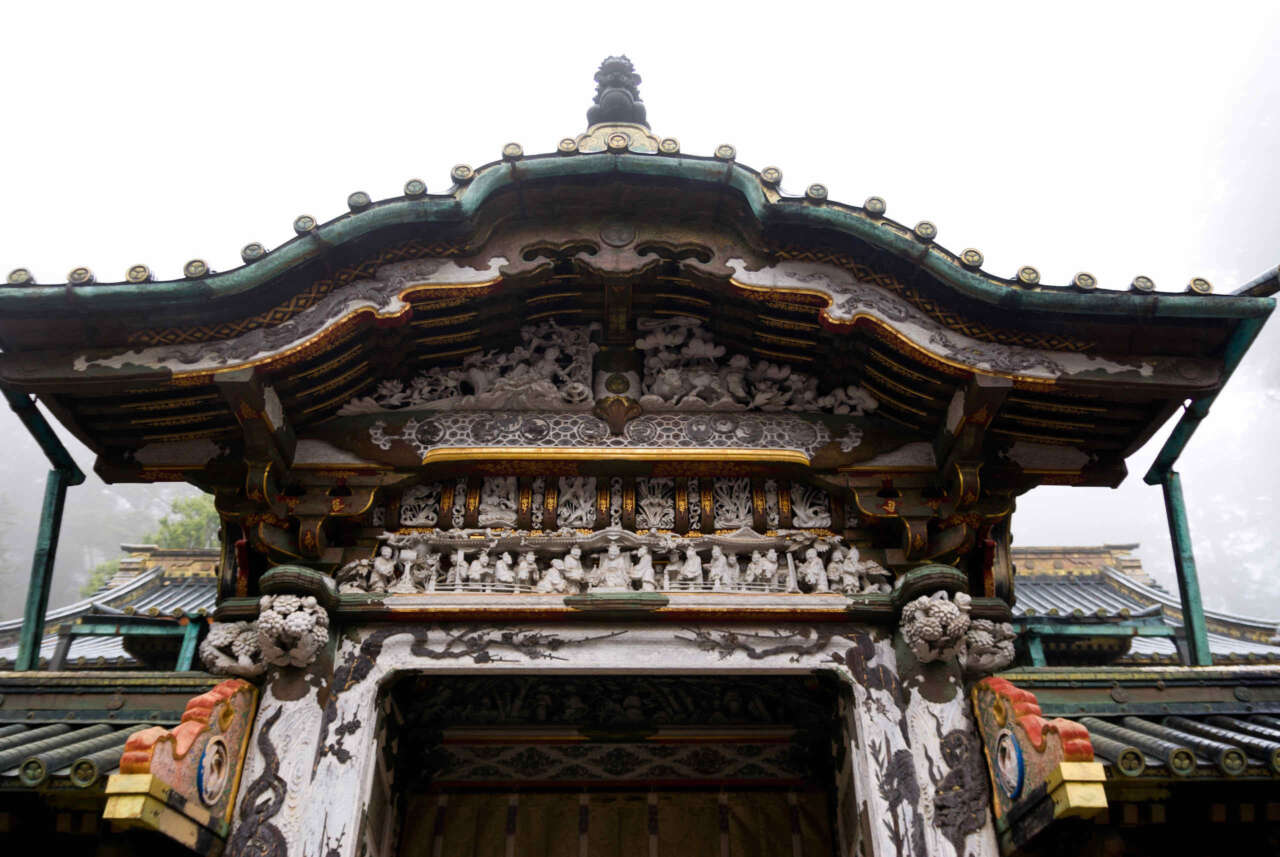
The Karamon is the gate to the main shrine or Honden (本殿) – unfortunately we were not allowed to take photographs there.
From the Honden, there is yet another path that leads to the Okusha (奥社) or inner shrine, which contains the actual mausoleum of Shogun Ieyasu. However, there is a fairly hefty additional charge to visit this shrine, and in a rare moment of stinginess we decided it wasn’t worth it.
The main shrine is encircled by a corridor and a wall full of intricate carvings.
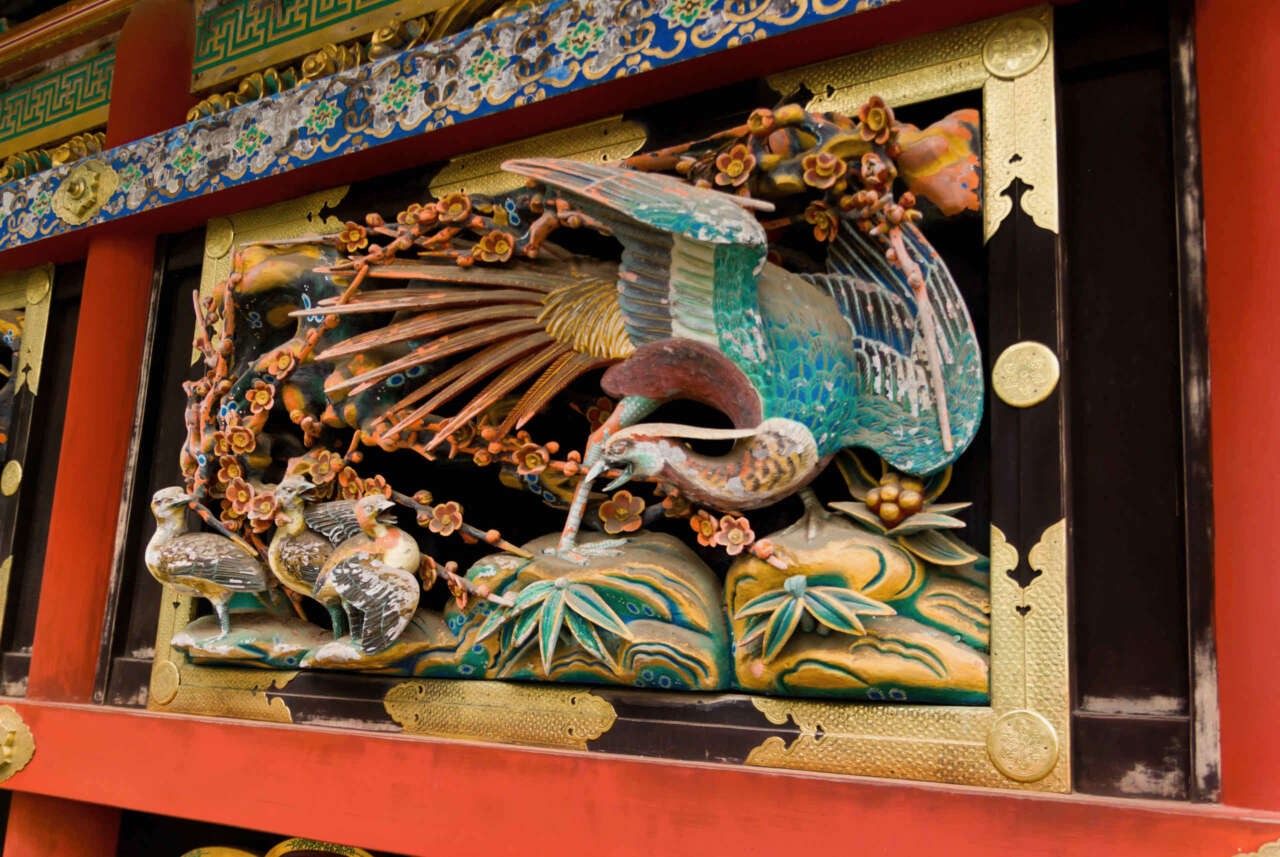
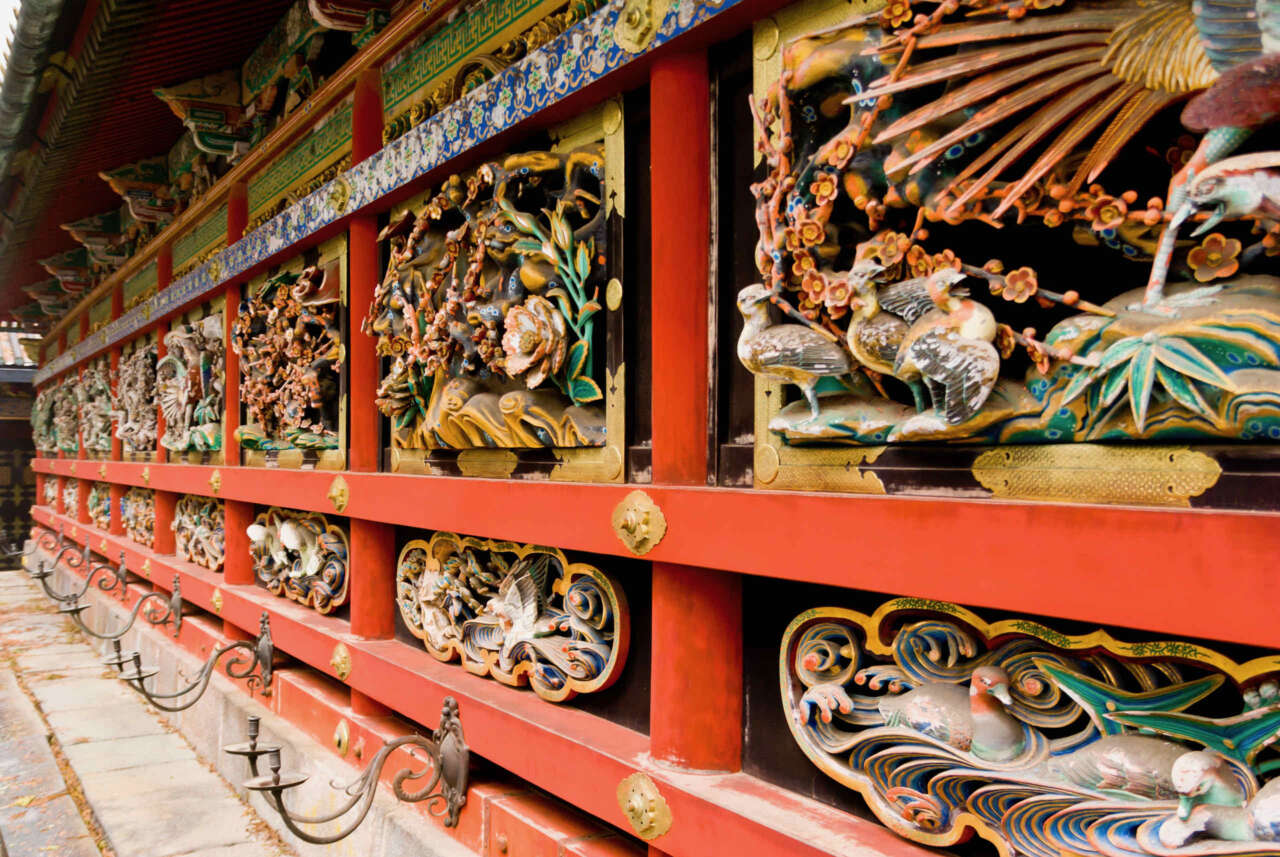
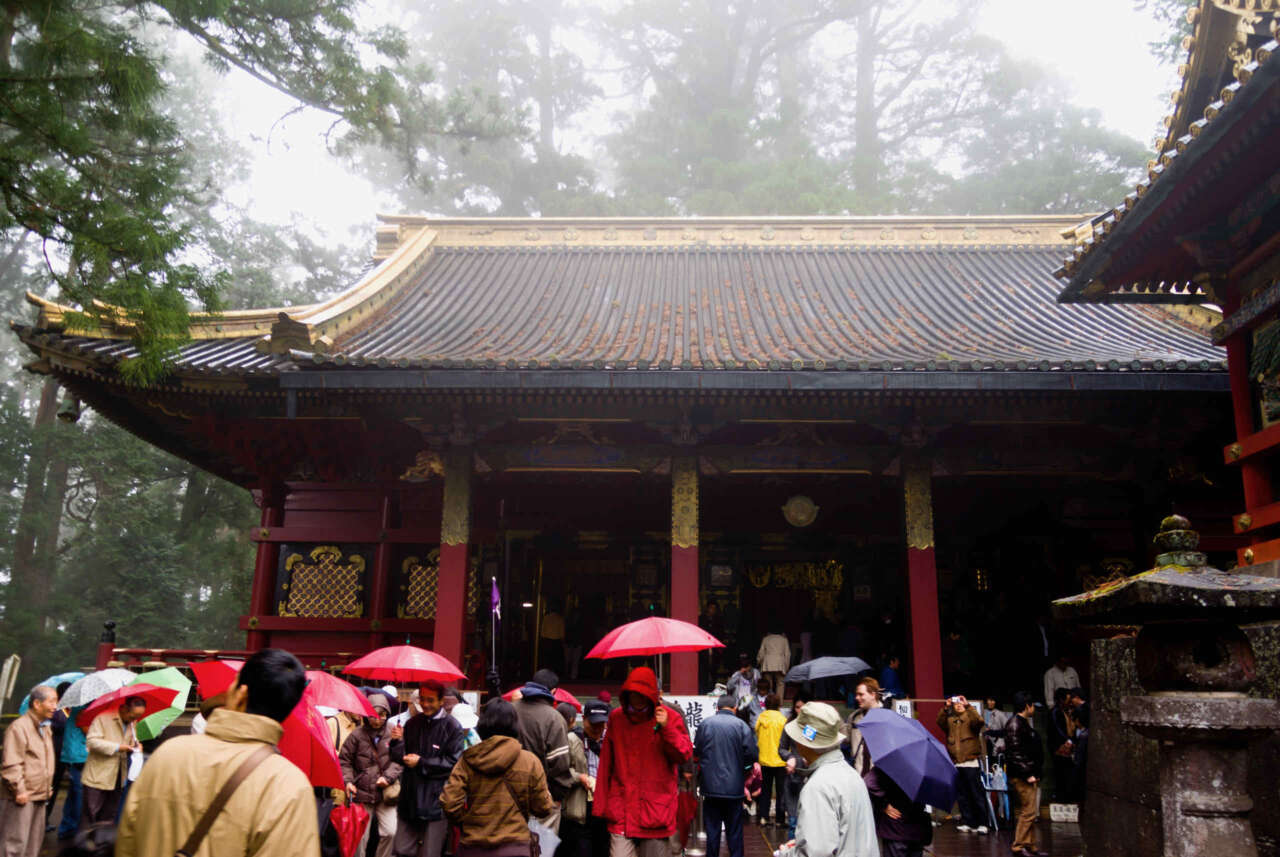
The Honjidou (本地堂), also called Yakushidou (薬師堂) because it is used to house the Yakushi Buddha, is famous for the presence of a weird acoustic effect. If one claps one hands right underneath the ceiling painting of a coiled dragon, the echos make it sound as if the dragon is crying. When I was there, I had to queue for quite some time as we all took turns to hear the rather longwinded explanation of the monk (in Japanese) and then to hear the sound of the crying dragon ourselves.
Whilst waiting in the queue, a Japanese man noticed my shoes (Columbia trekking sandals) and started laughing at them. He was teasing me because he said my shoes reminded him of the geta (下駄) which is the traditional Japanese wooden clogs / sandals, and he was wondering whether I was wearing the one-tooth variety which is used for mountain climbing!
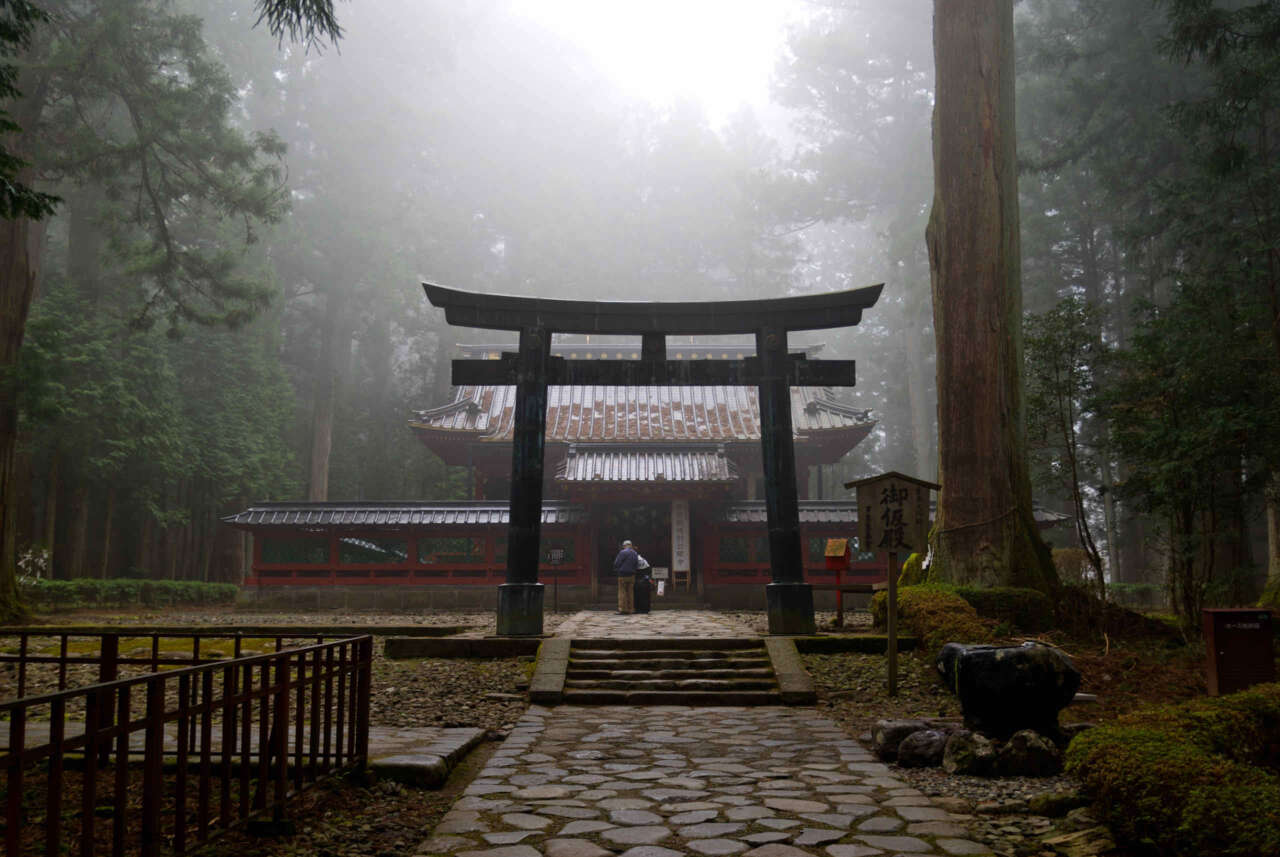
On the way back, we stopped by to visit the Okariden (御仮殿) – or temporary hall used to house the spirits whenever a building is being maintained or repaired – which apparently happened often enough that the temporary hall is itself a rather permanent shrine.
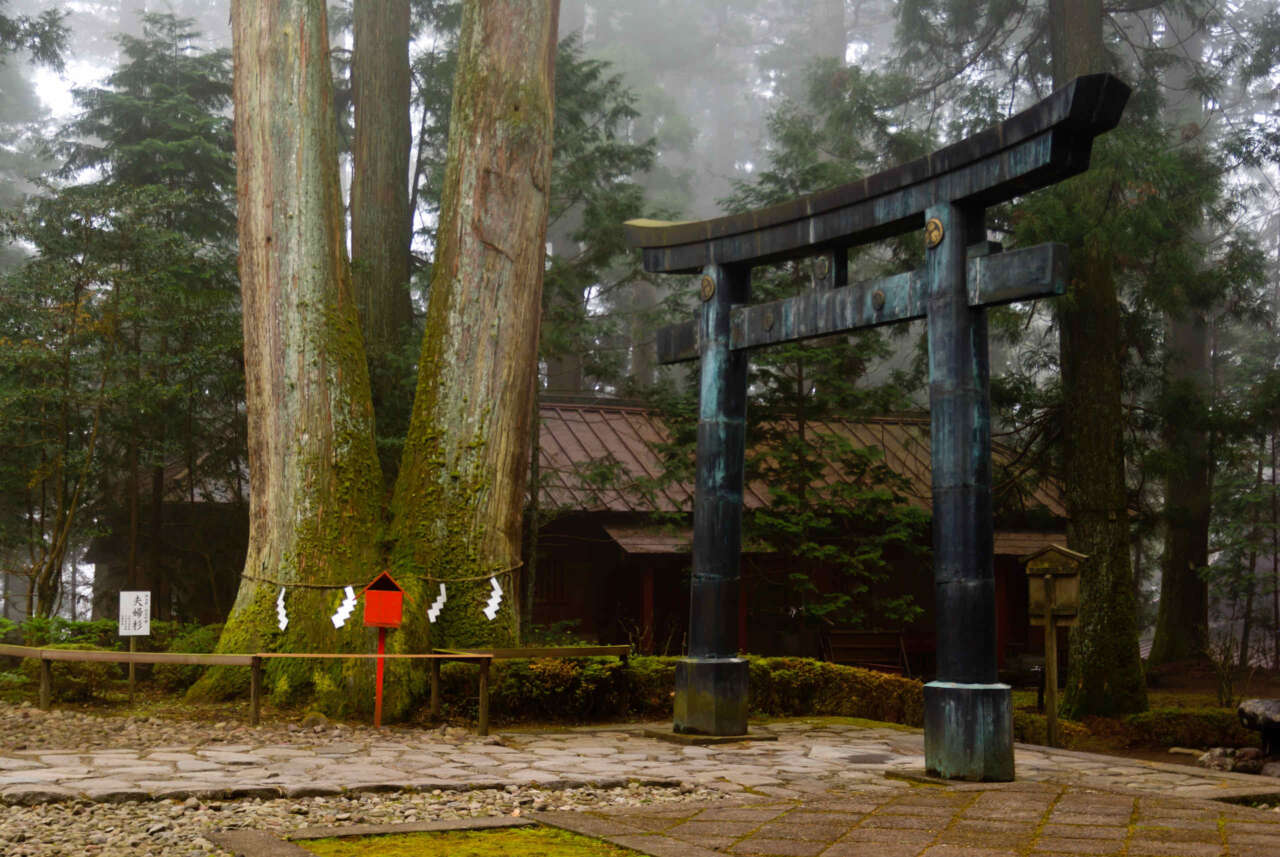
It even has it’s own Torii.
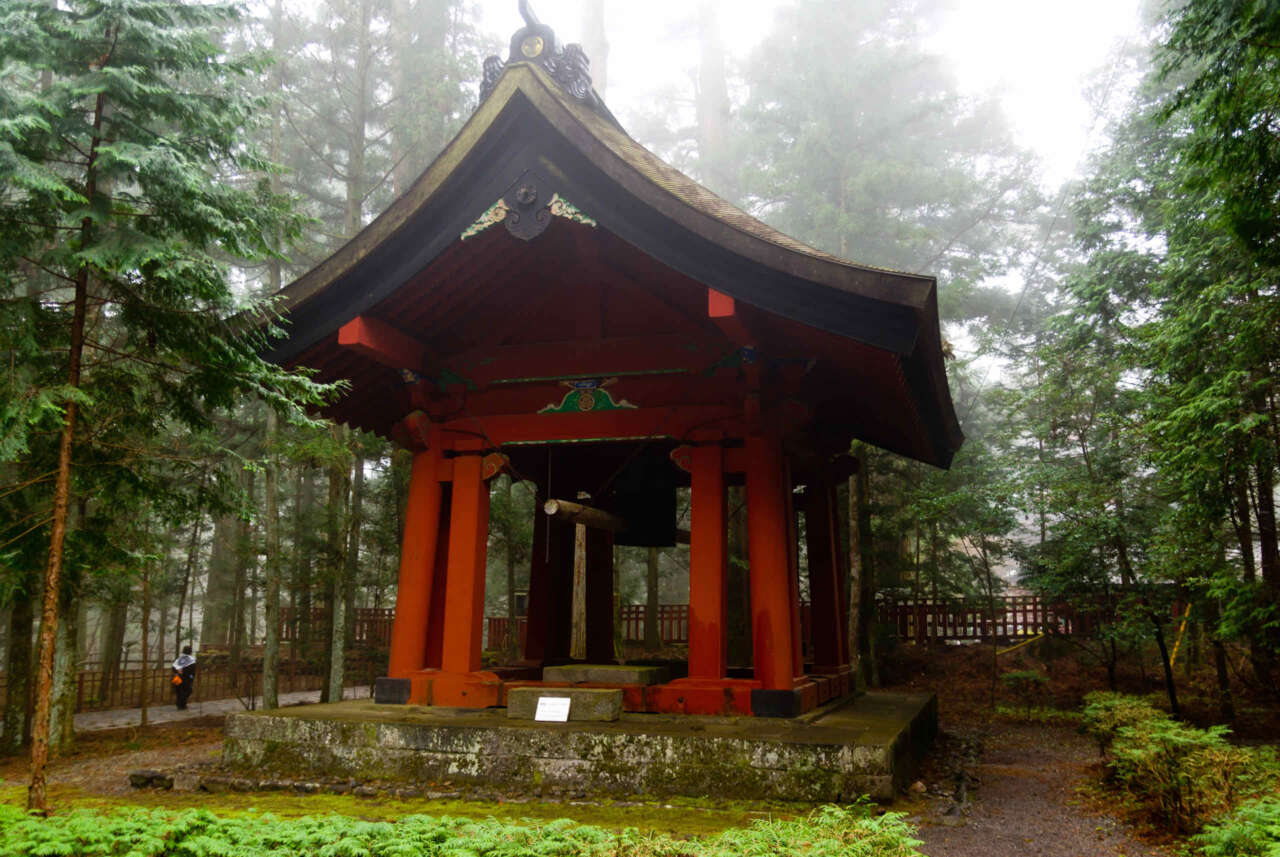
Next to this hall is the bell house.
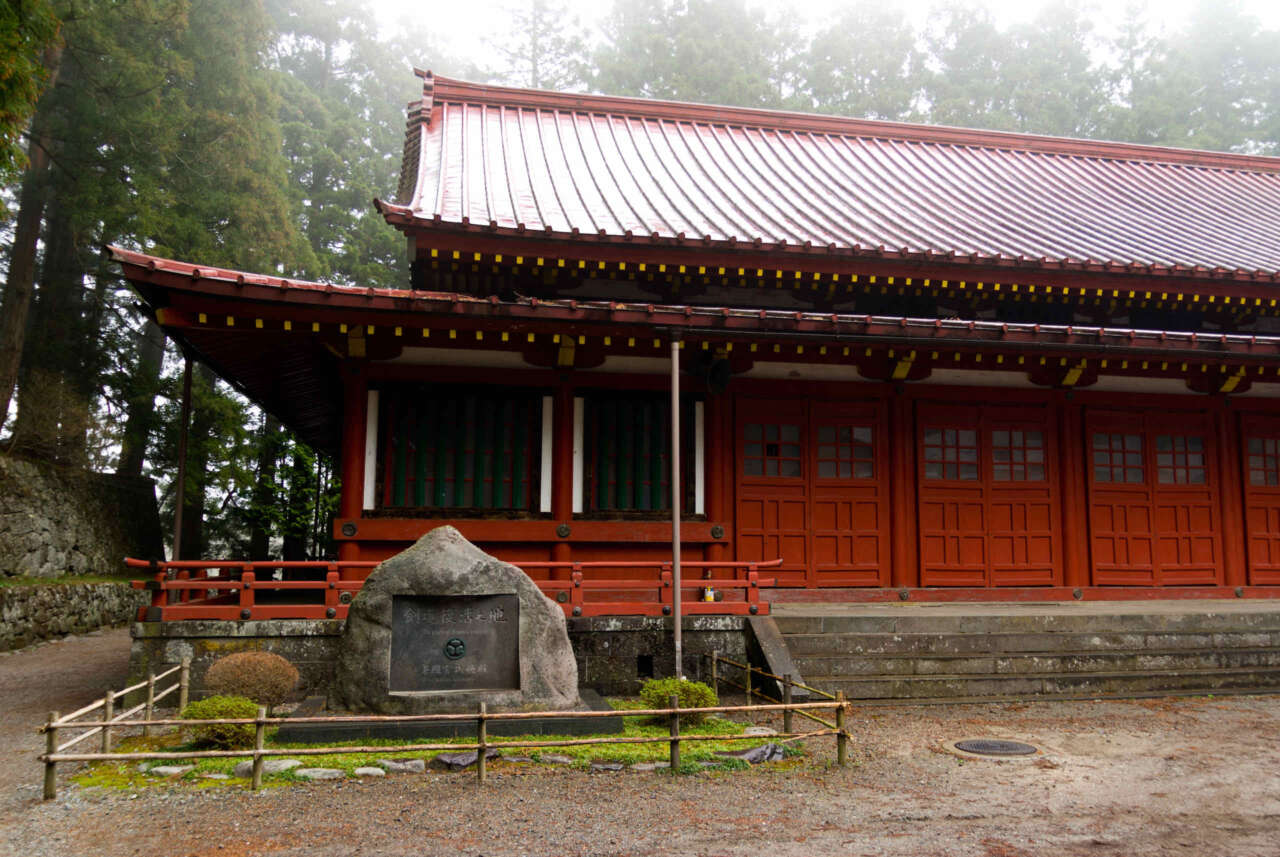
The Butokuden (武徳殿) has a stone on it with the following inscription “The place of Kendo’s rebirth”.
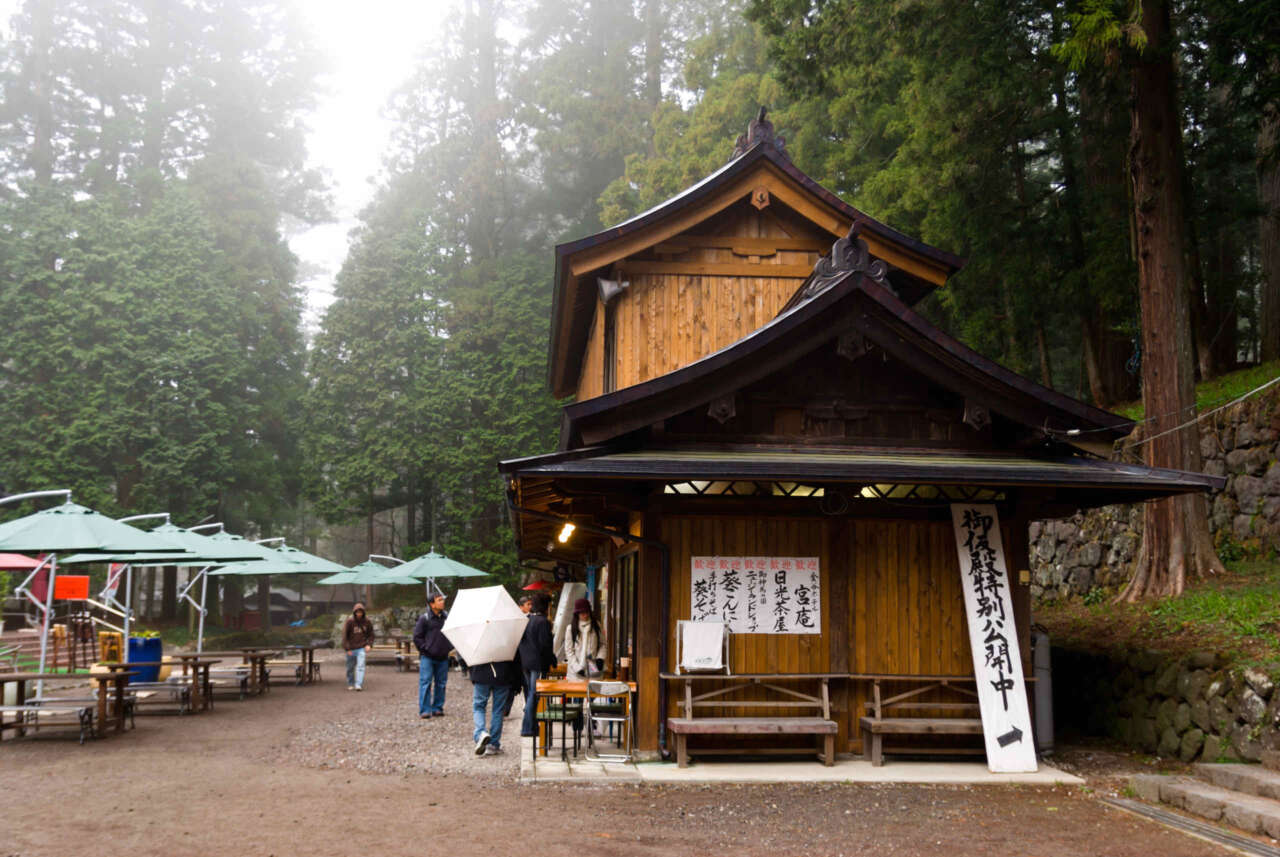
And on our way out, we passed through a number of eating stalls for the hungry.
Full photos.



























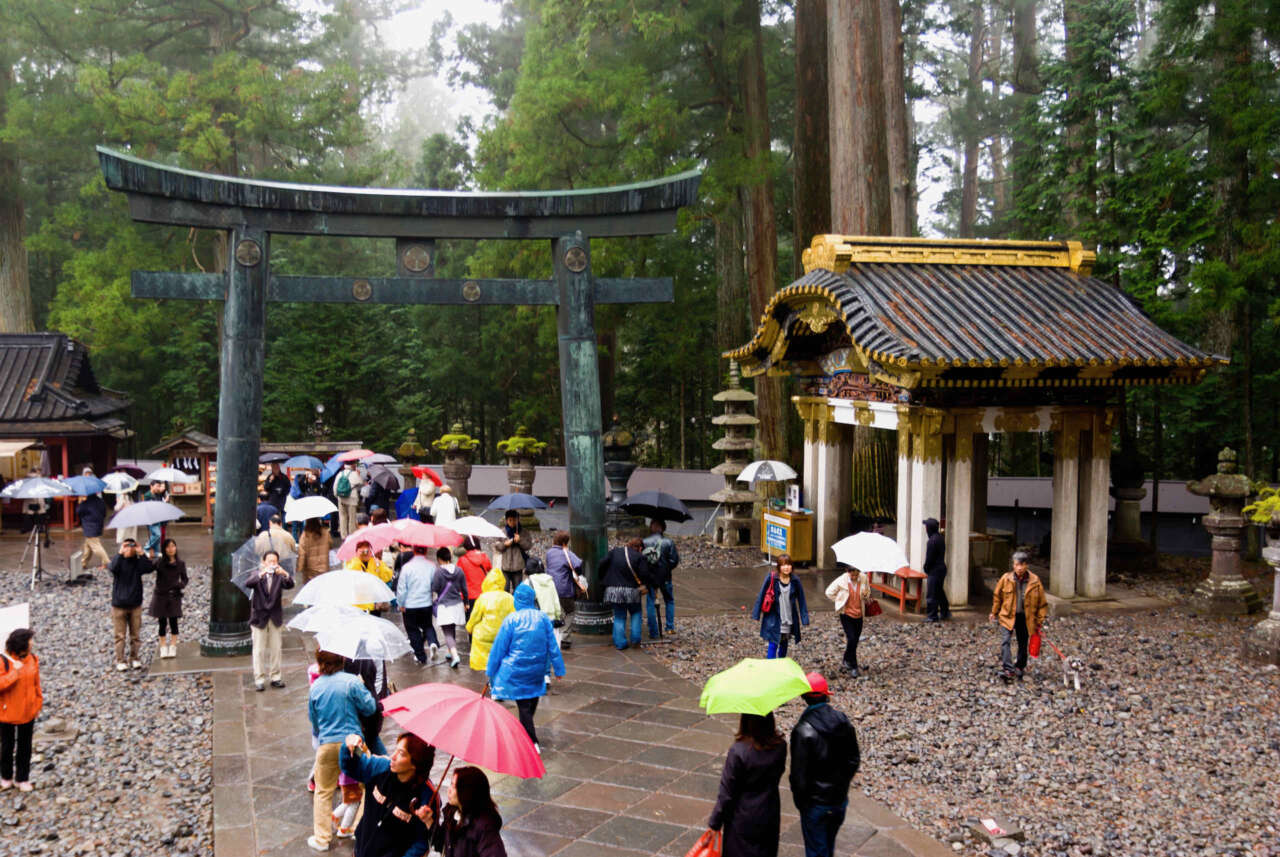
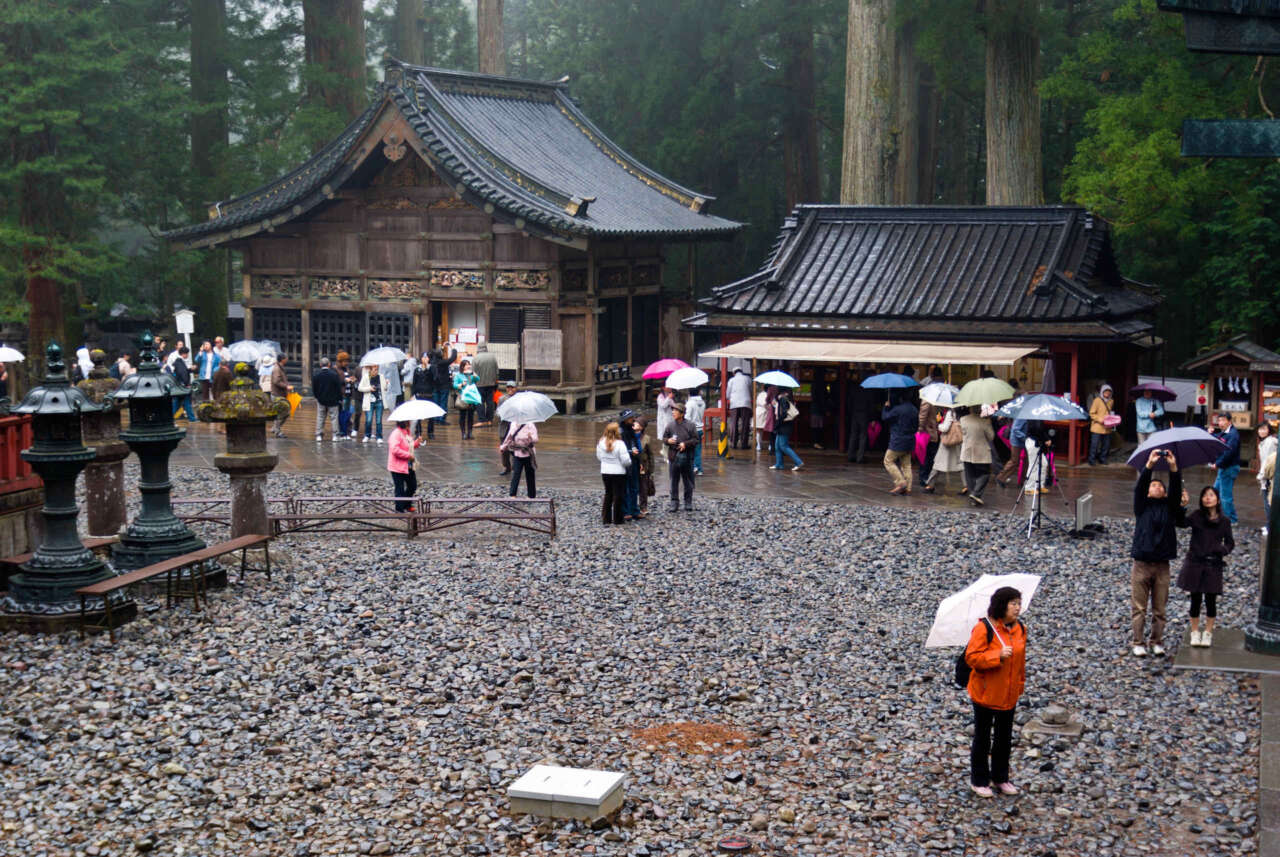


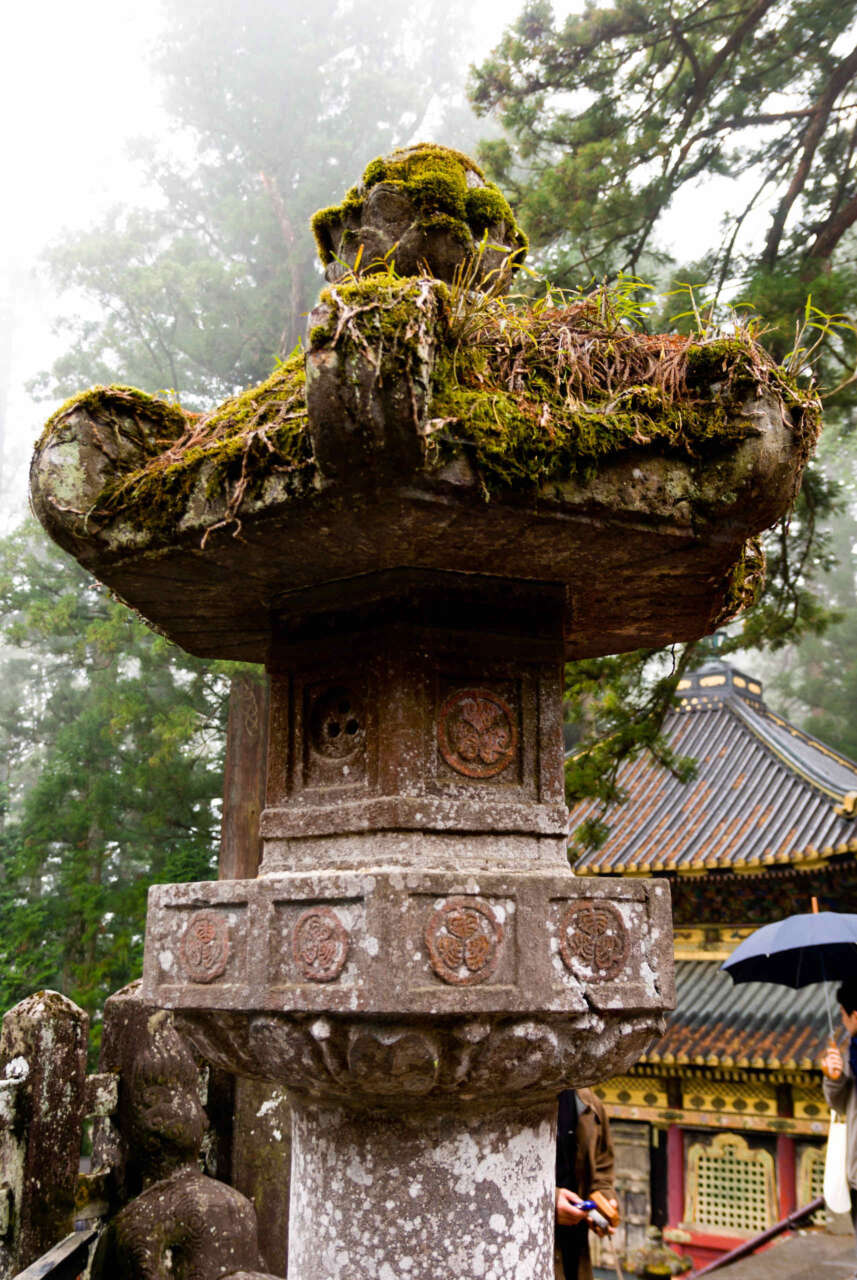








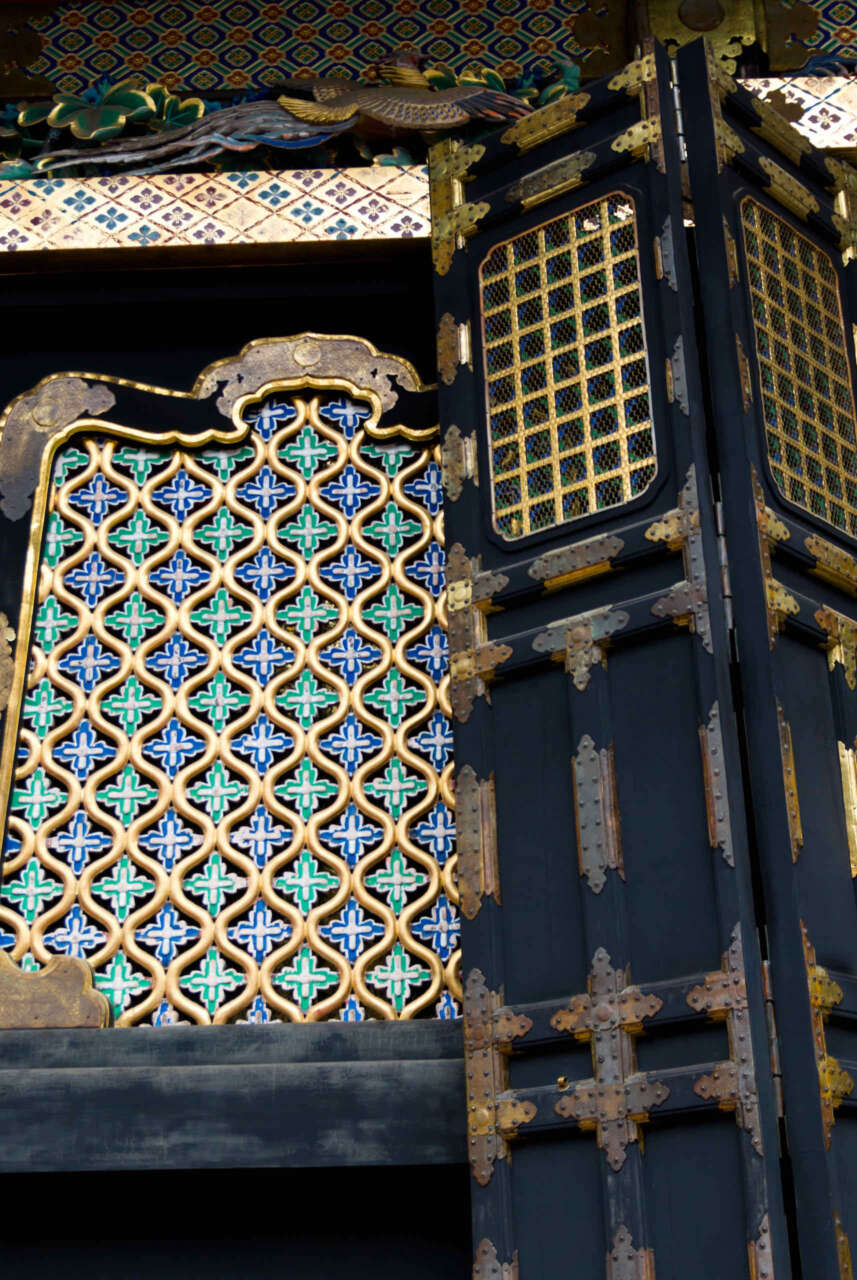
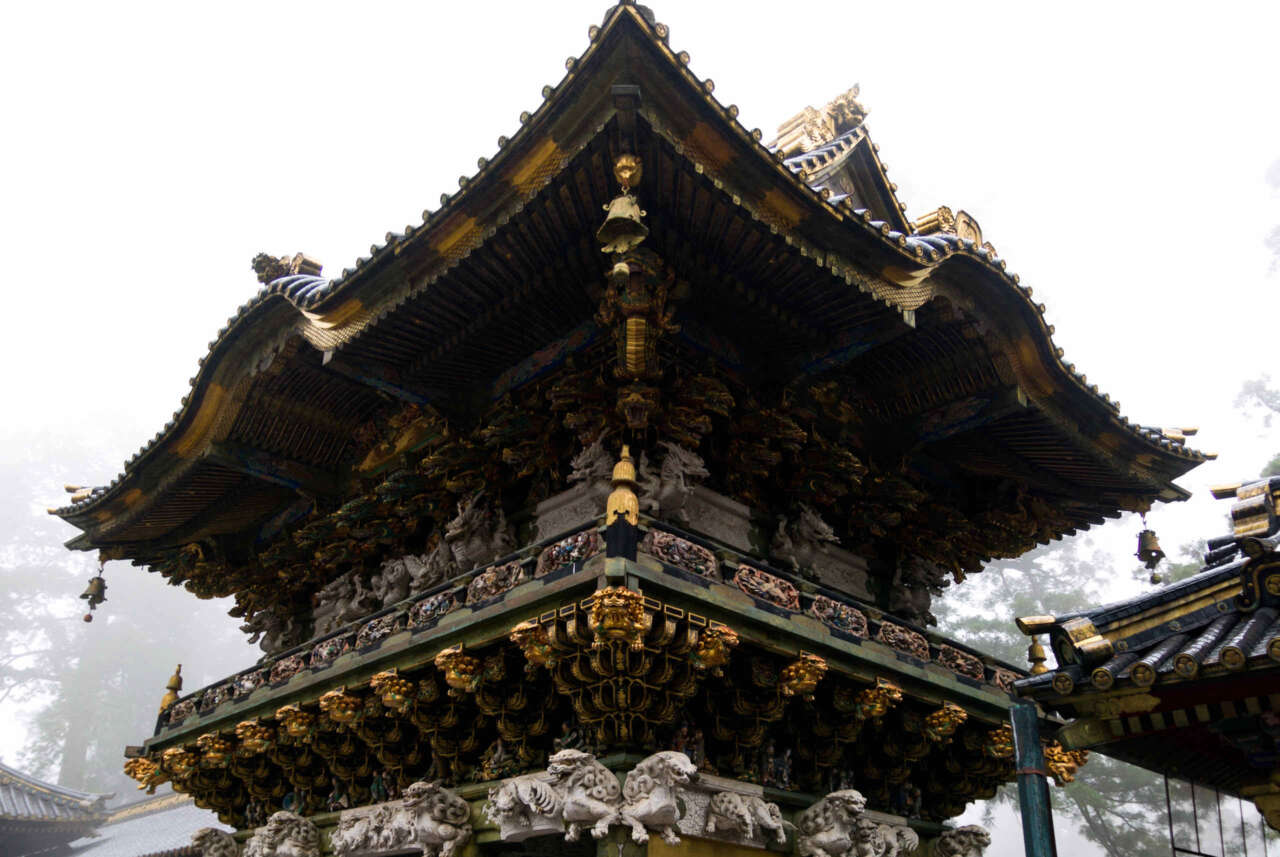


















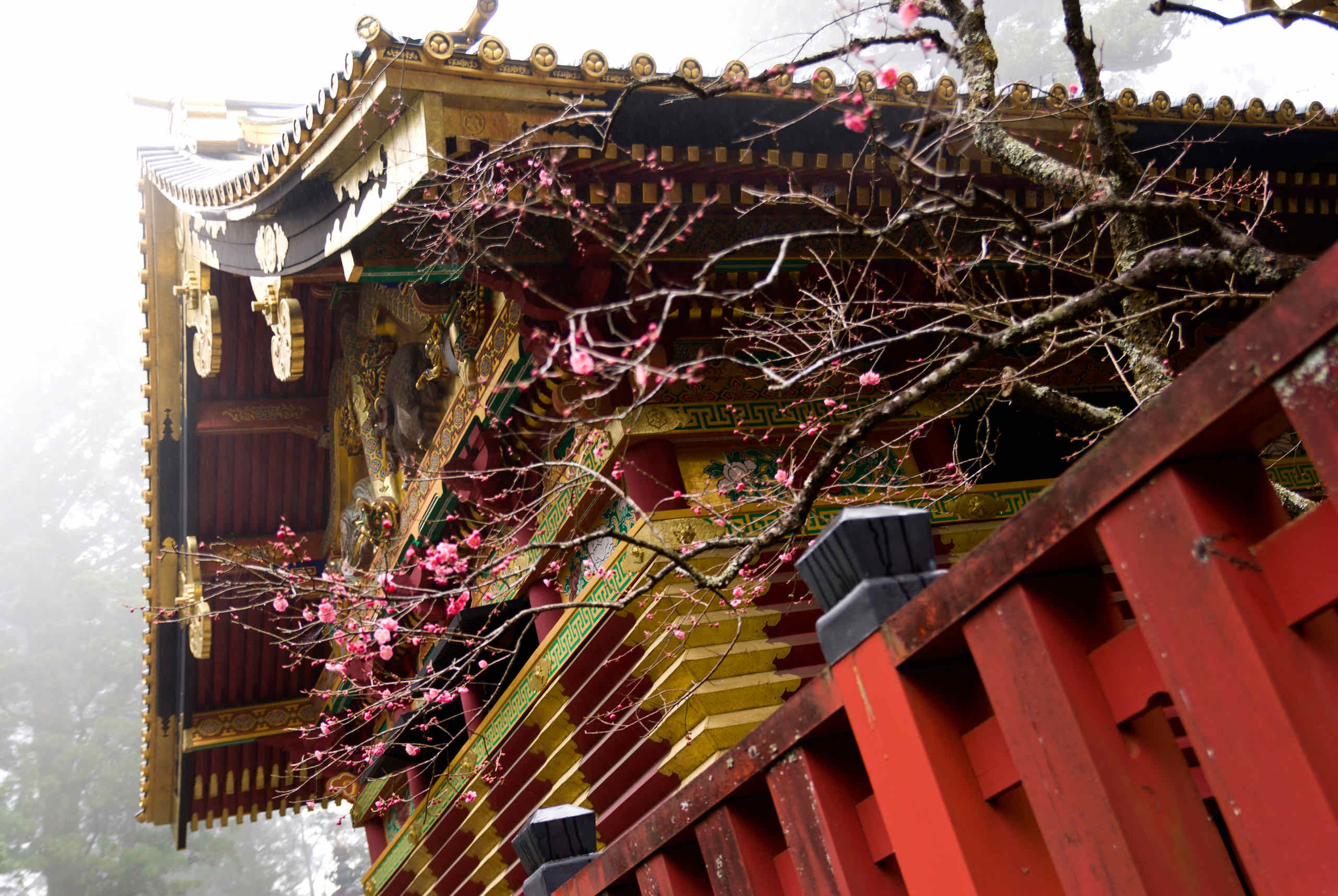
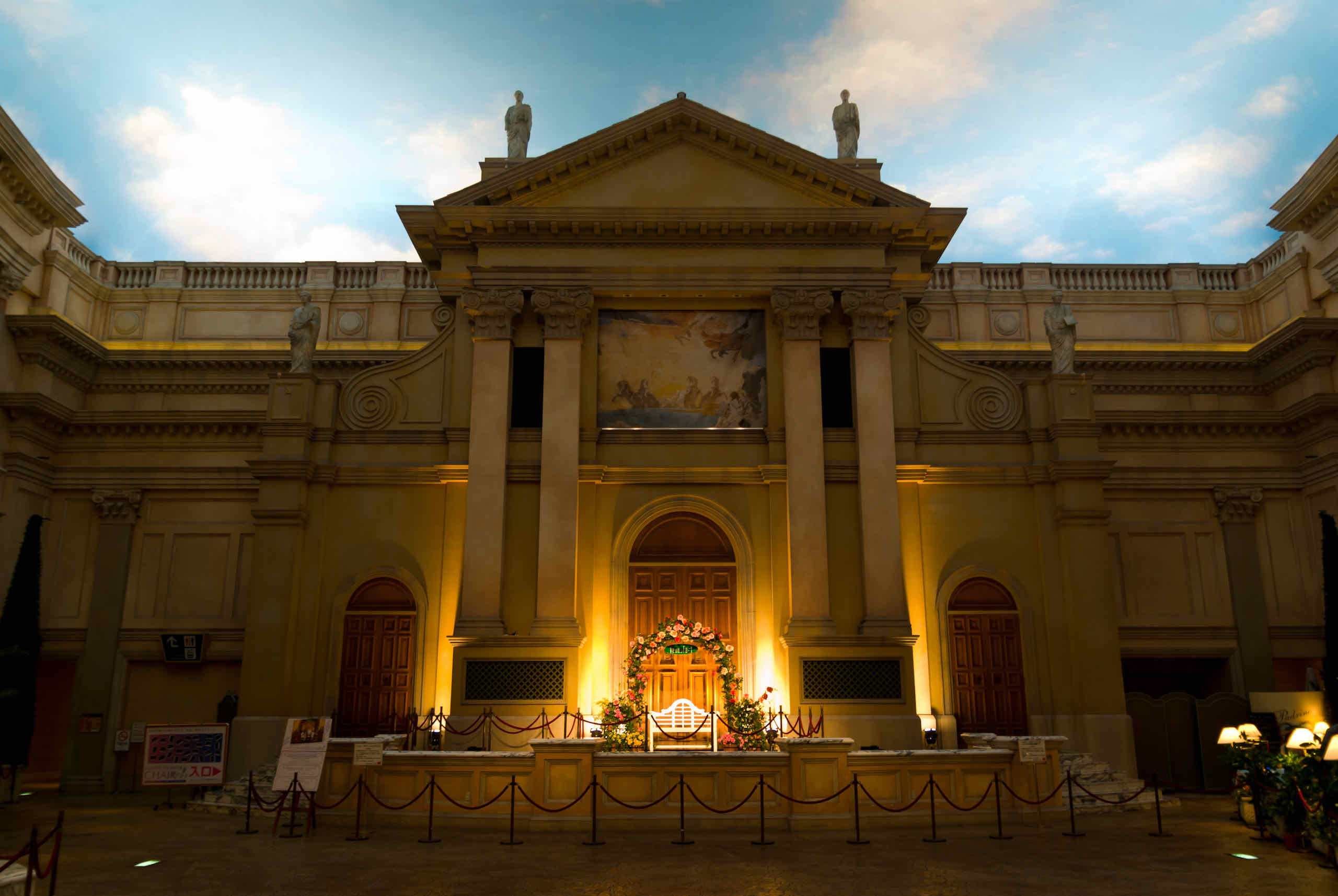
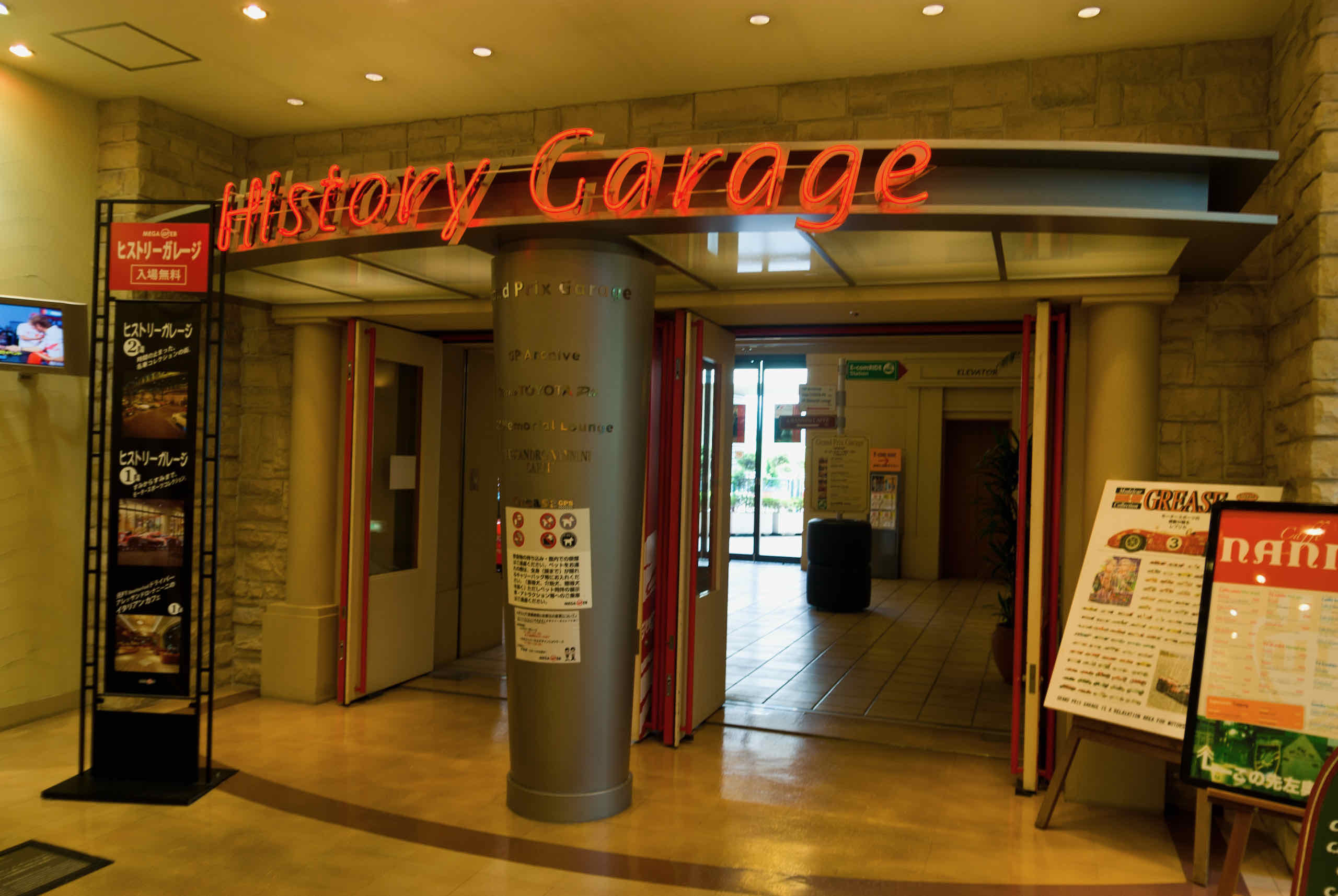
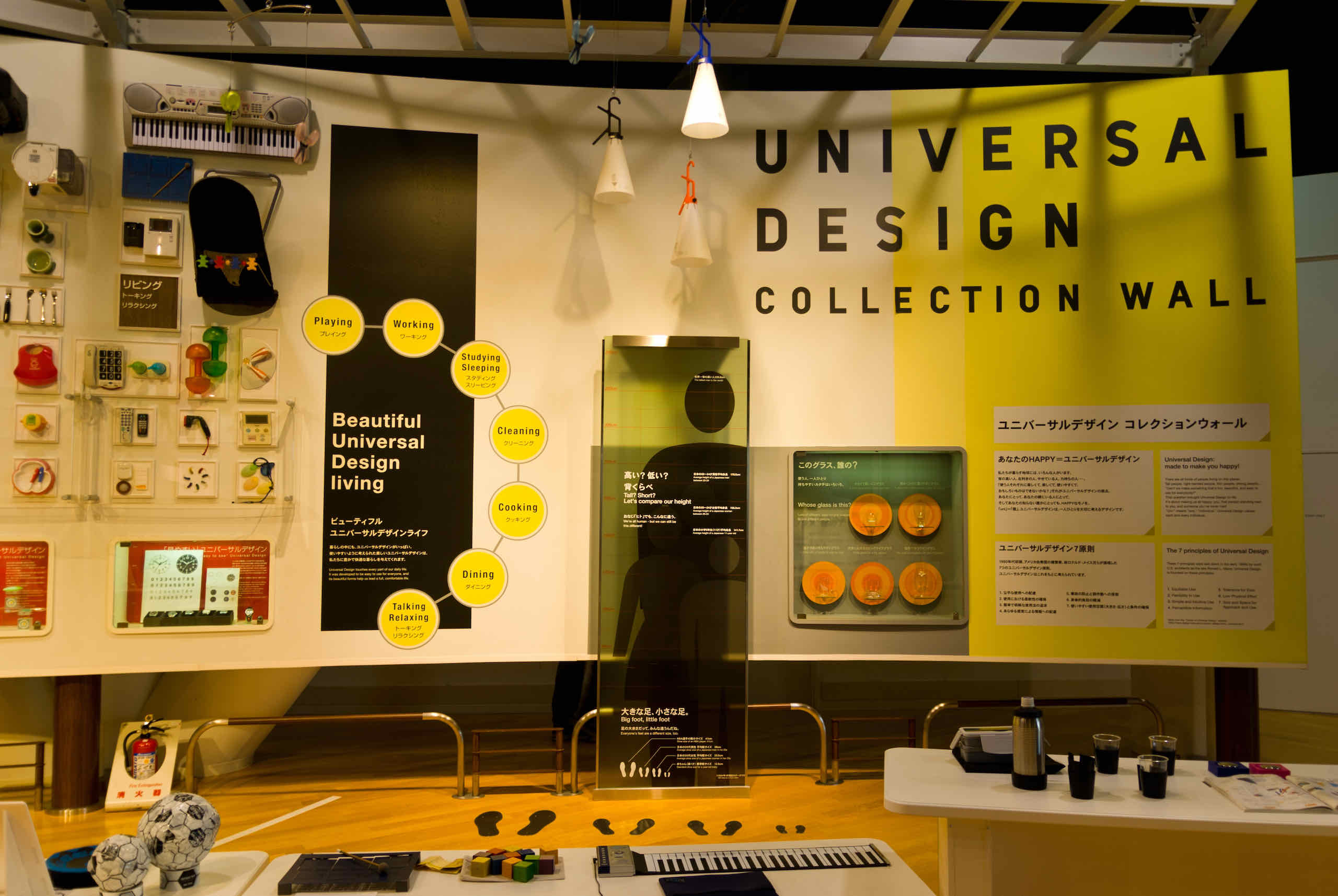
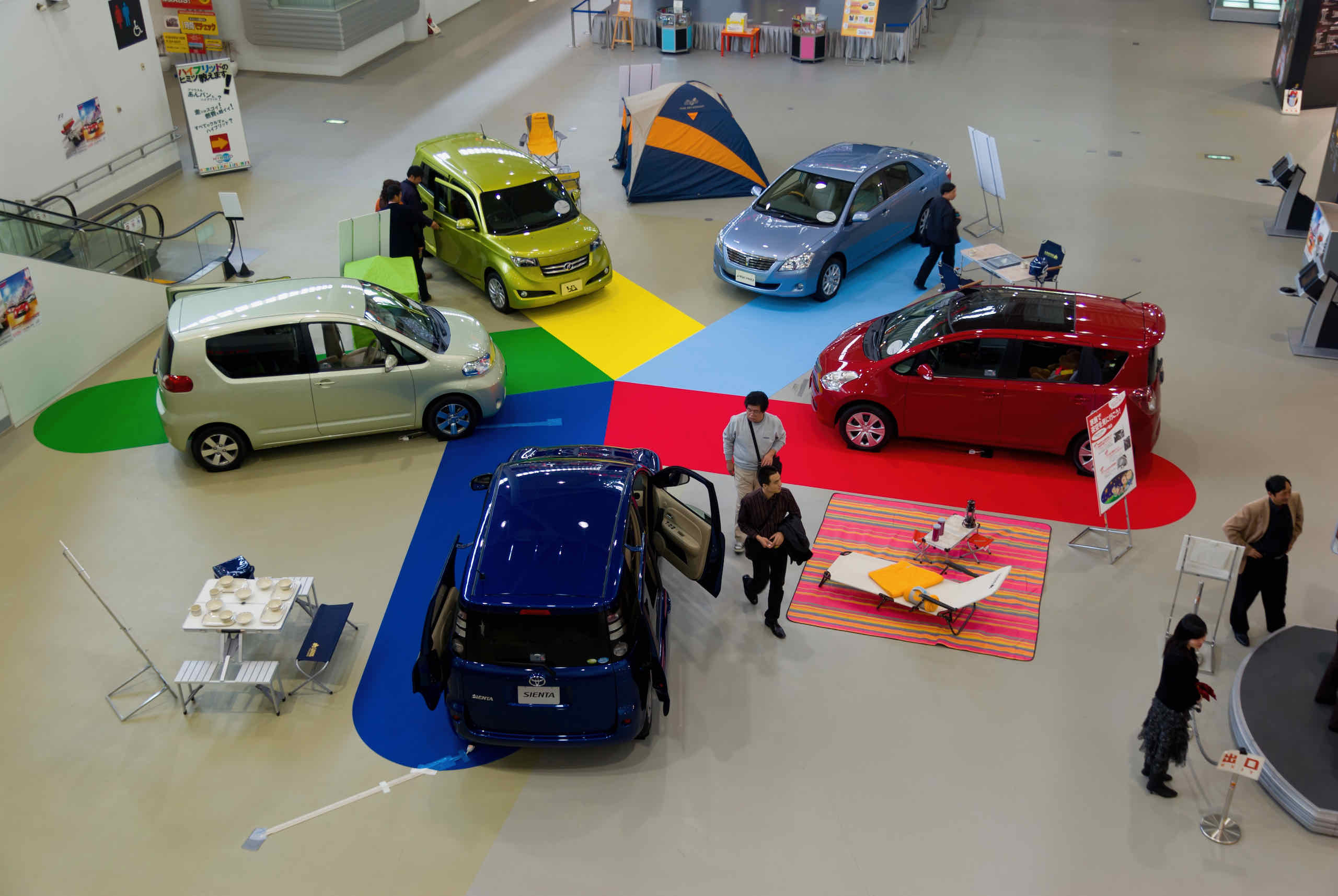
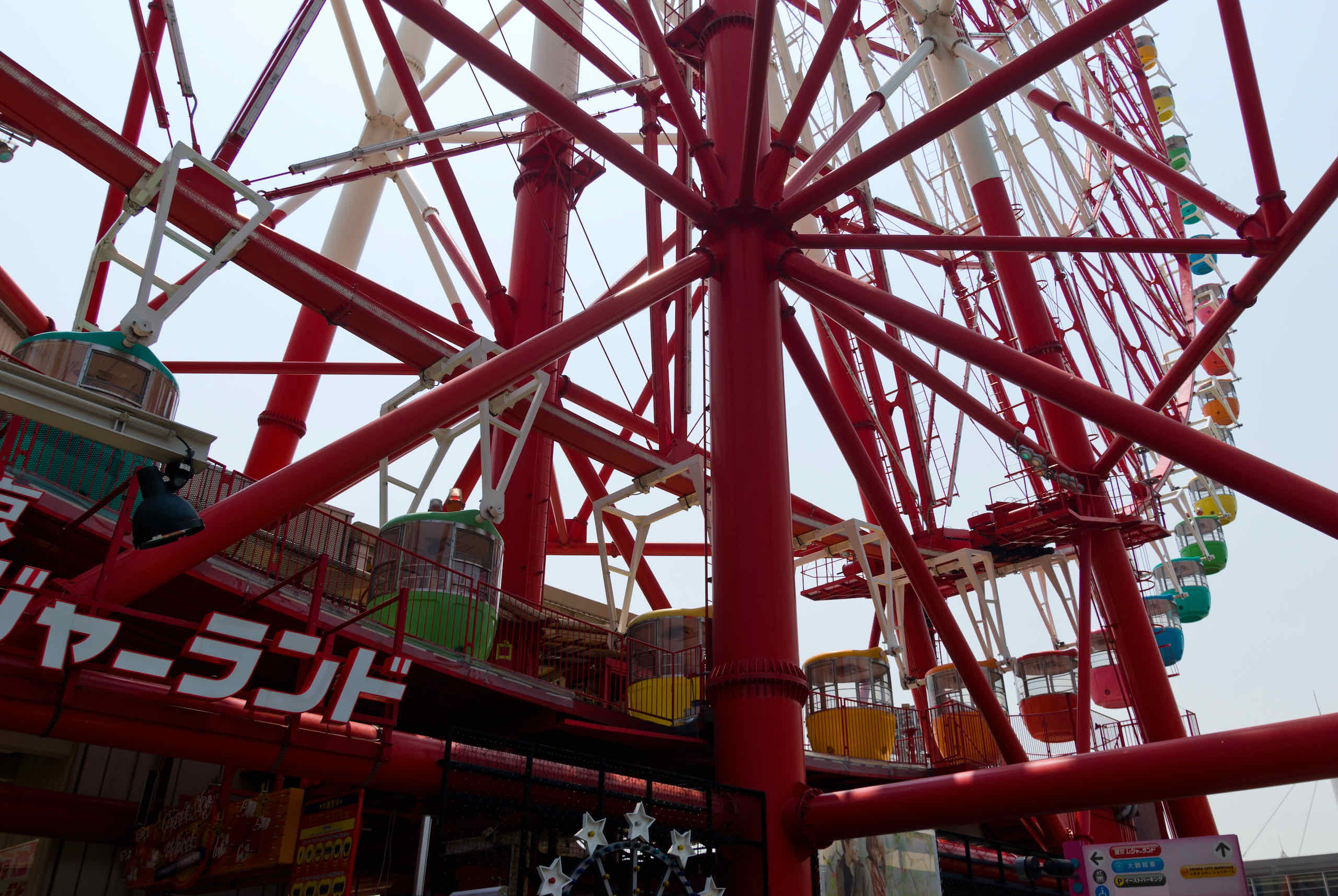
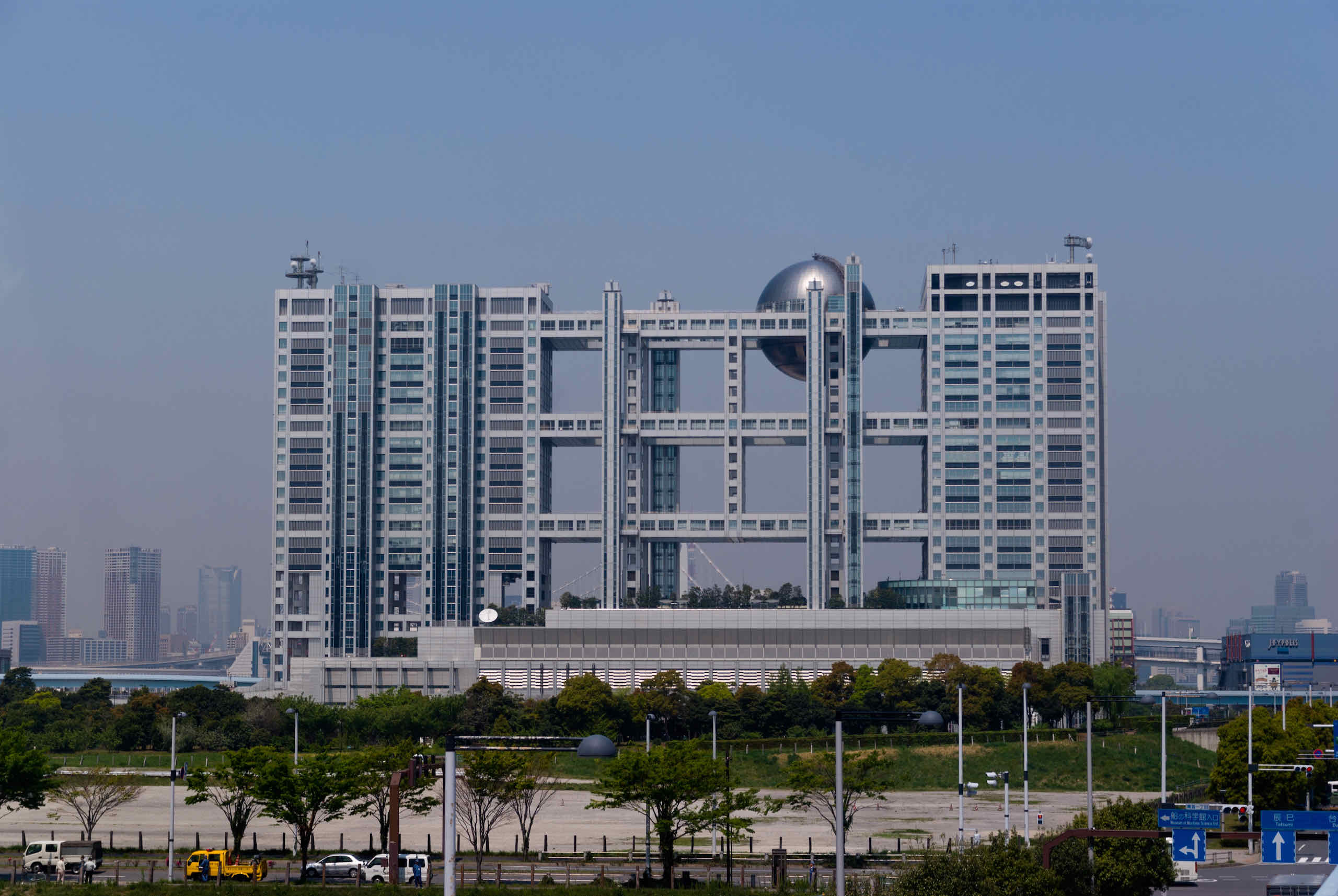
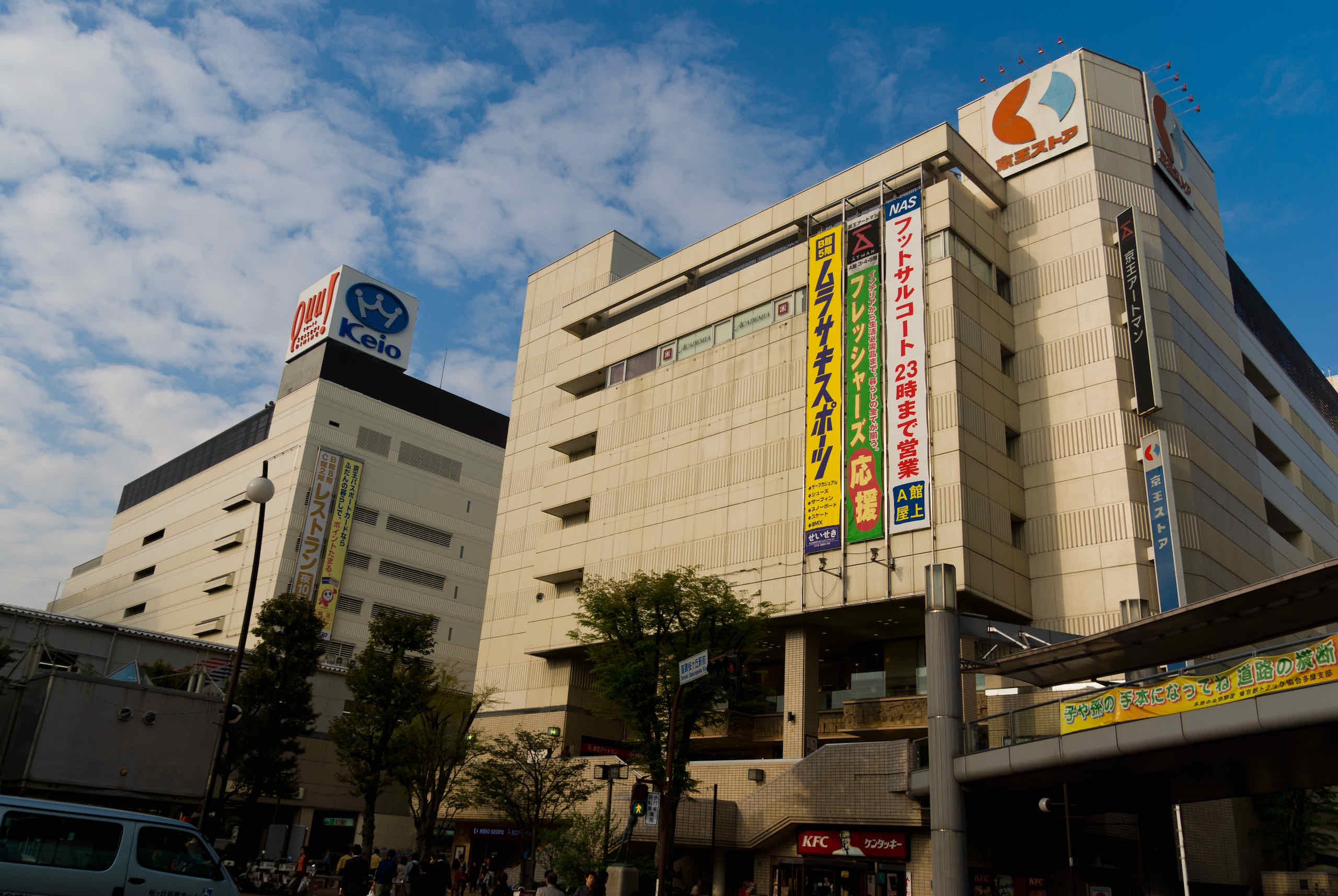
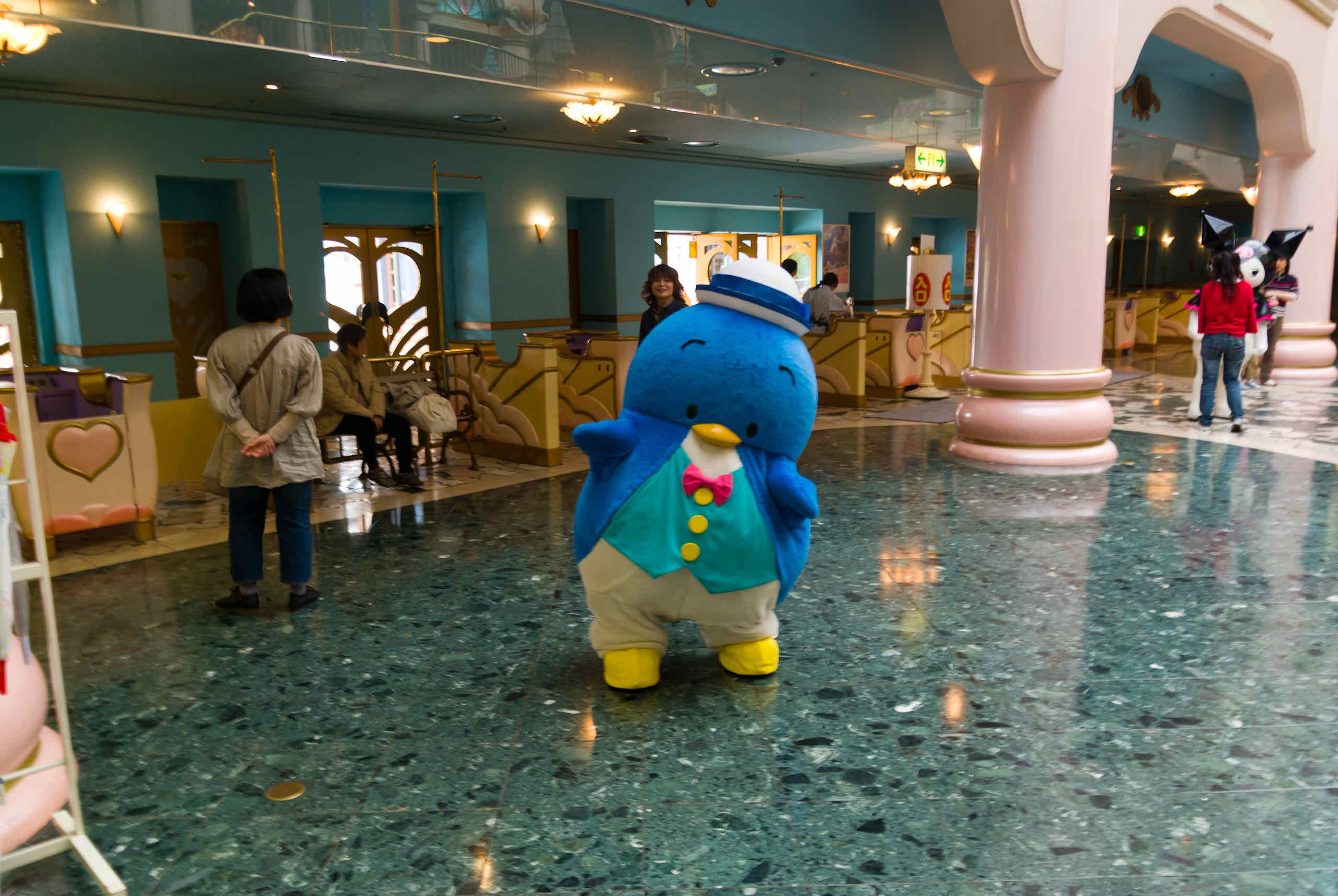
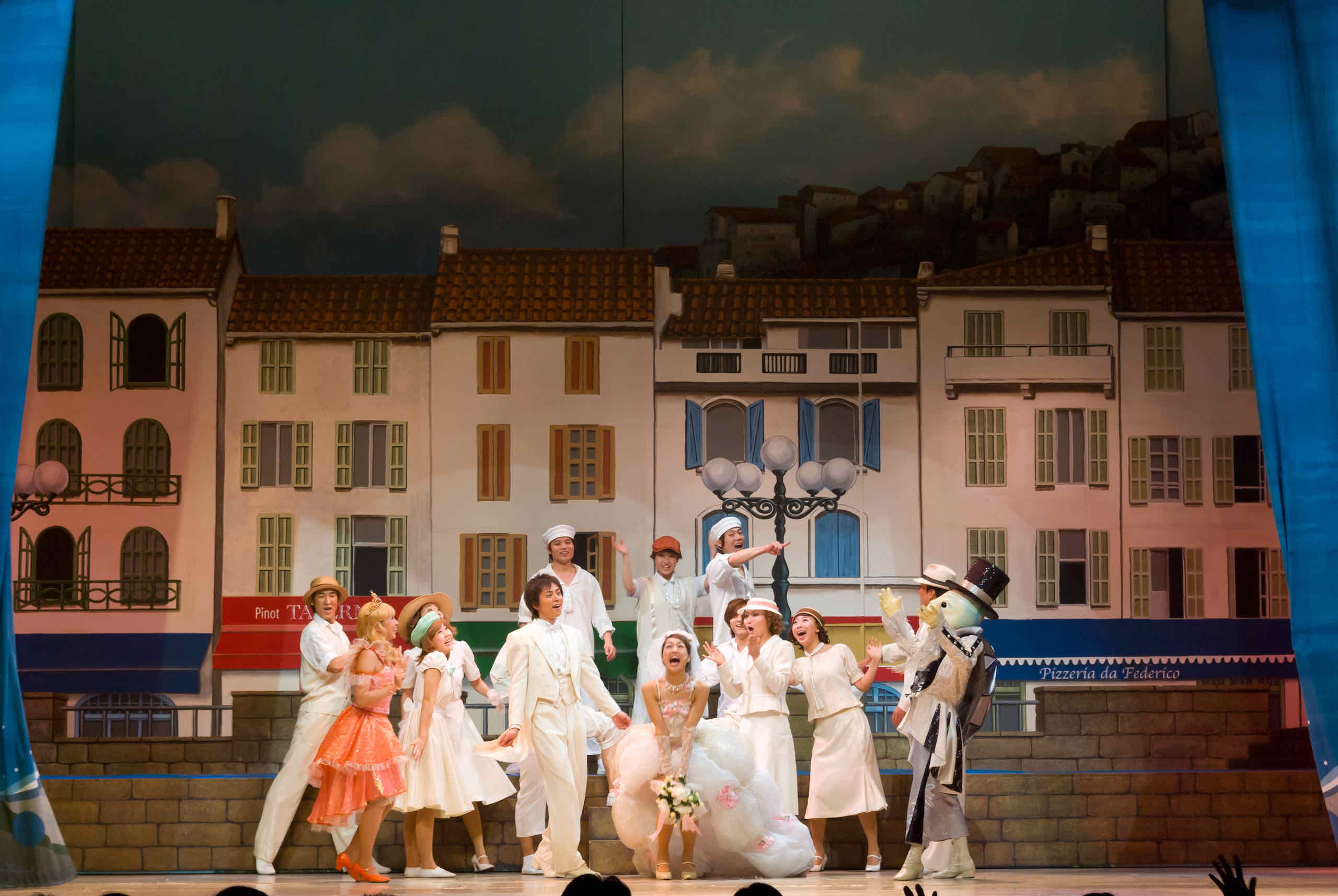
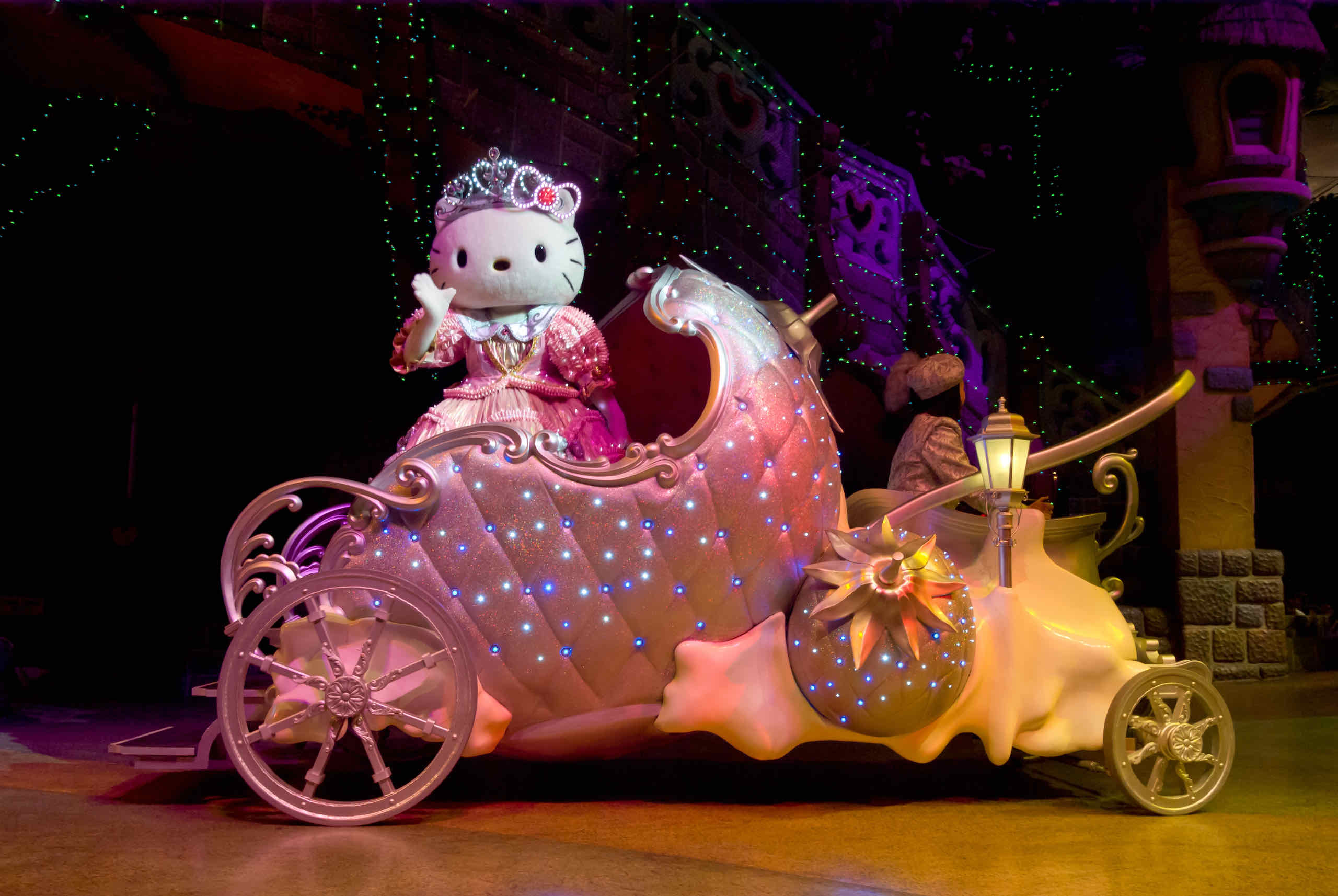
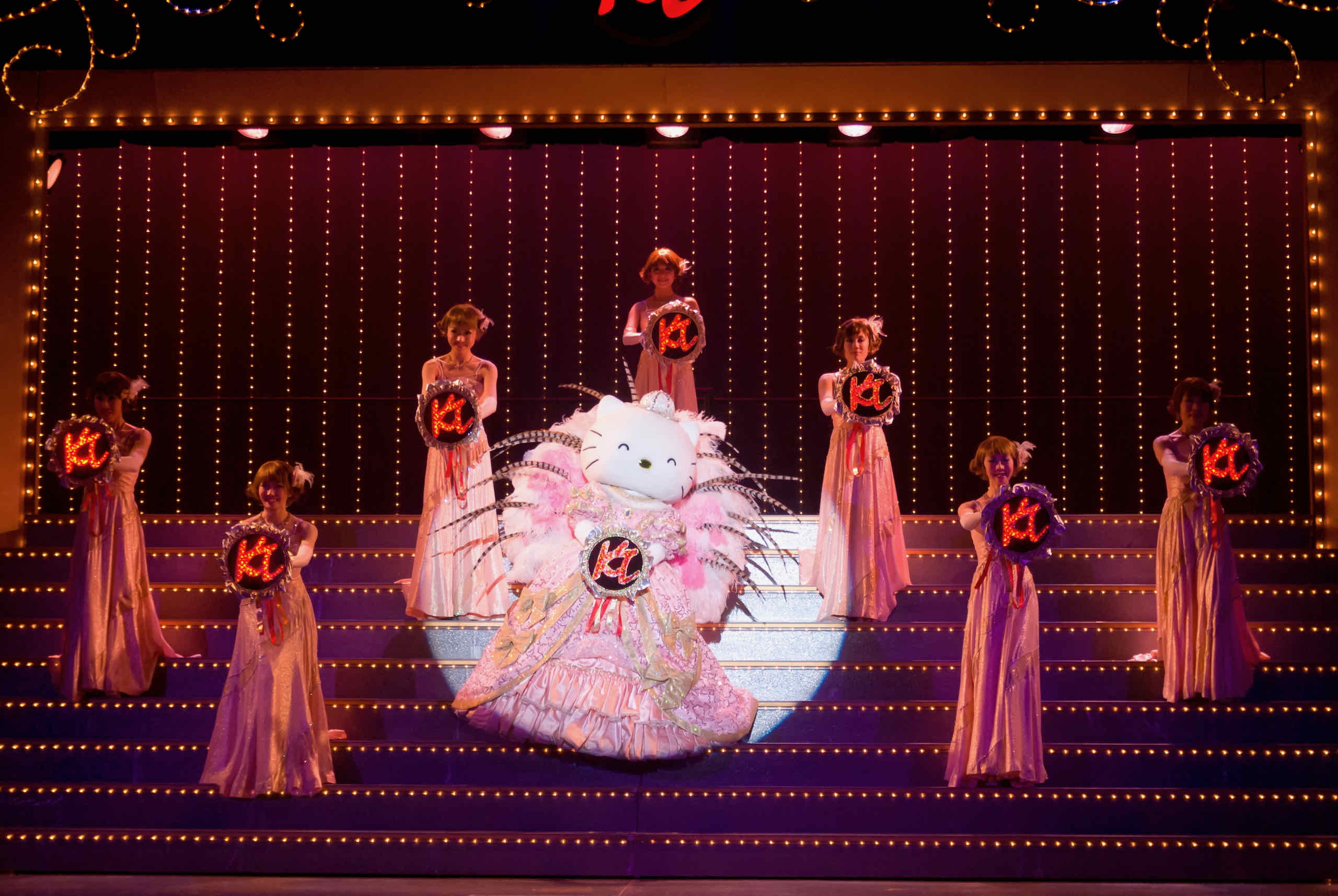
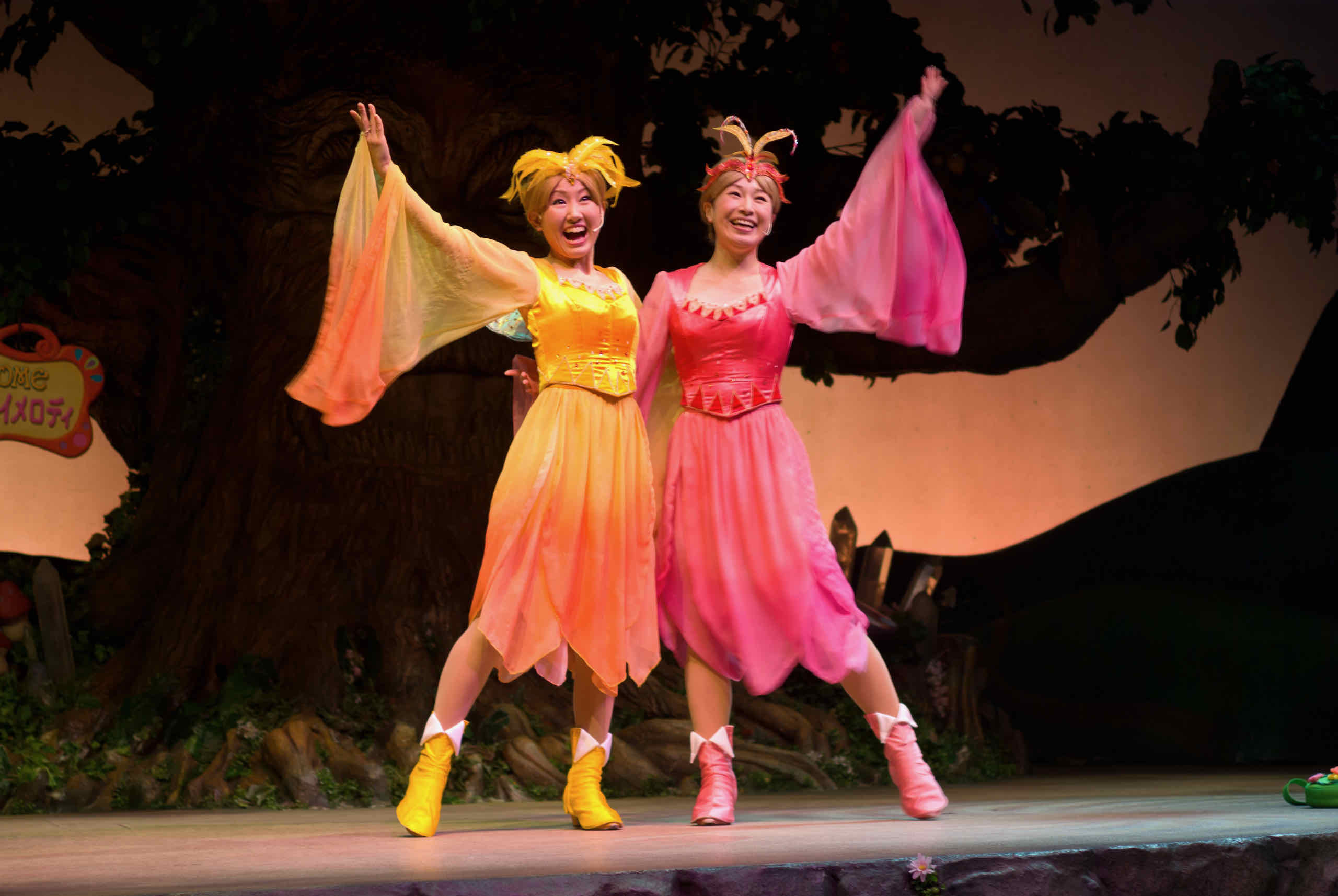
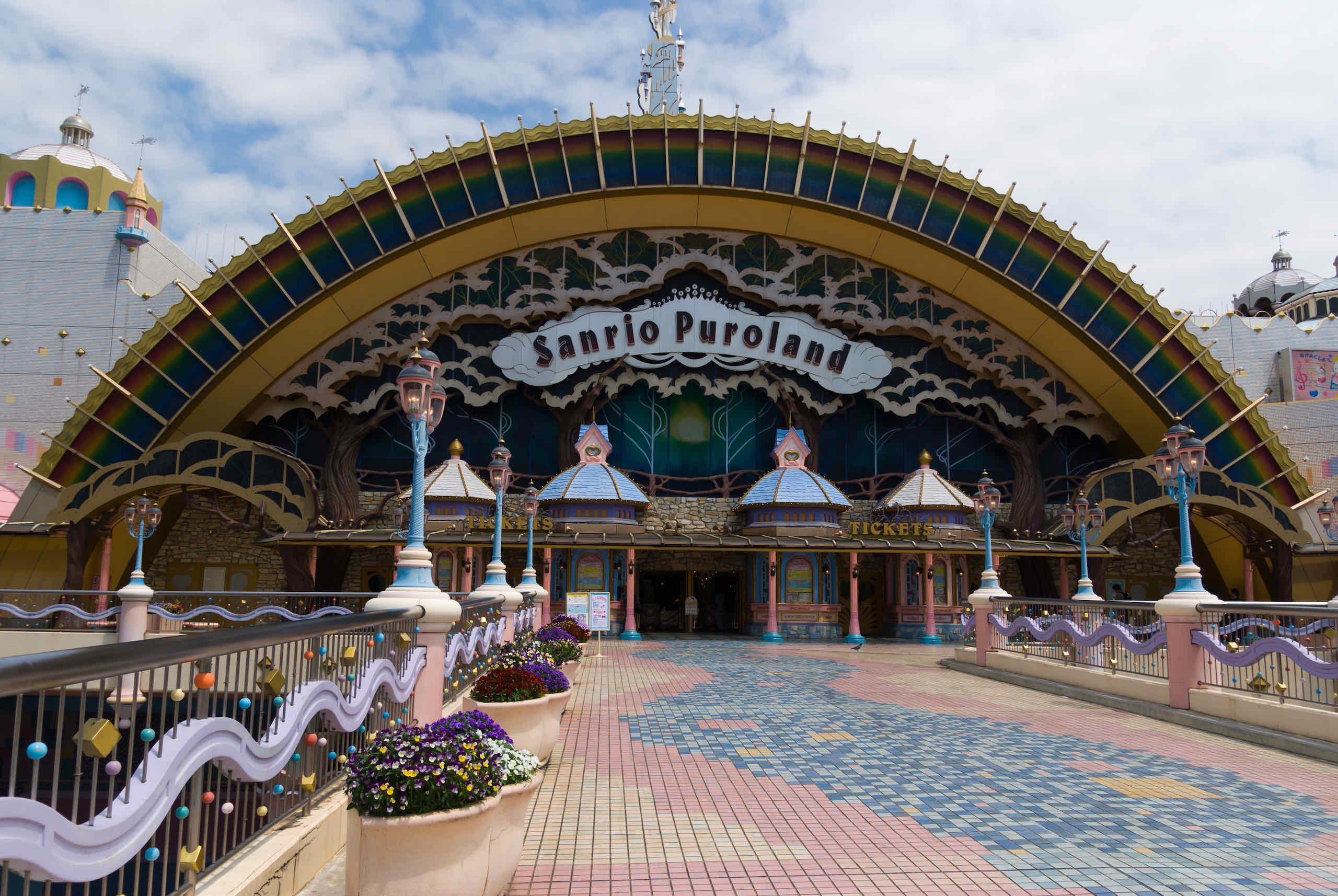
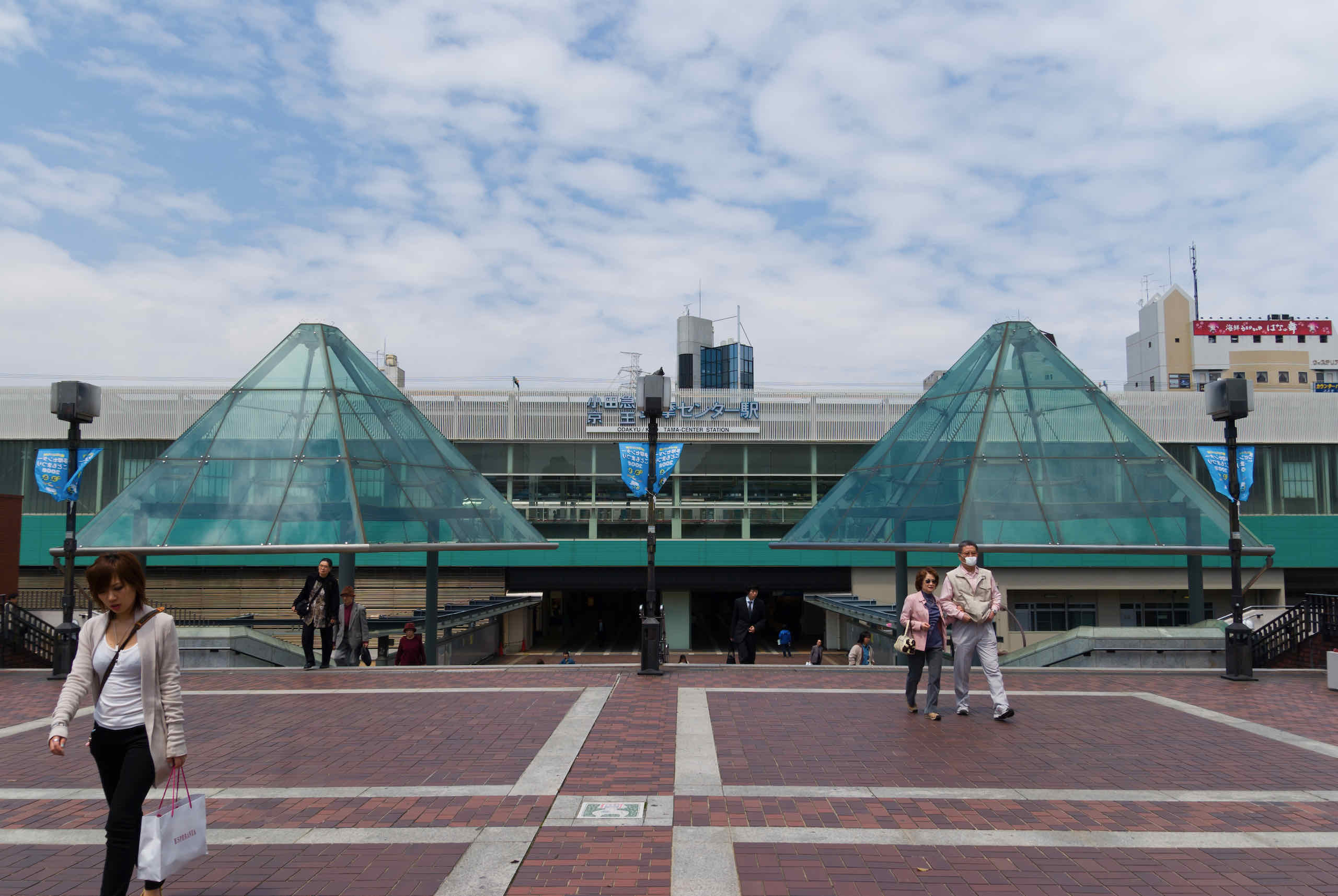
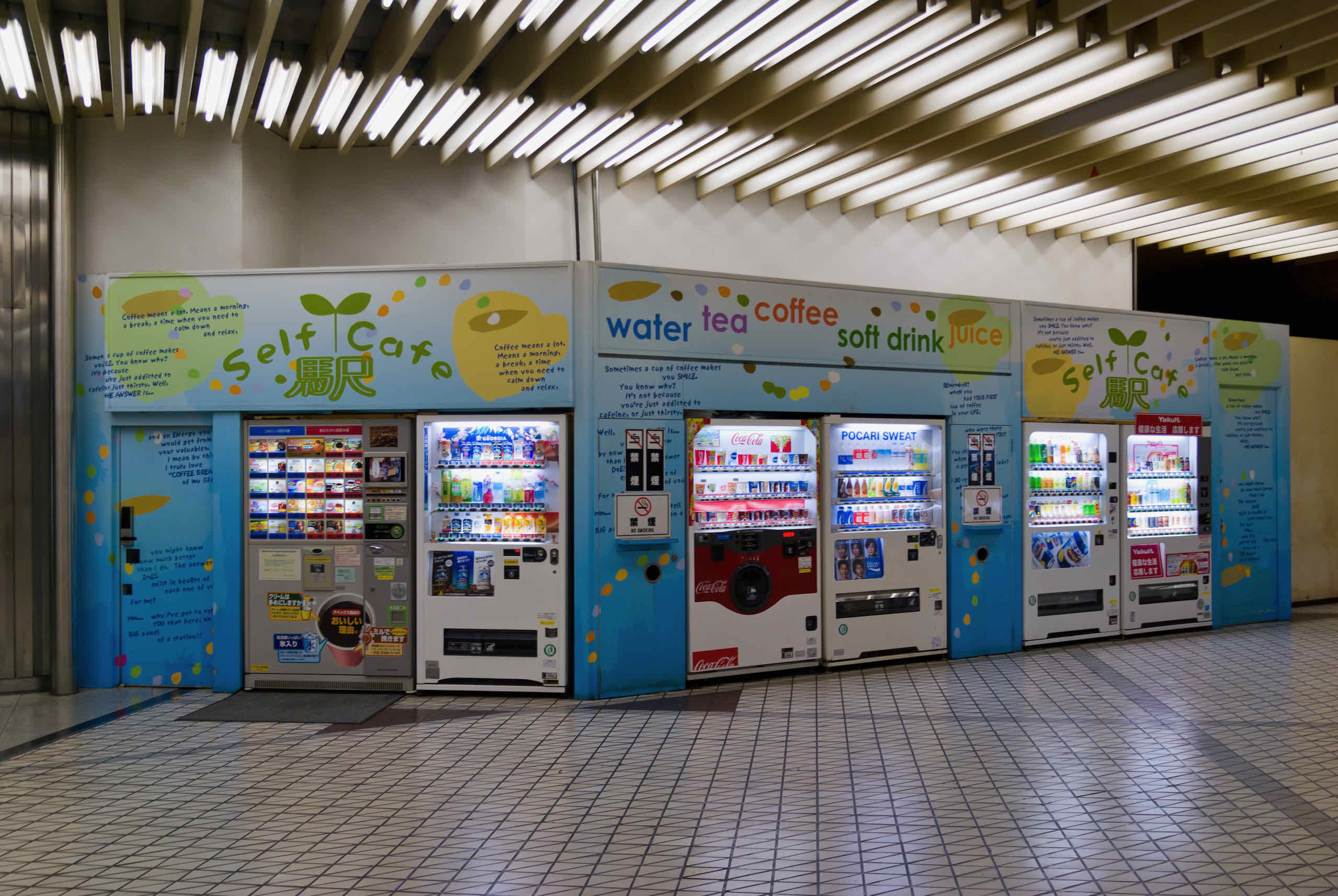
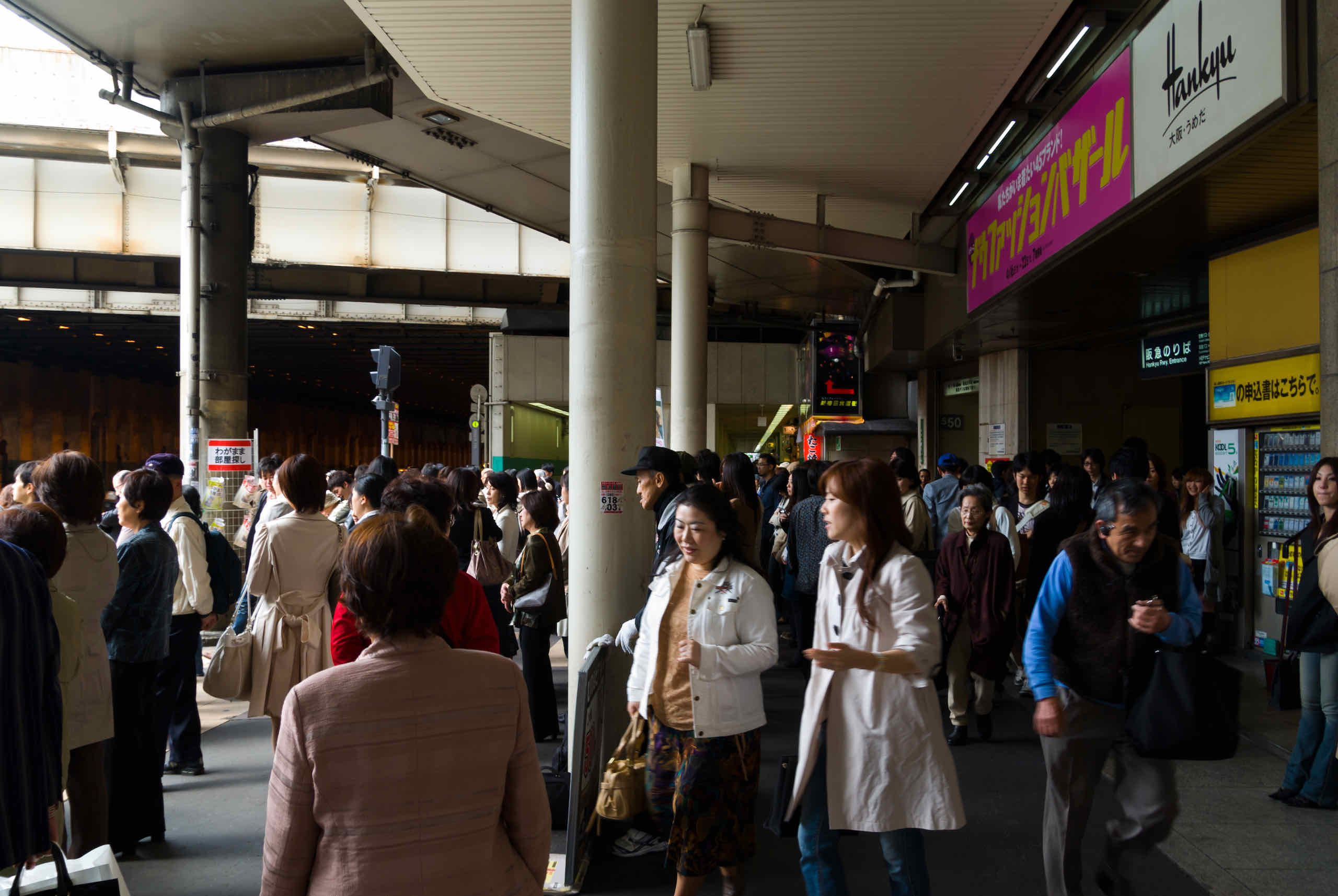
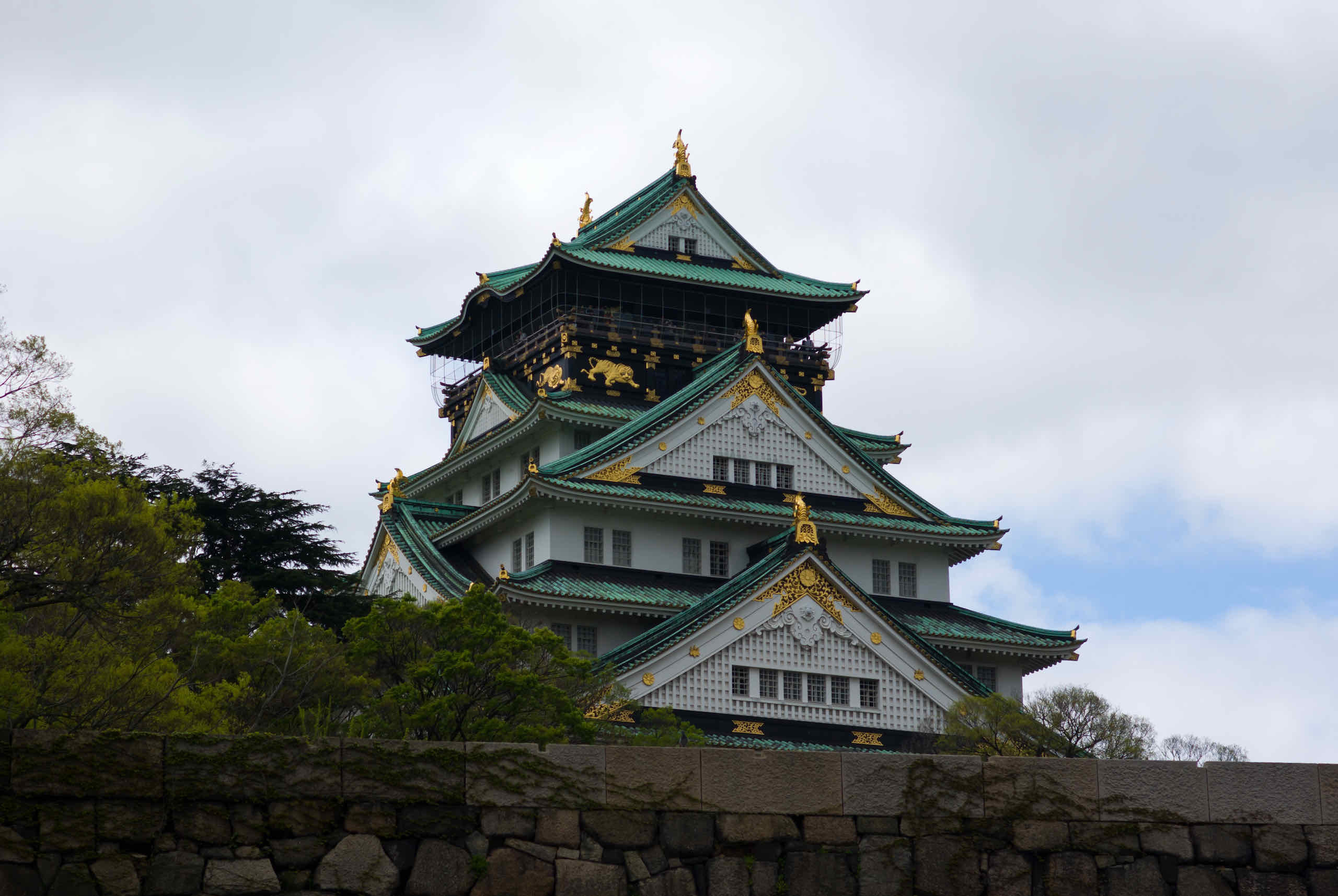
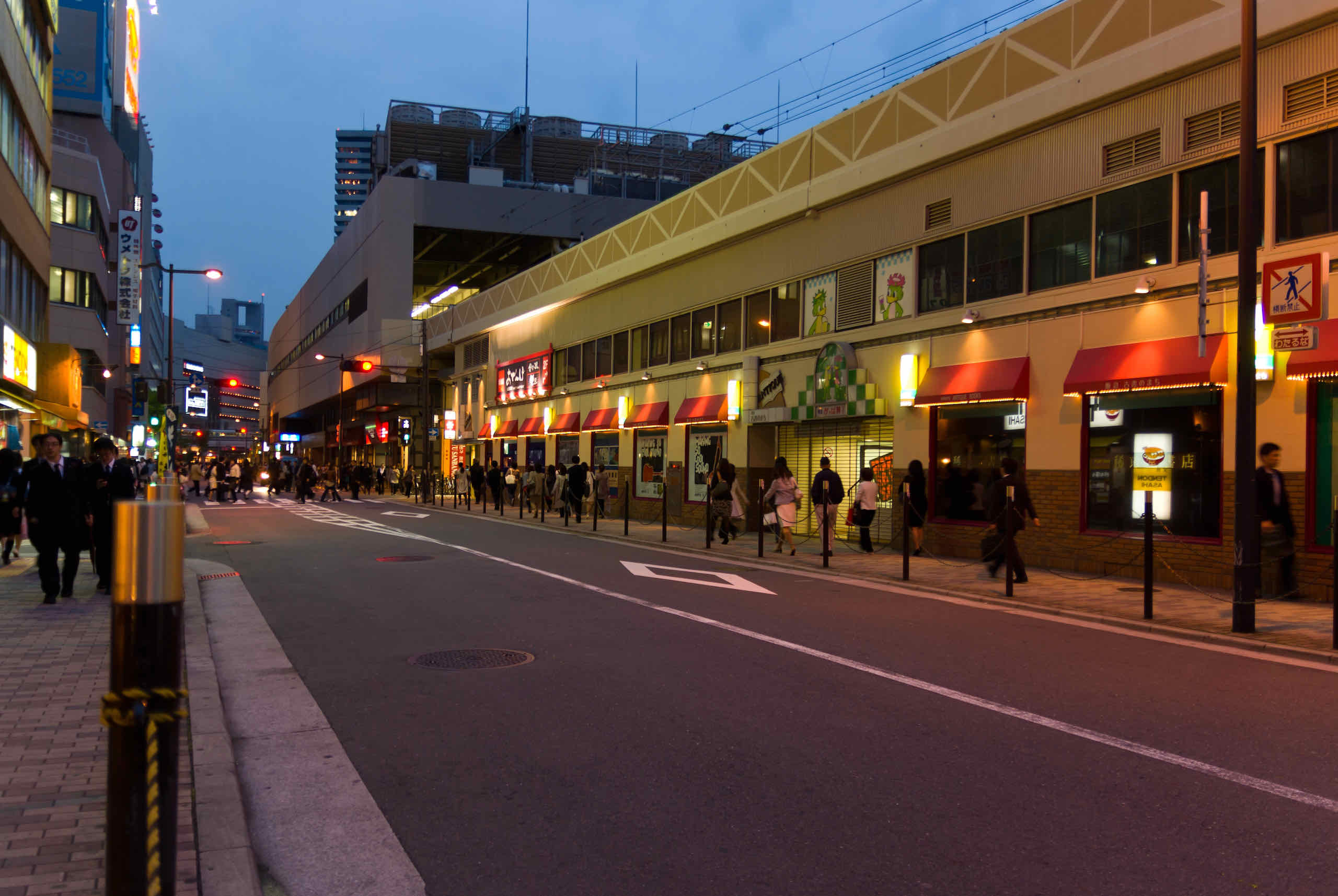
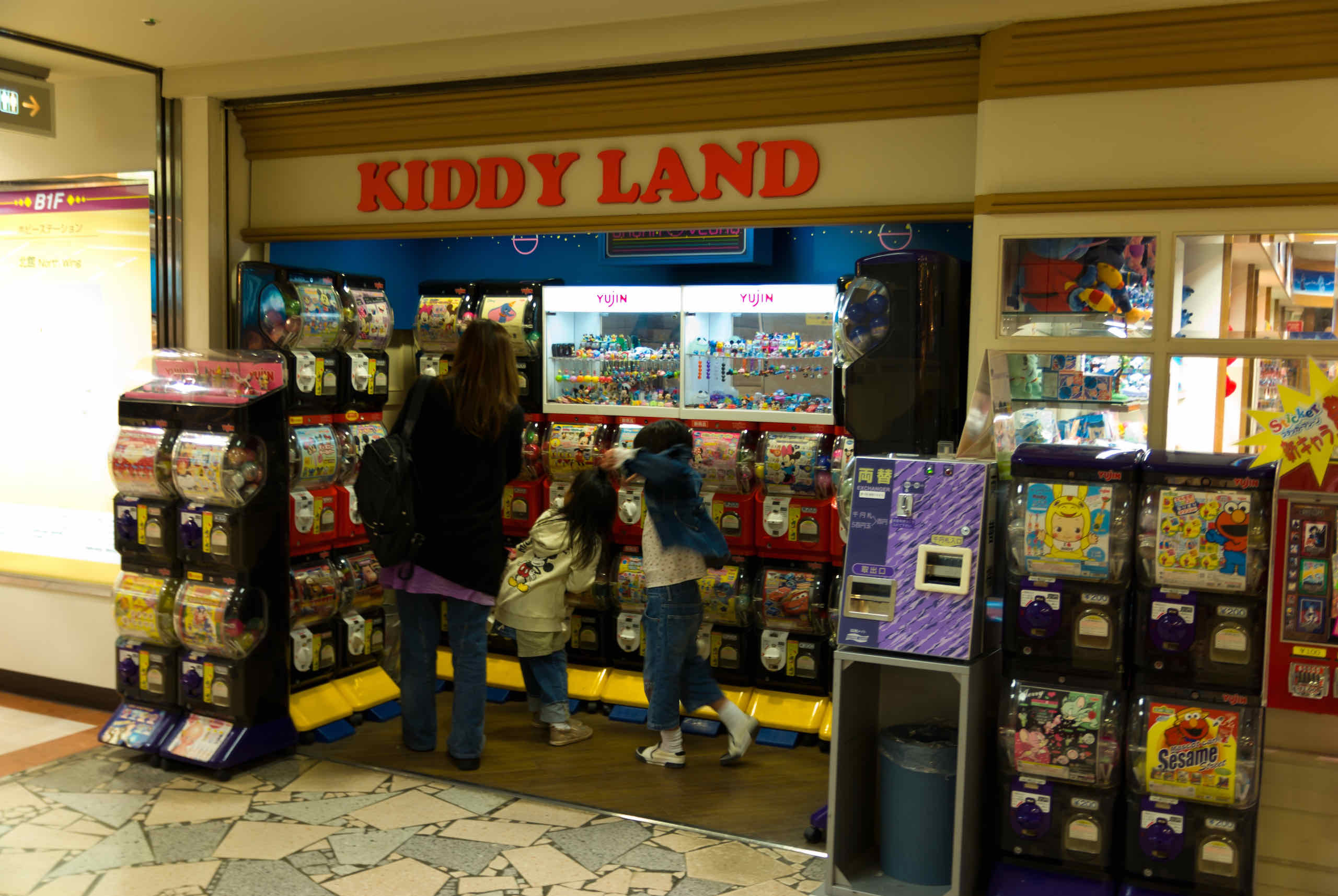
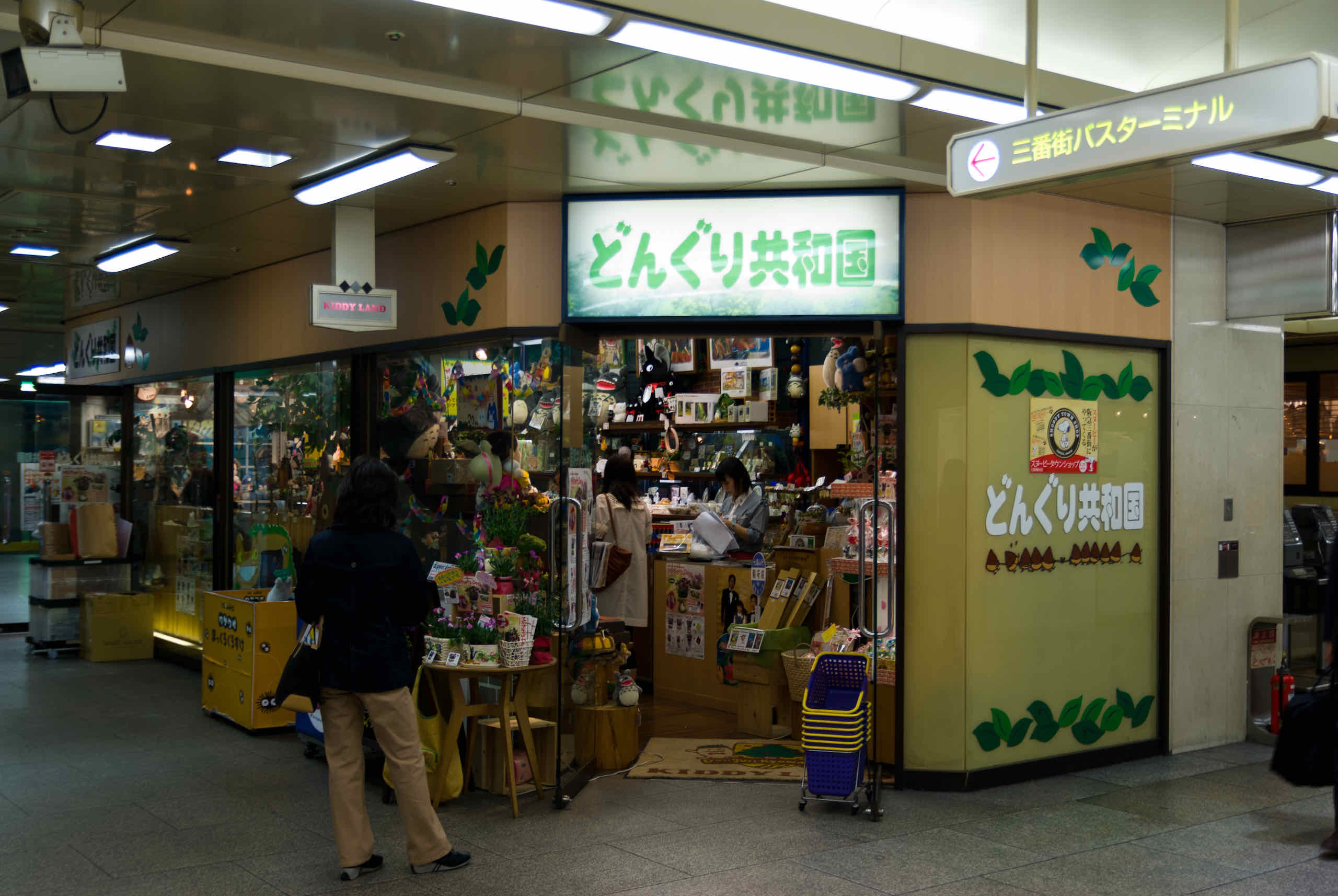
Chris, I'm greatly enjoying your journey, and your photographs. This set is particularly glorious!
My apologies for intruding, but I found your blog via a search for the location of "Whisper of the Heart", and then had to backtrack. It is so good!
My name is Ged Maybury, of Brisbane, and I am a student of the language and culture of Japan,(although a bit slow on the uptake, as I am pushing 60.)
Please forgive me, and allow me to continue if I may.
ありがとう!
Thanks very much Ged and hope you enjoy the other photographs as well.